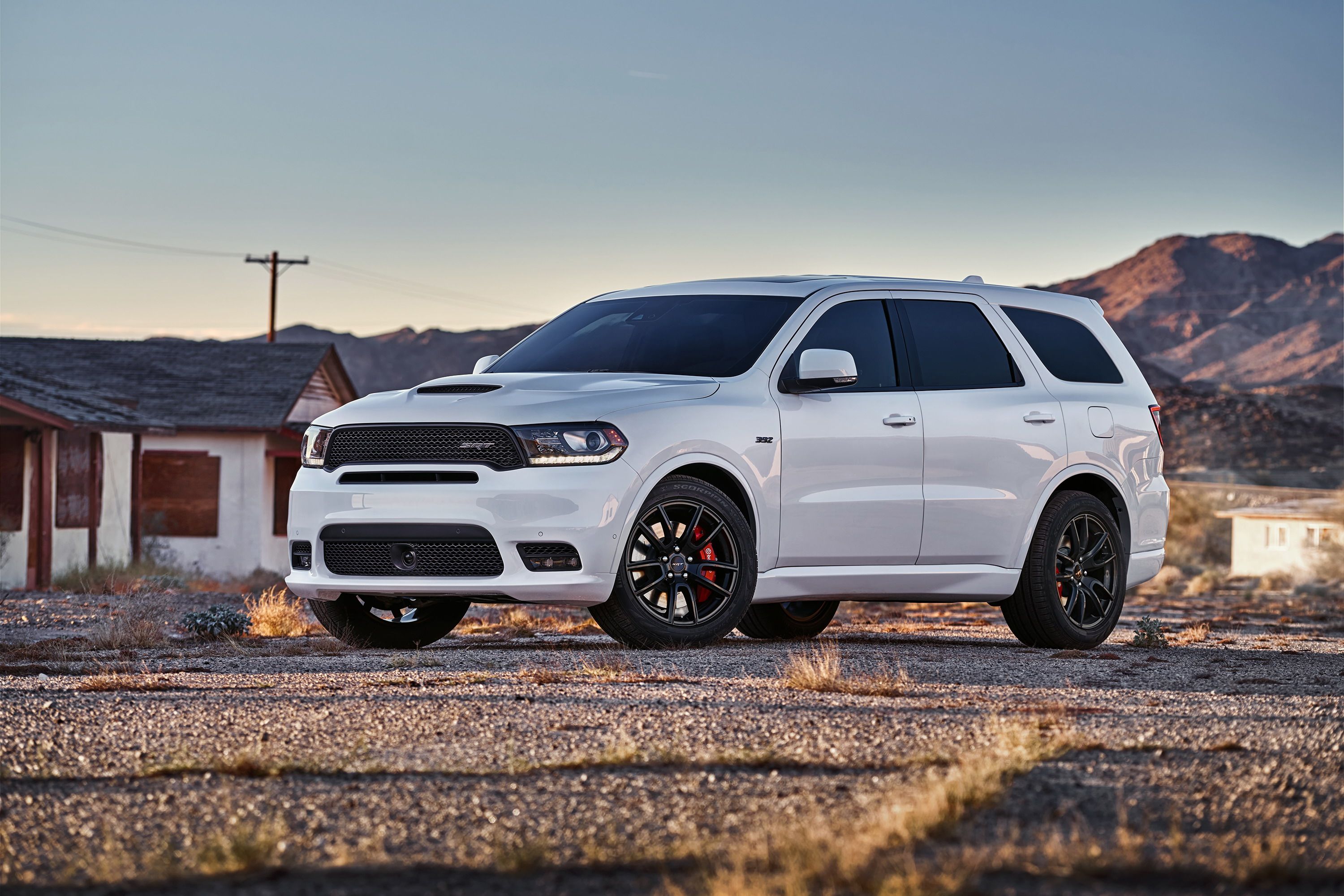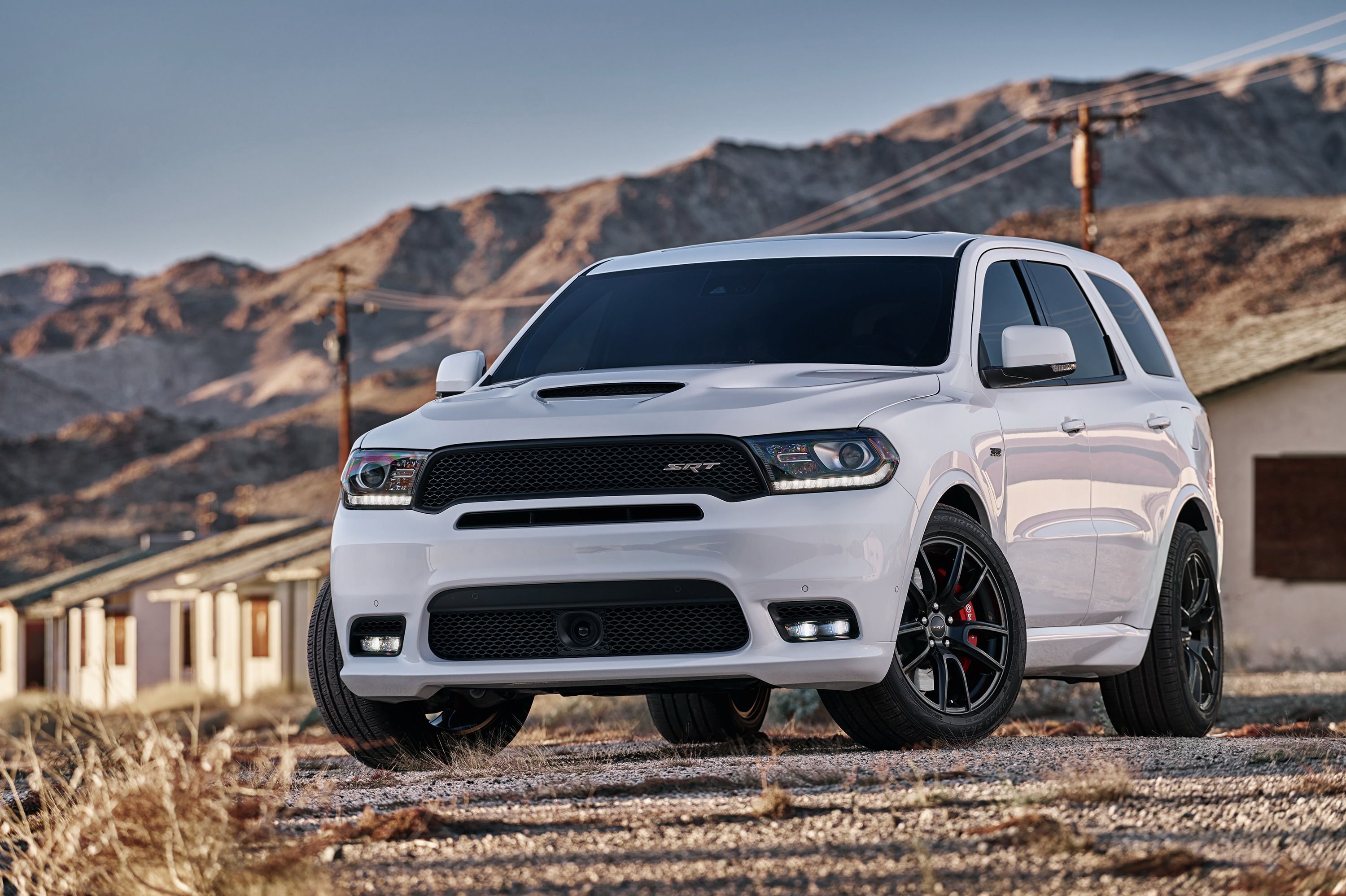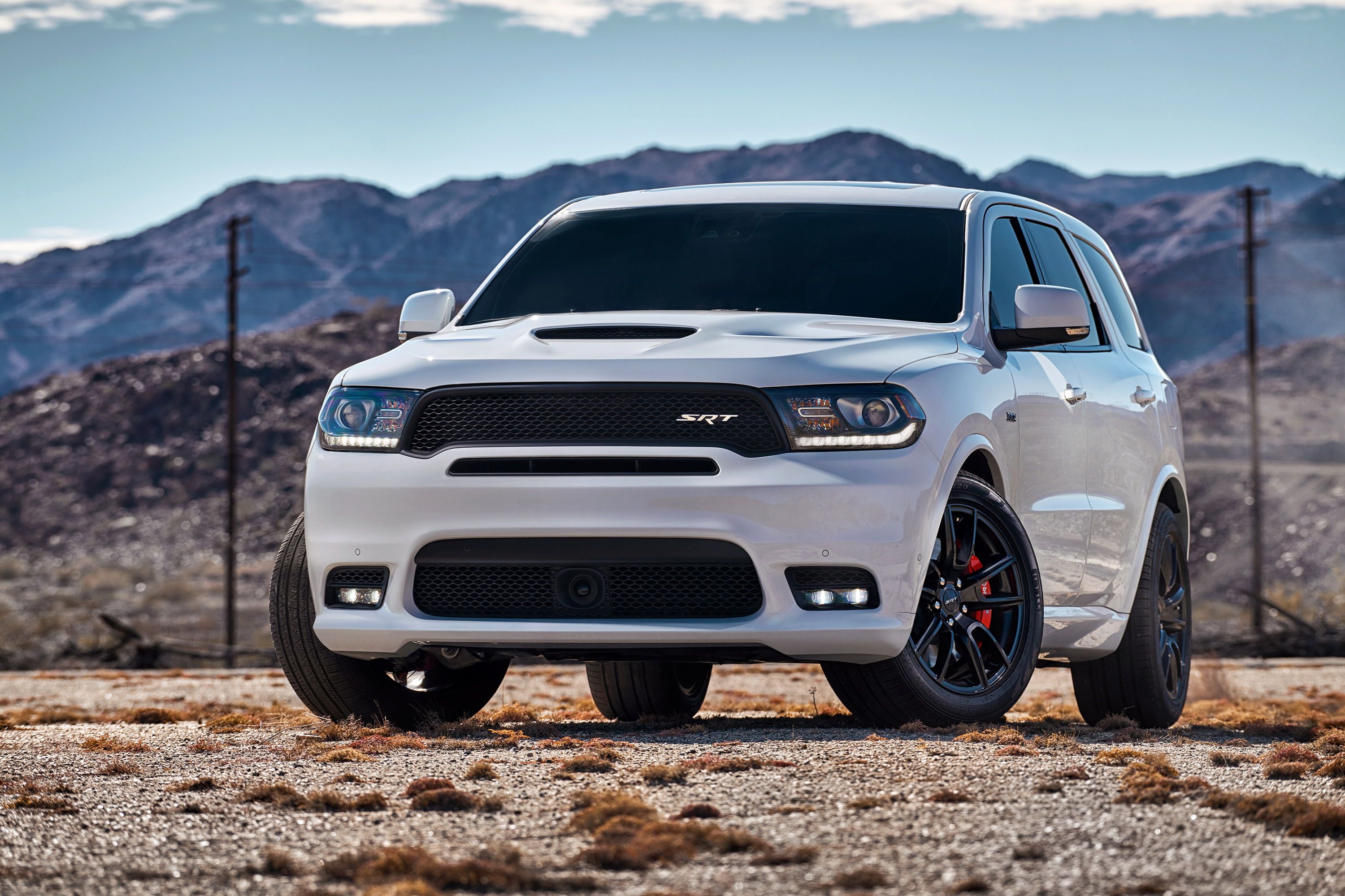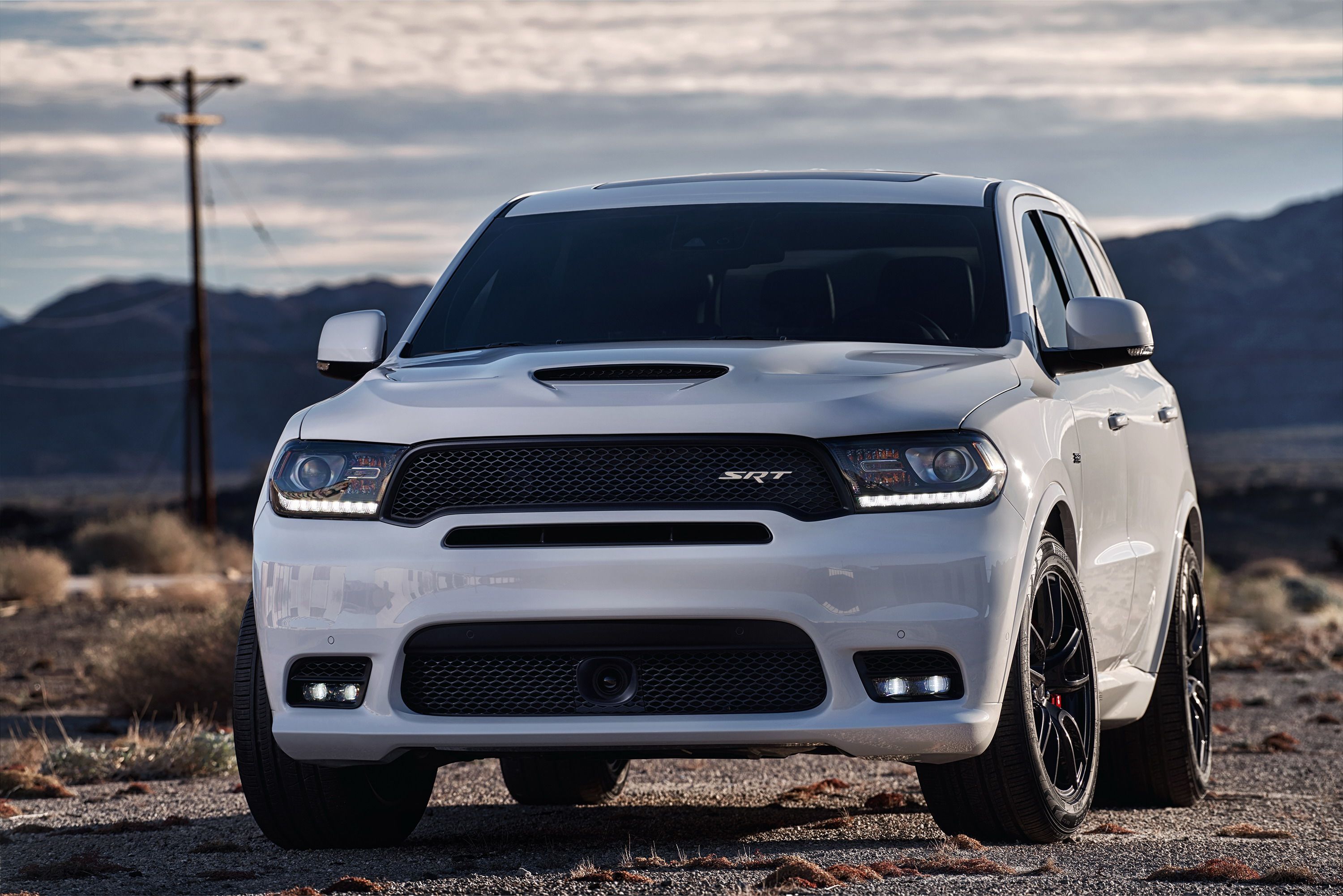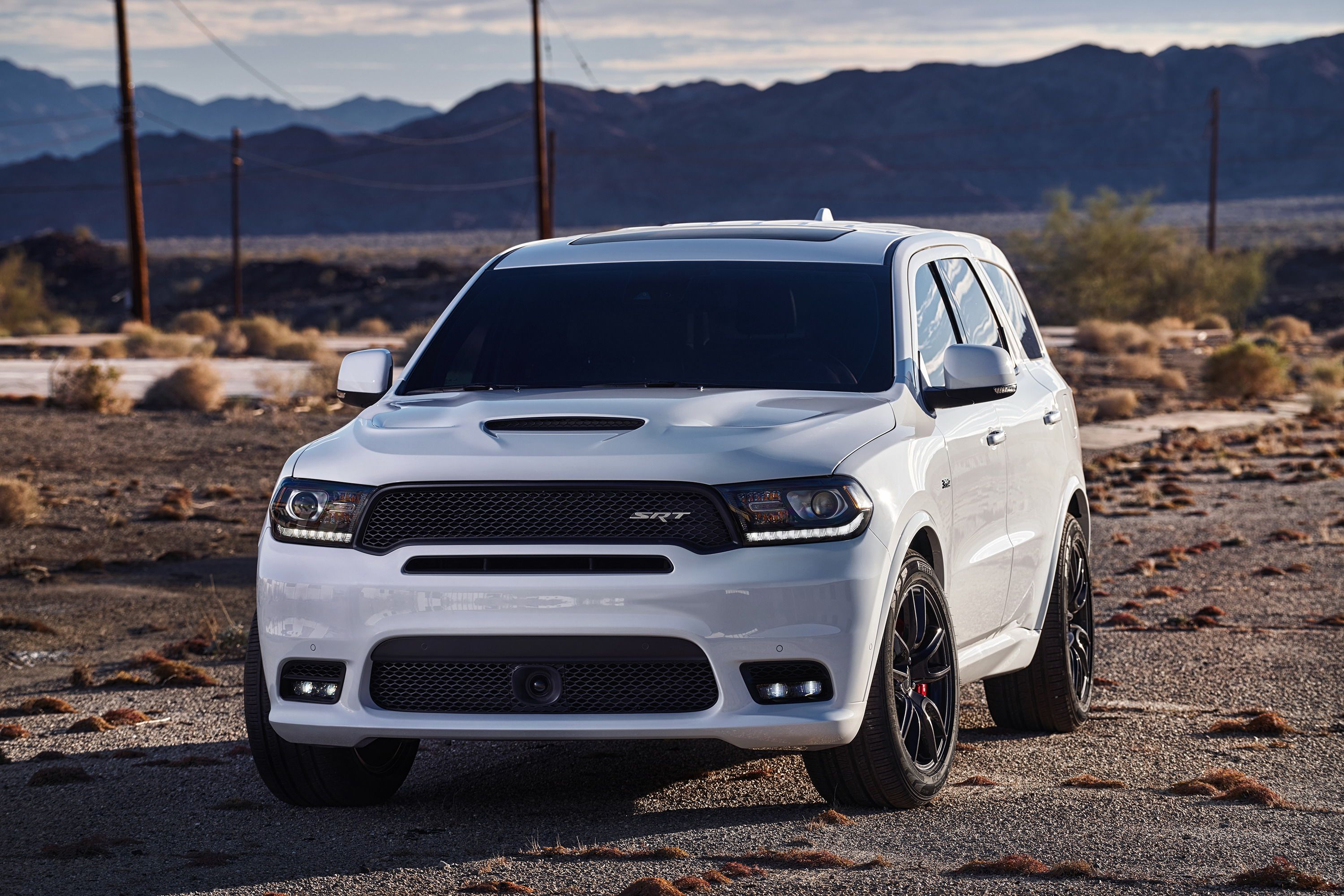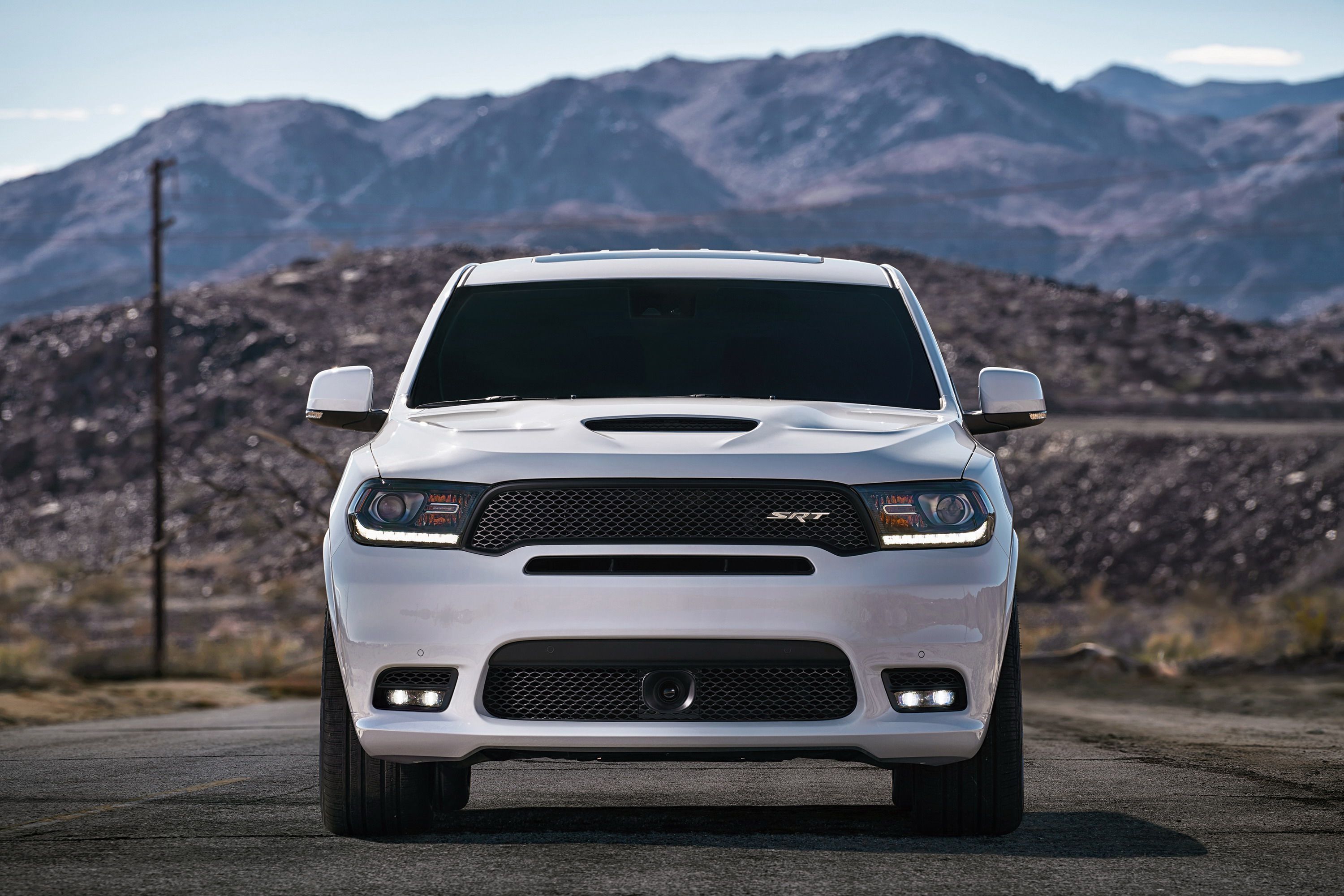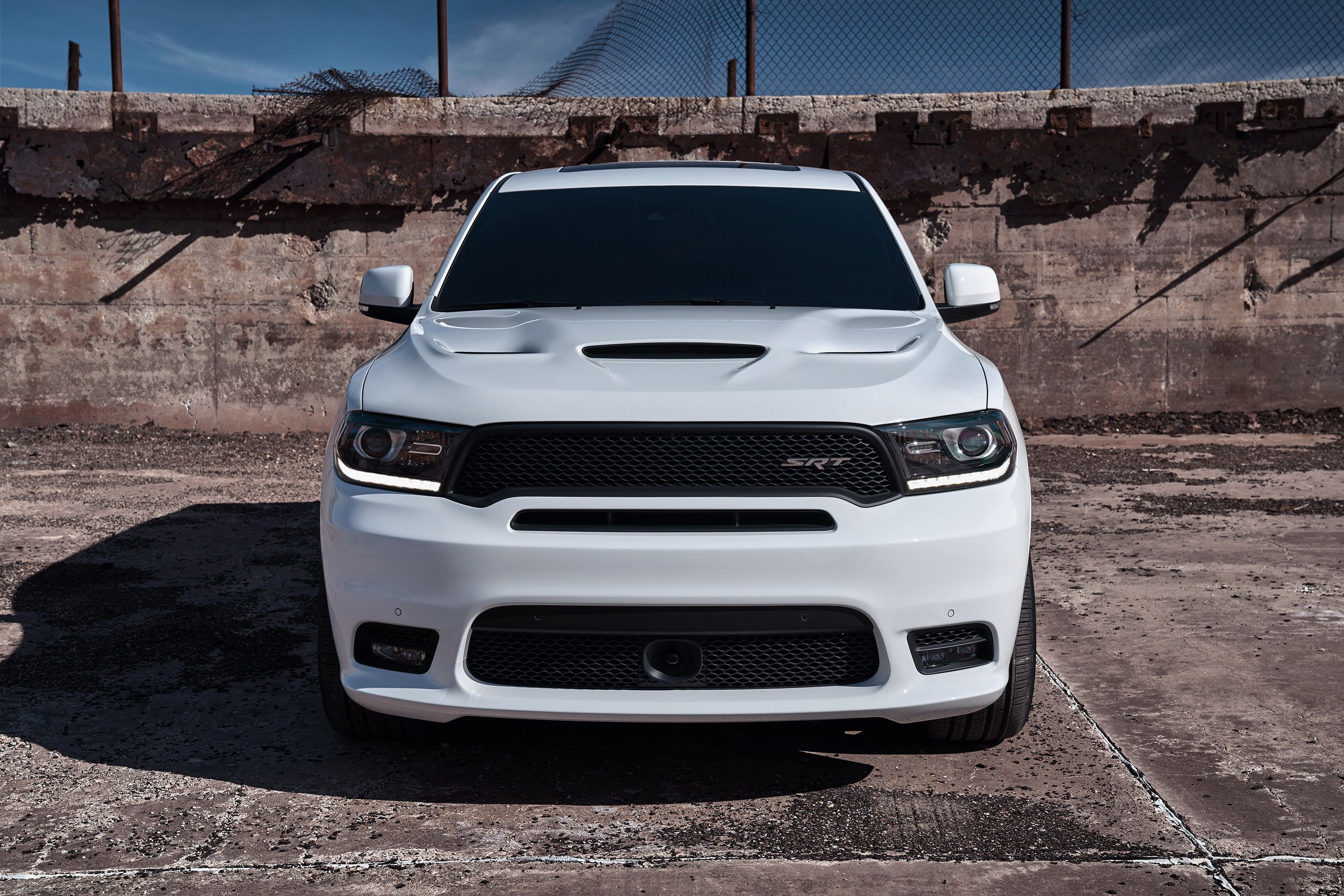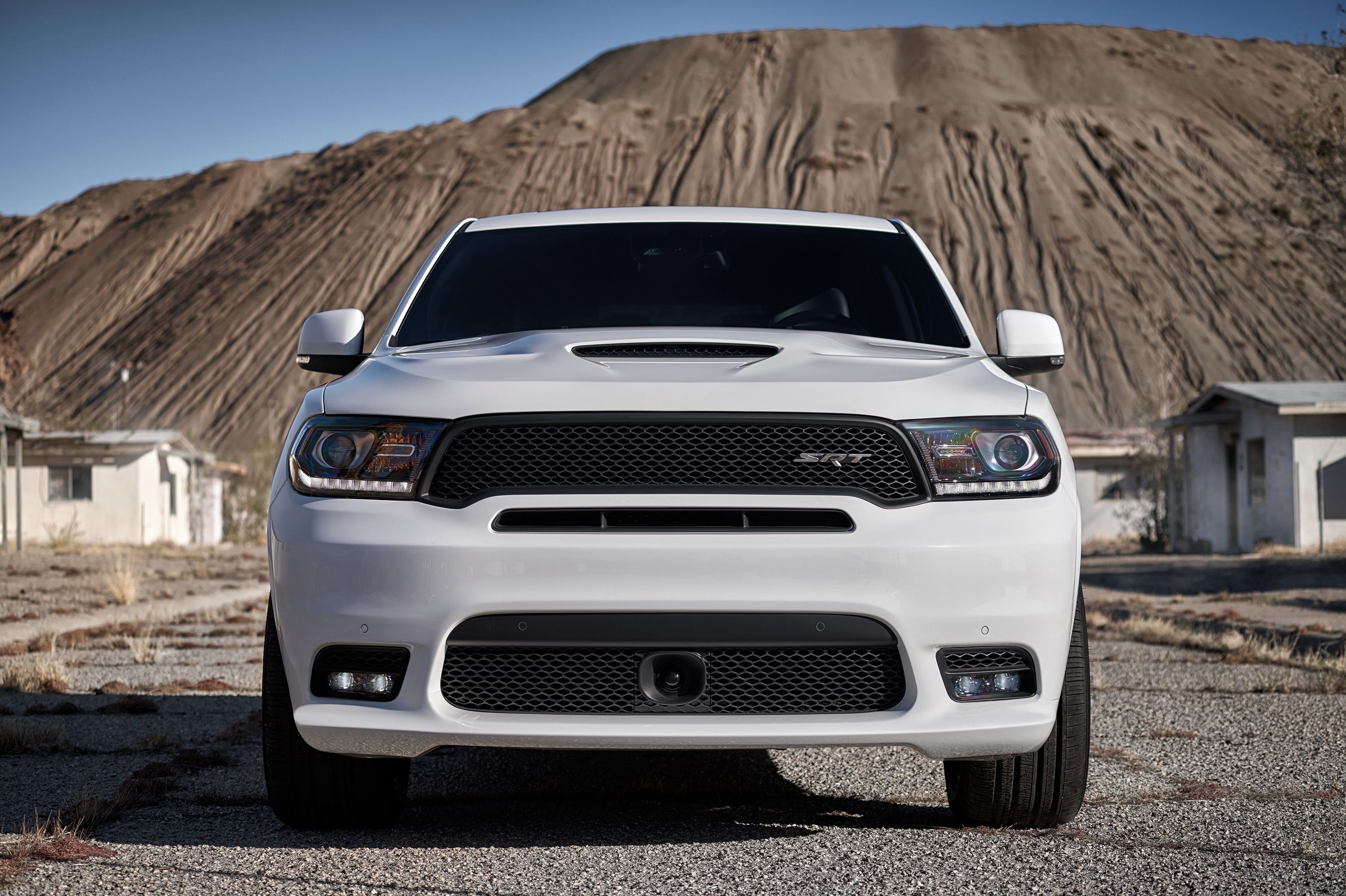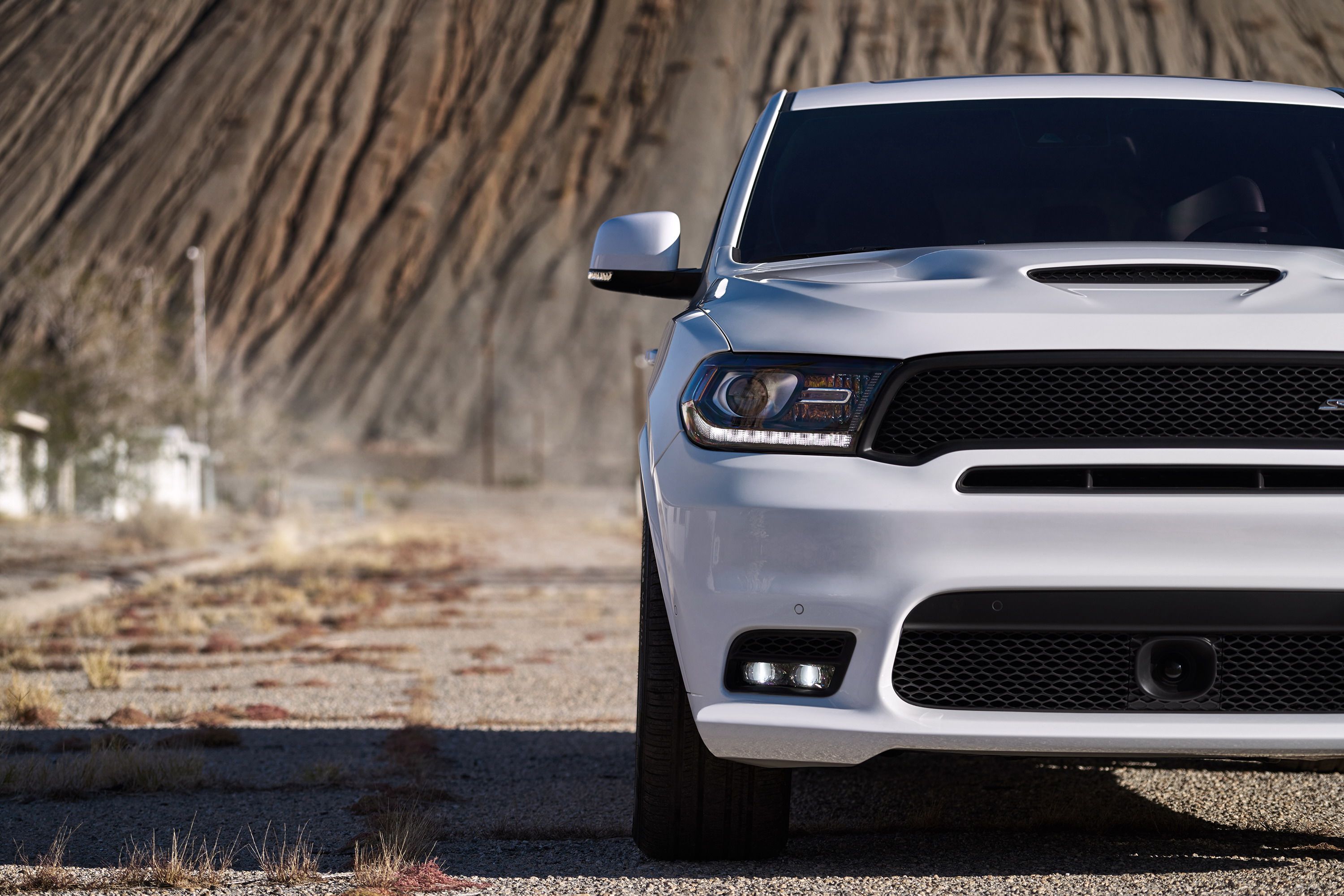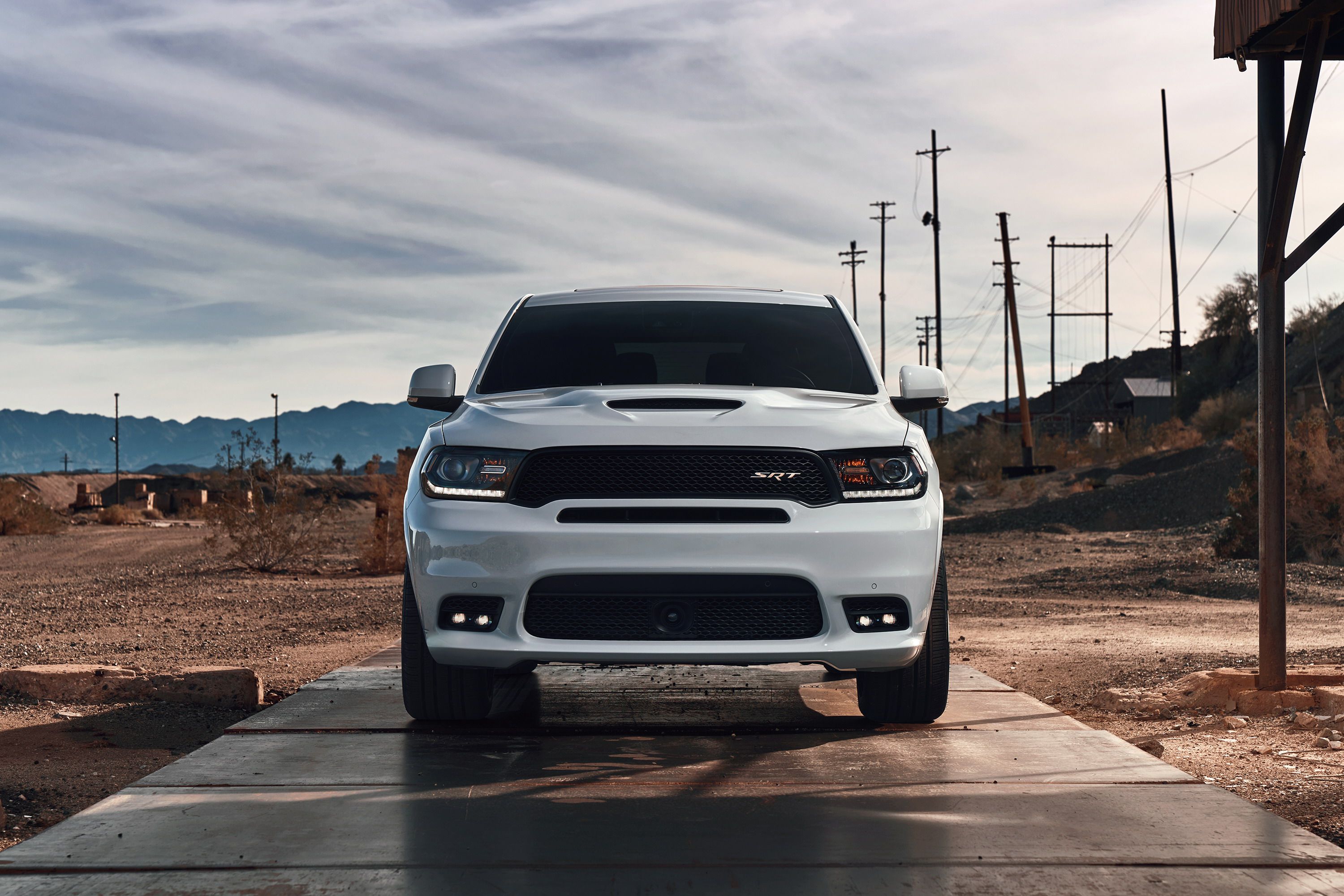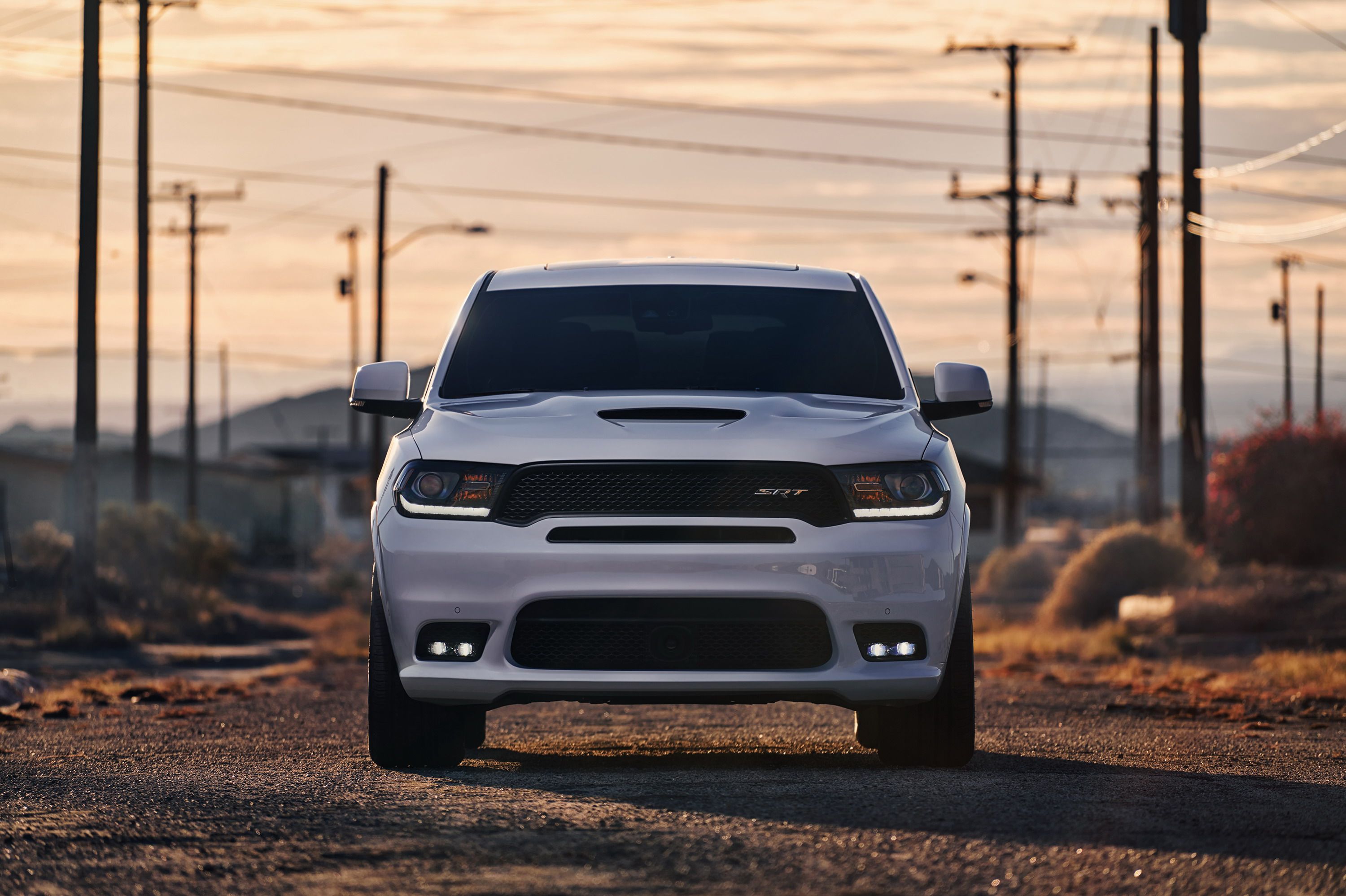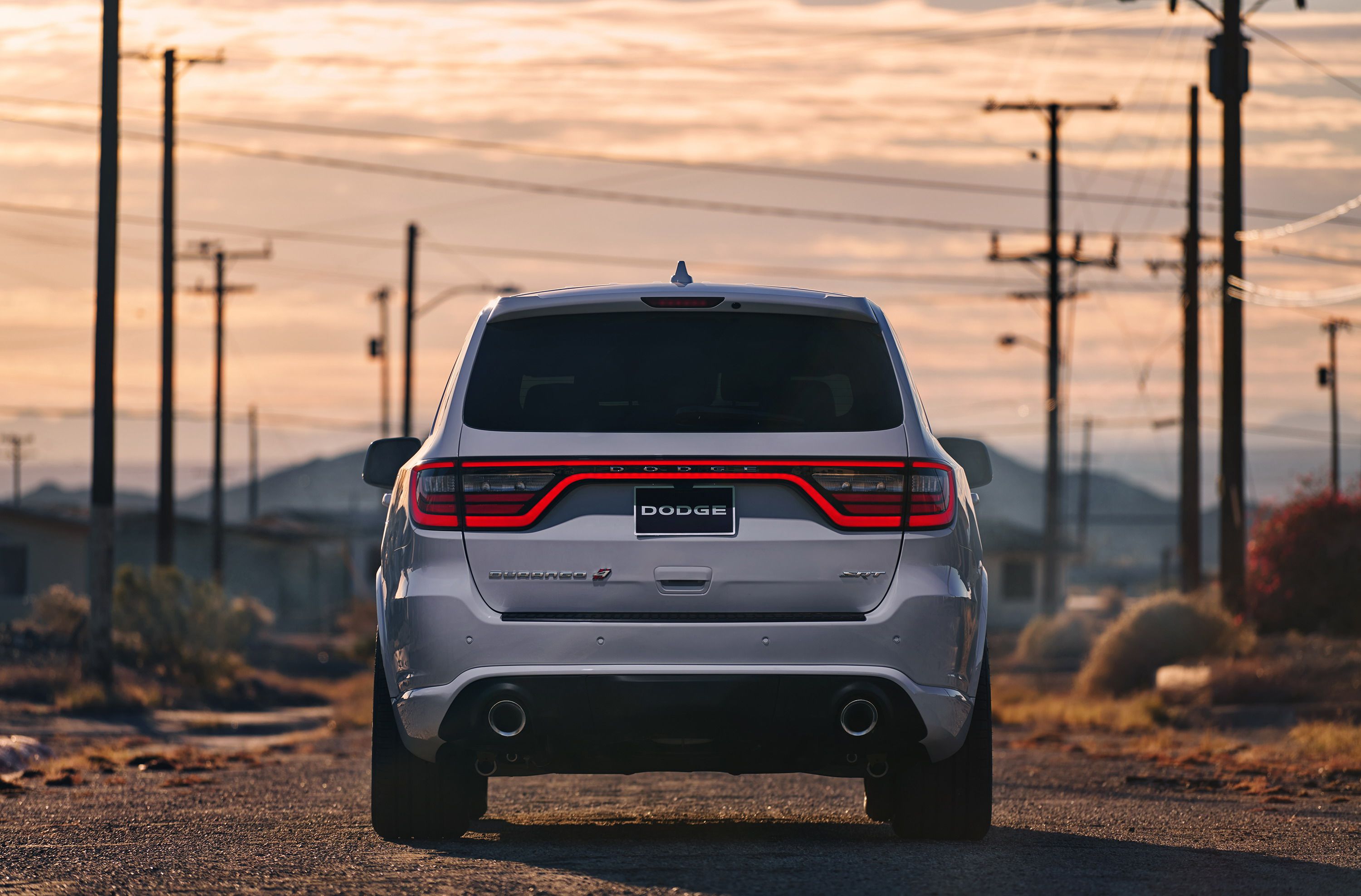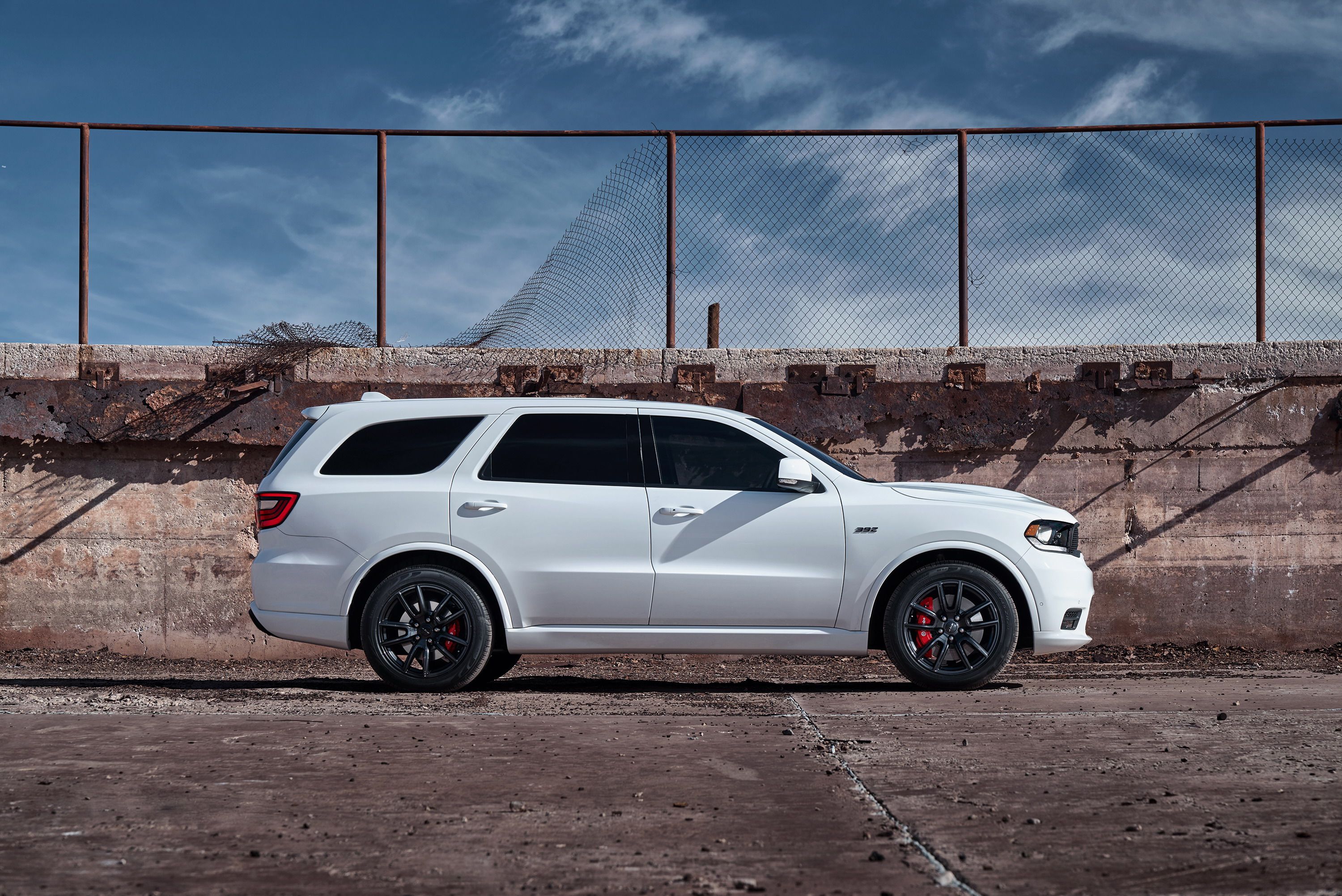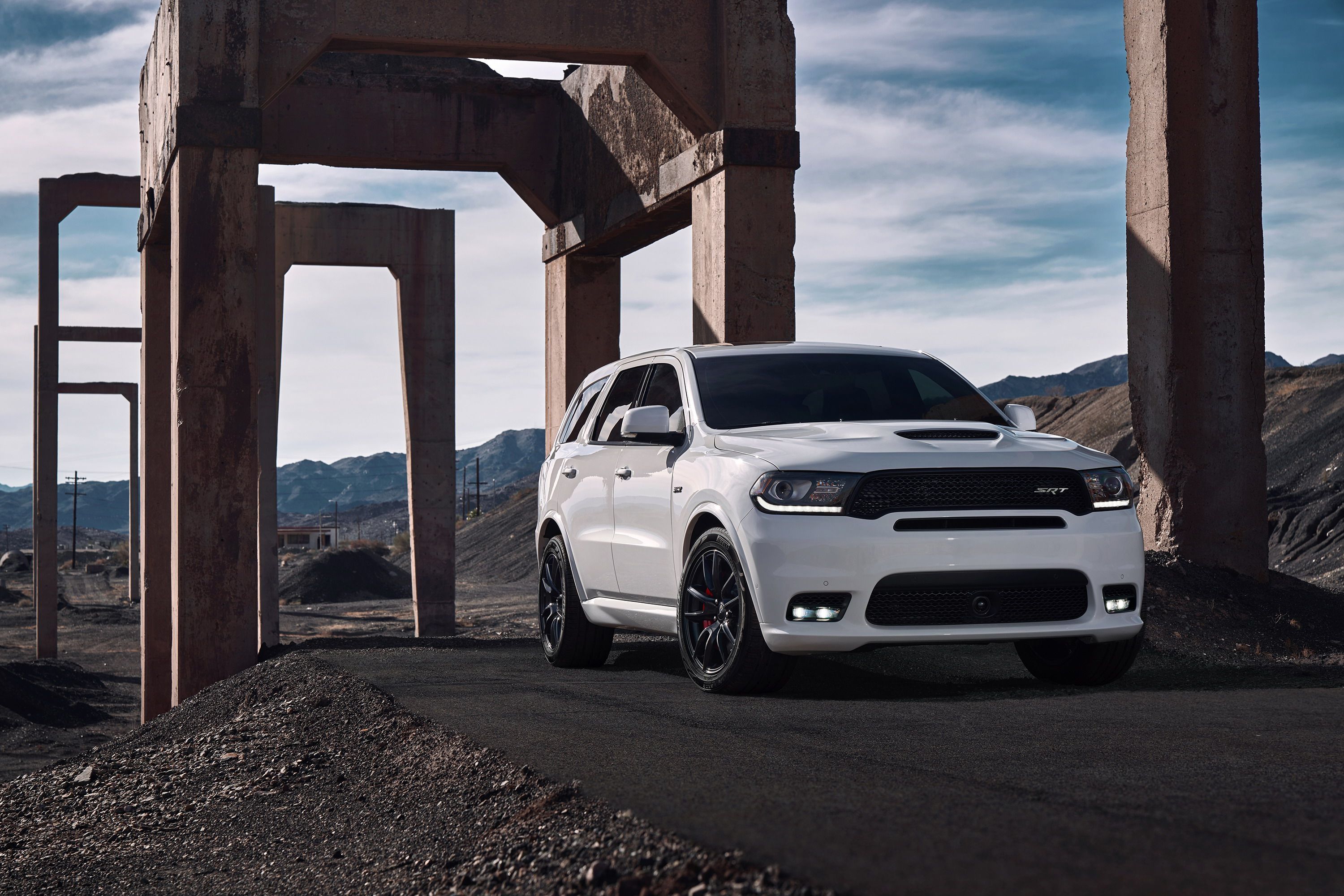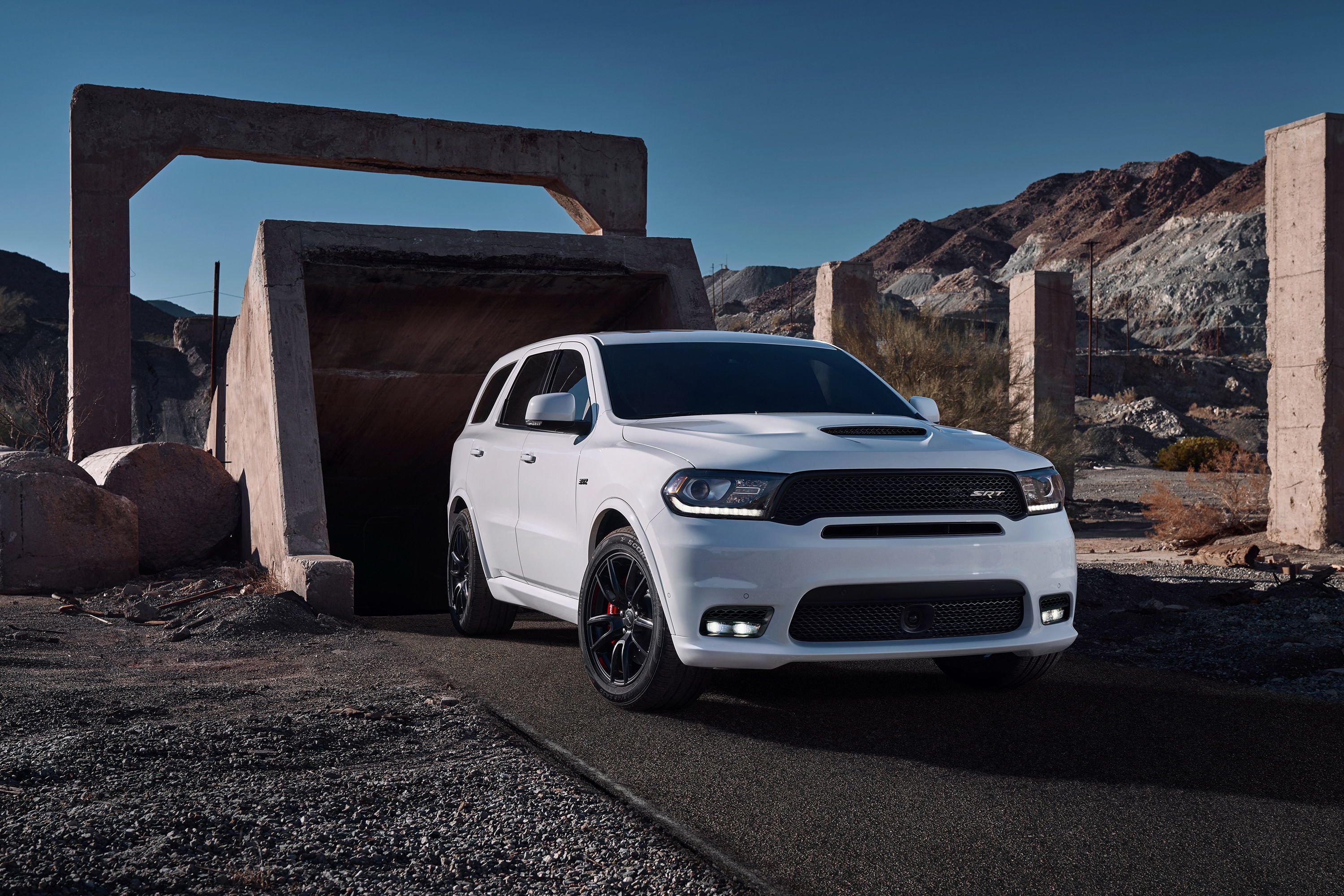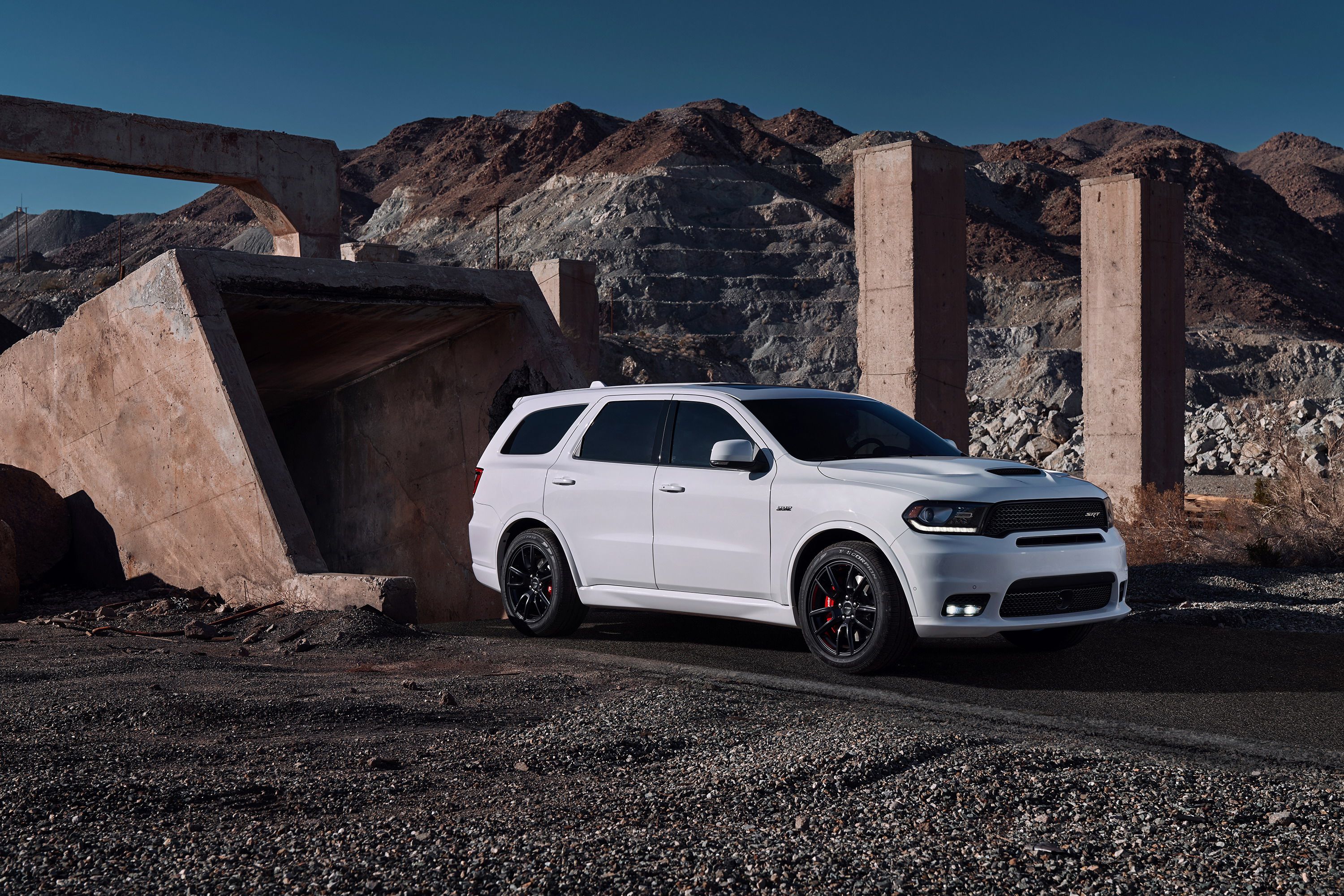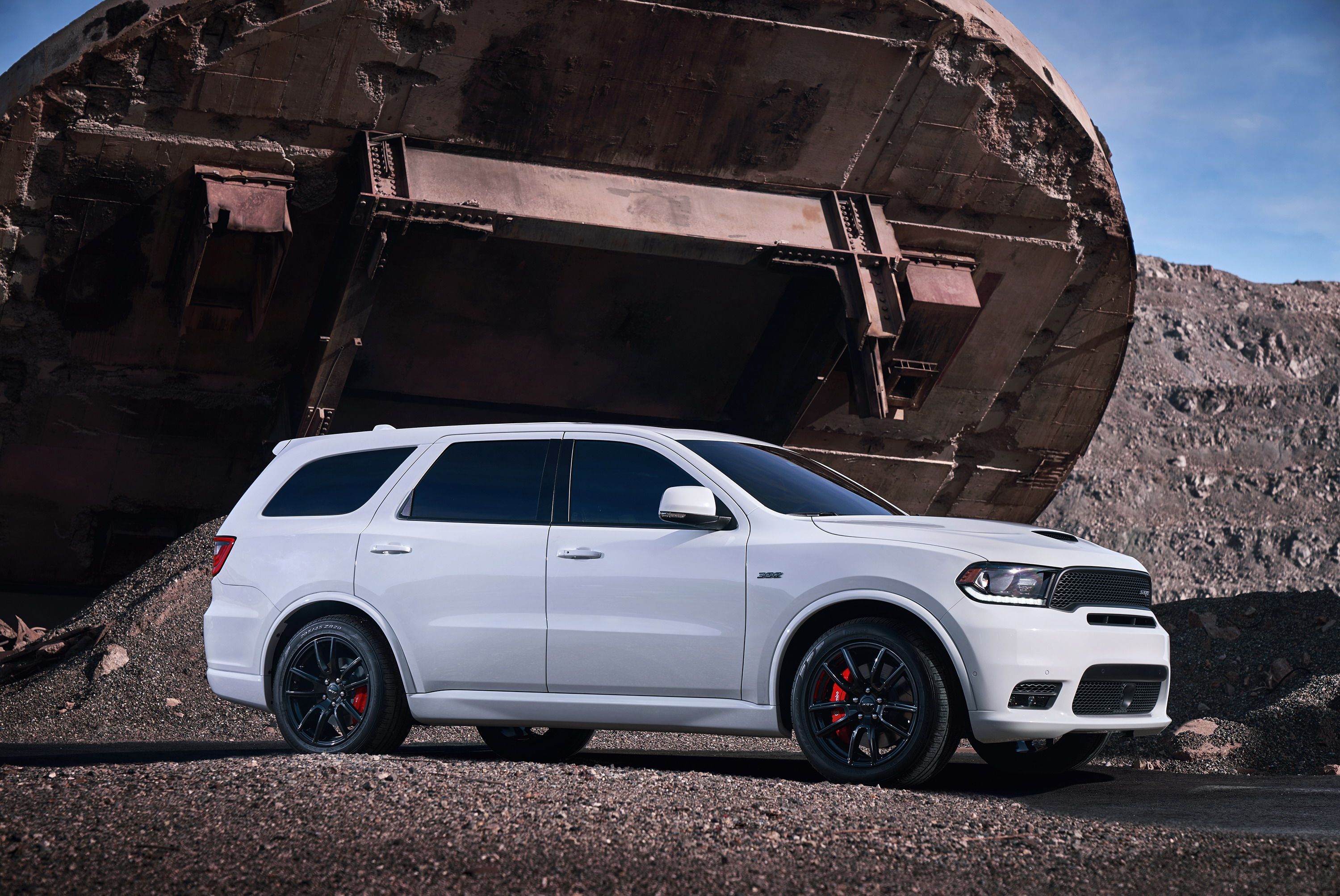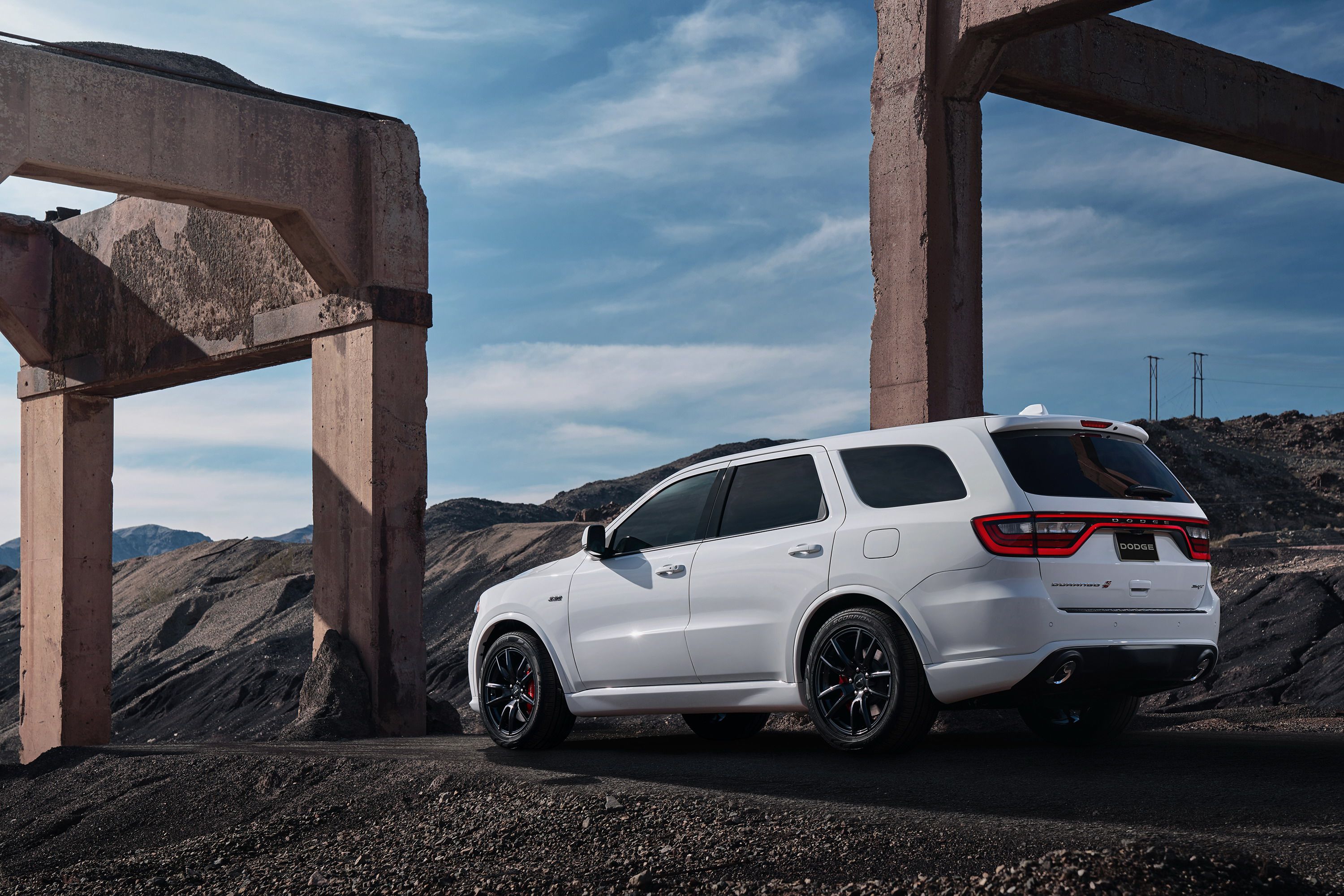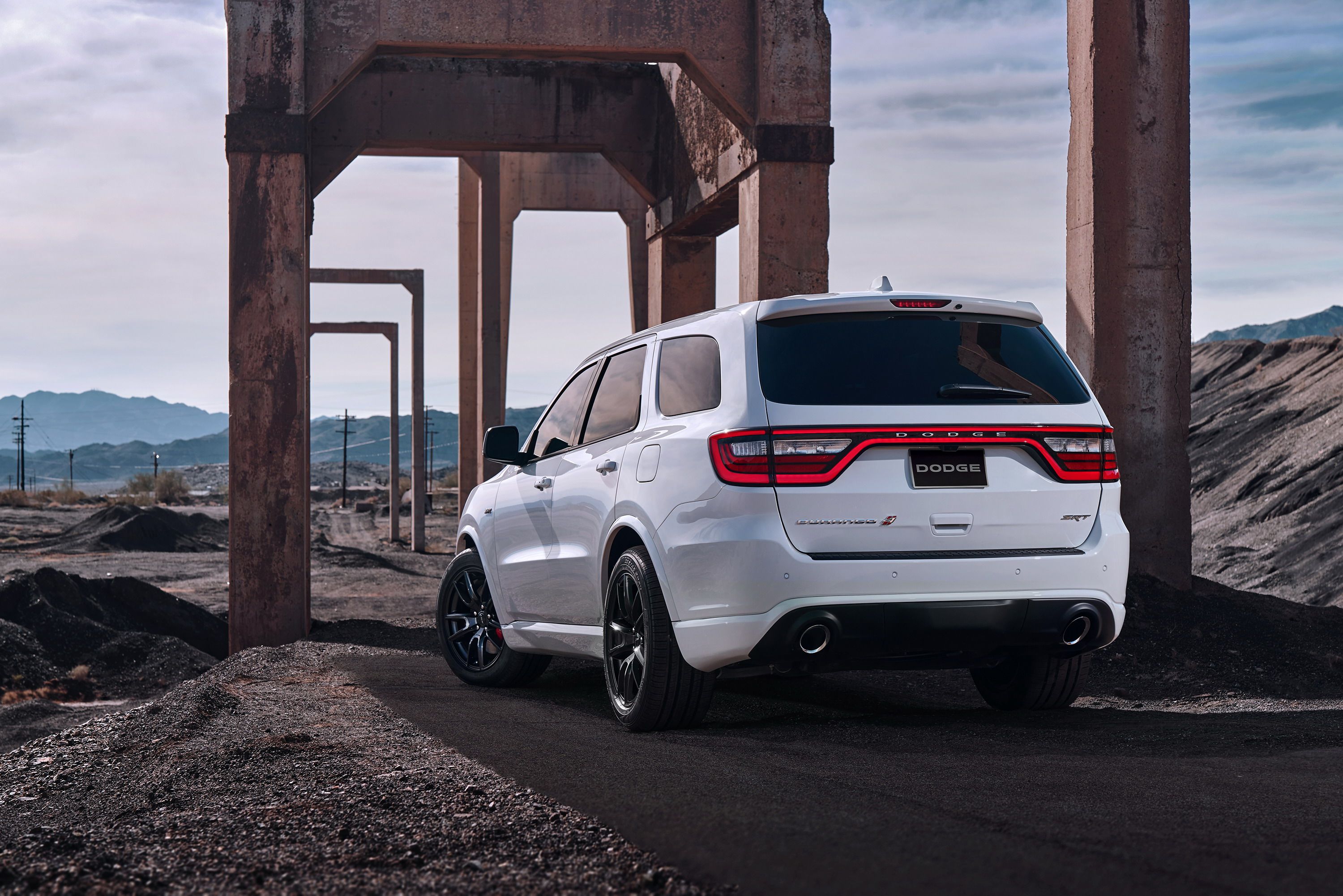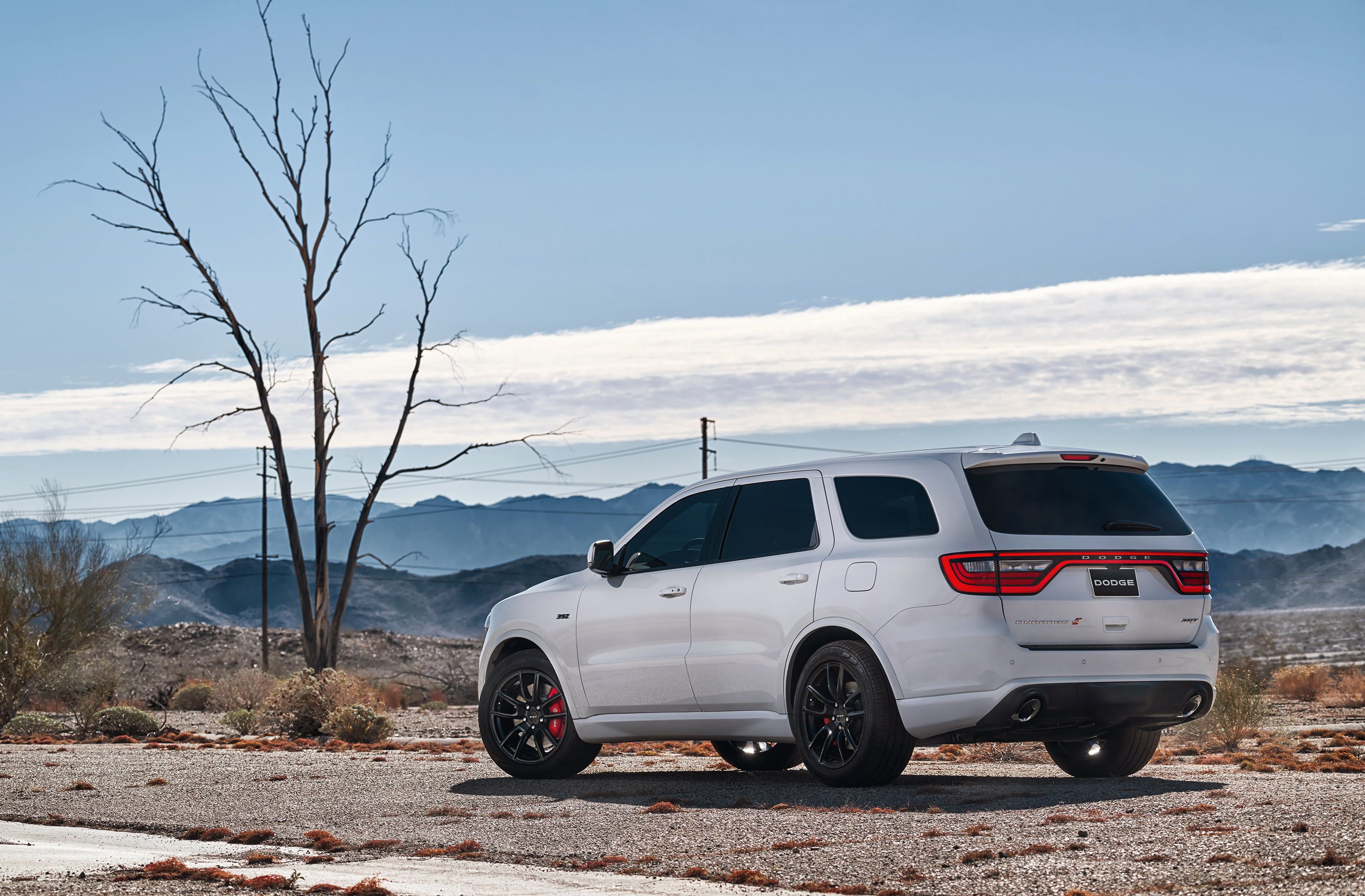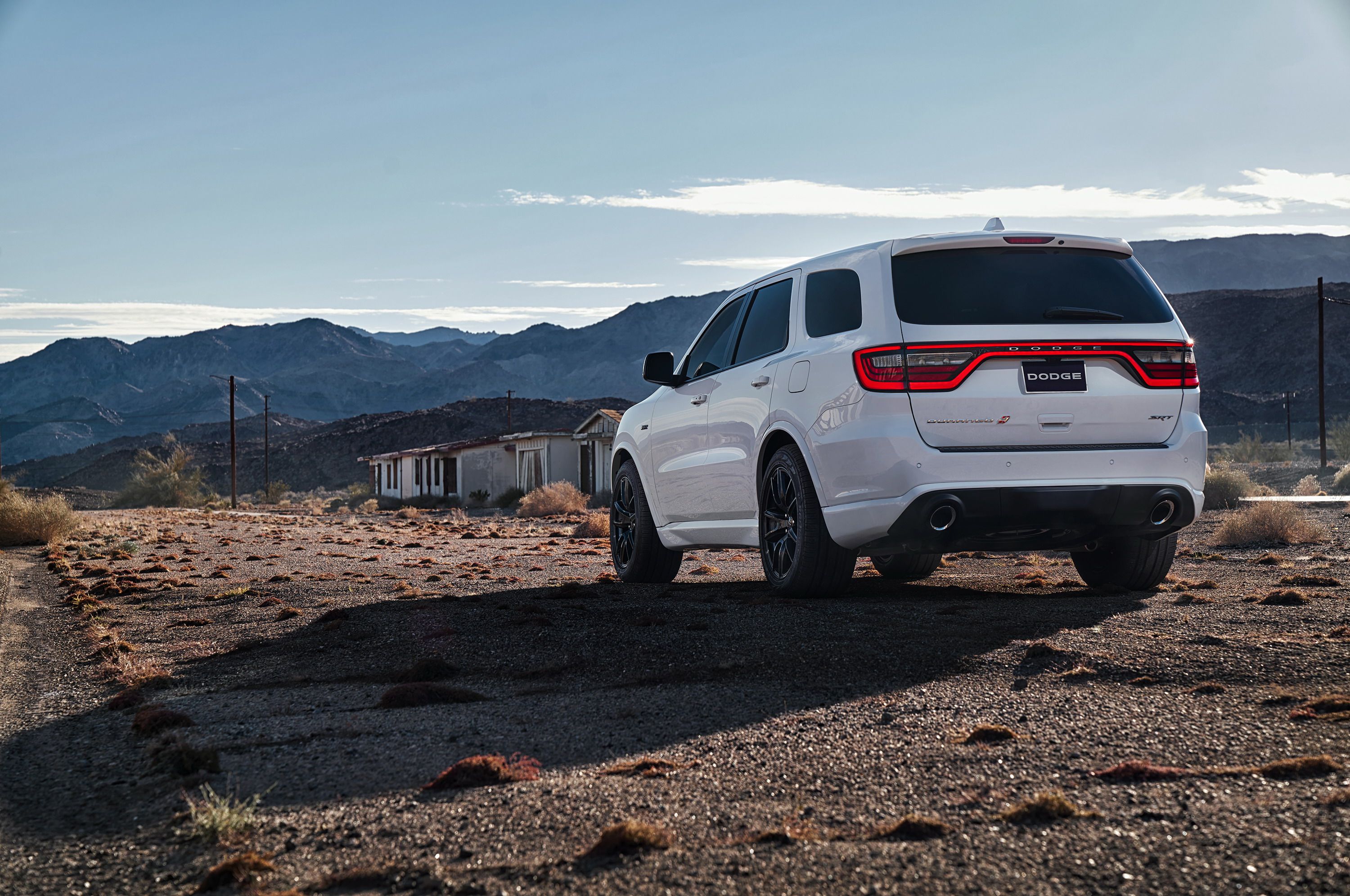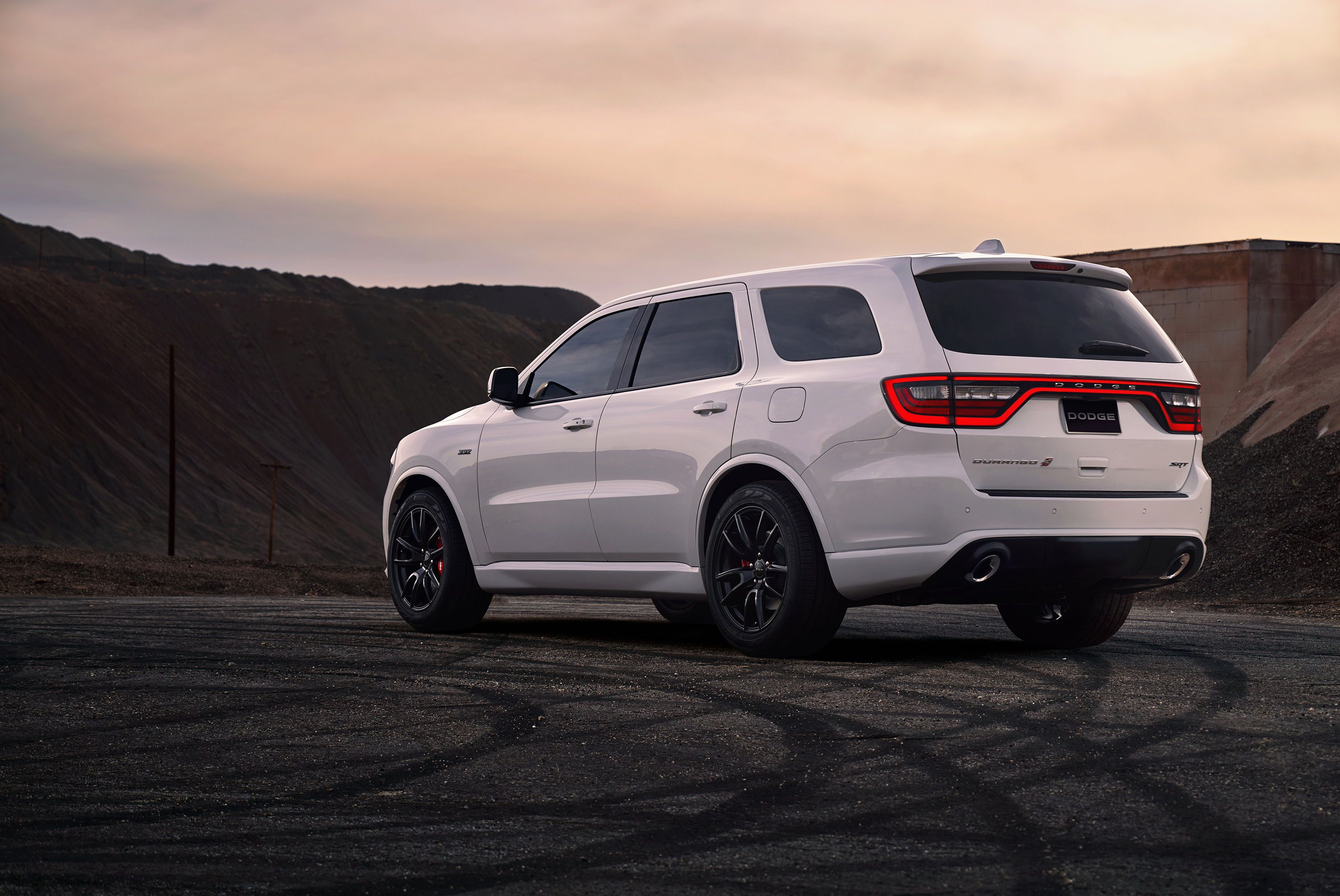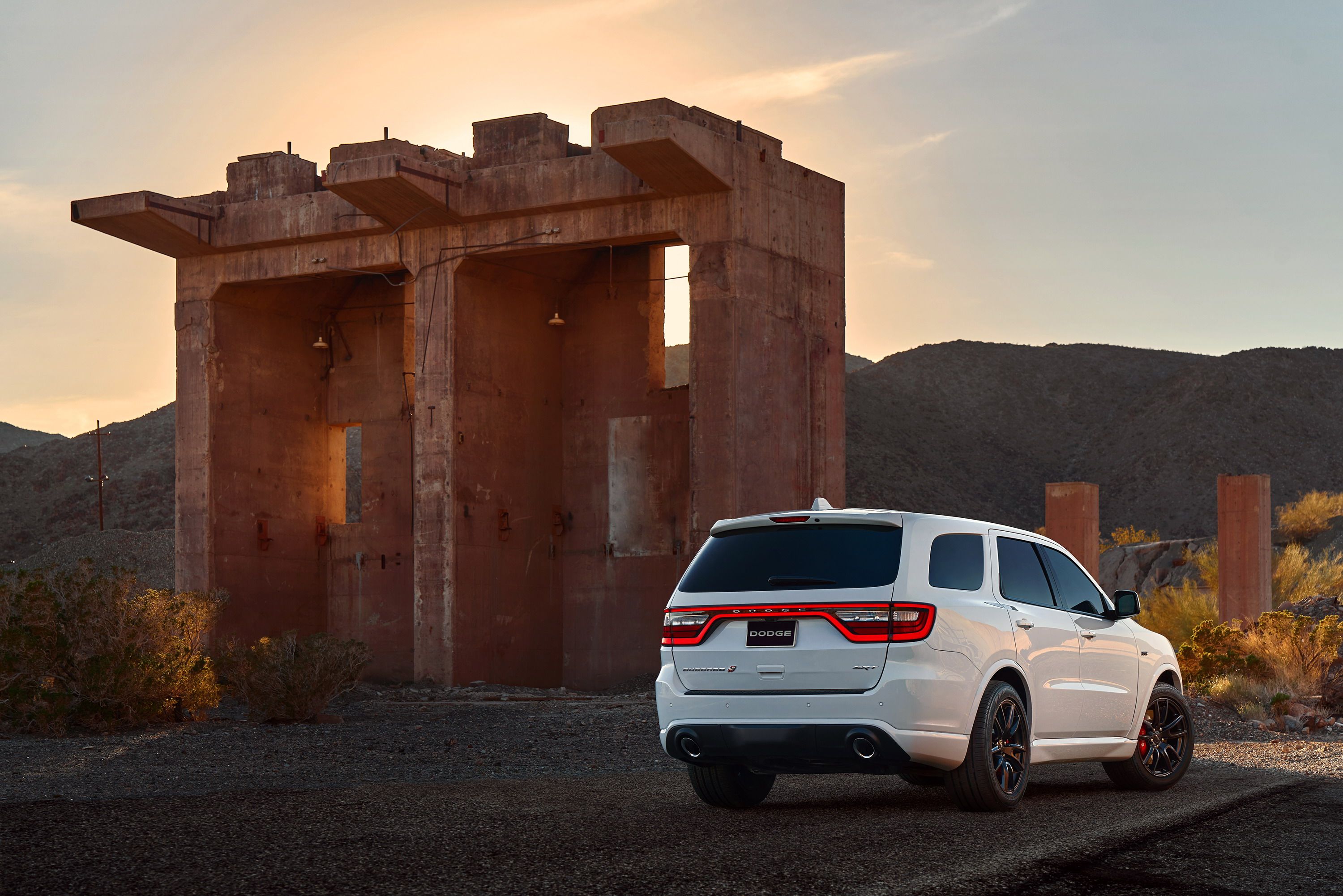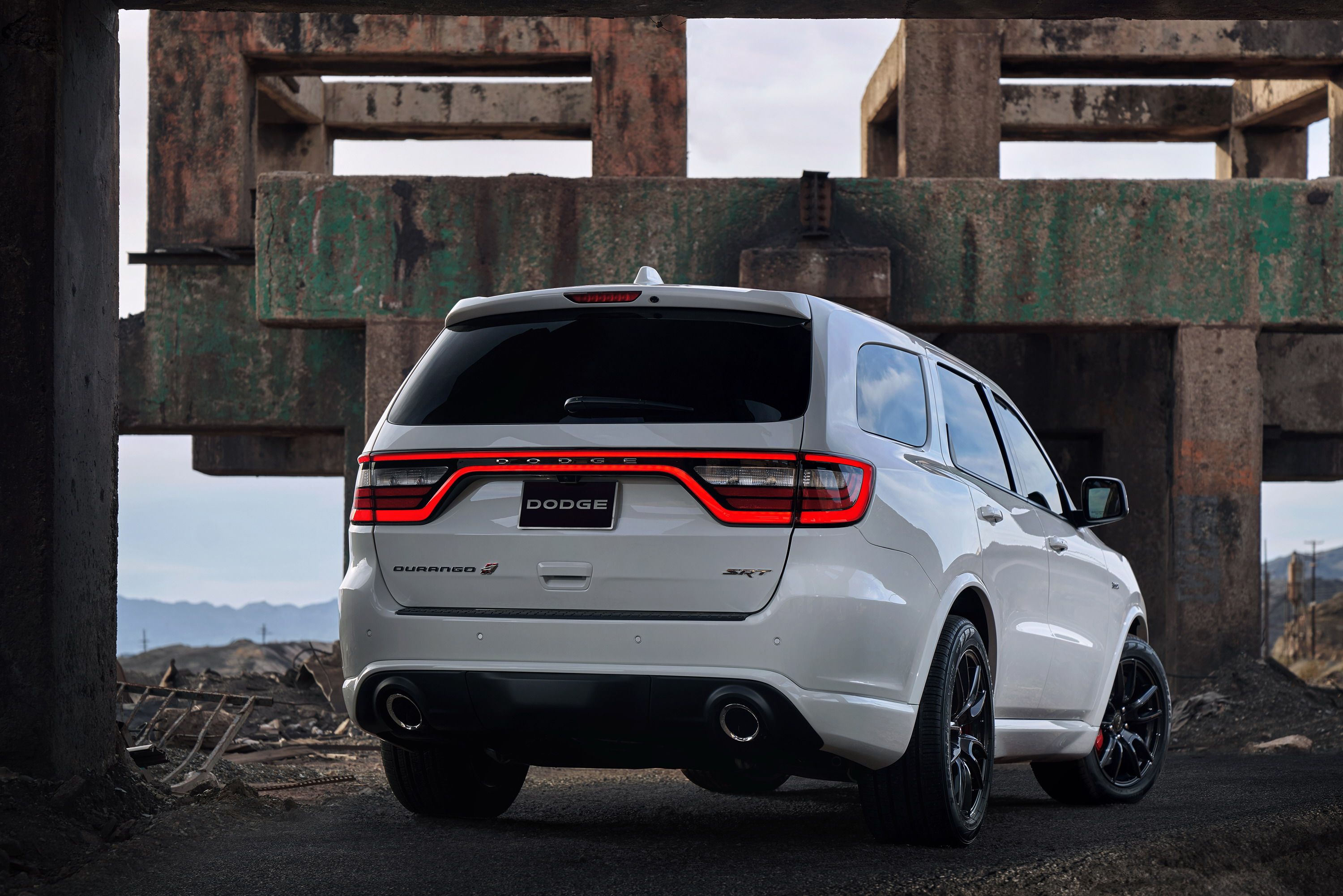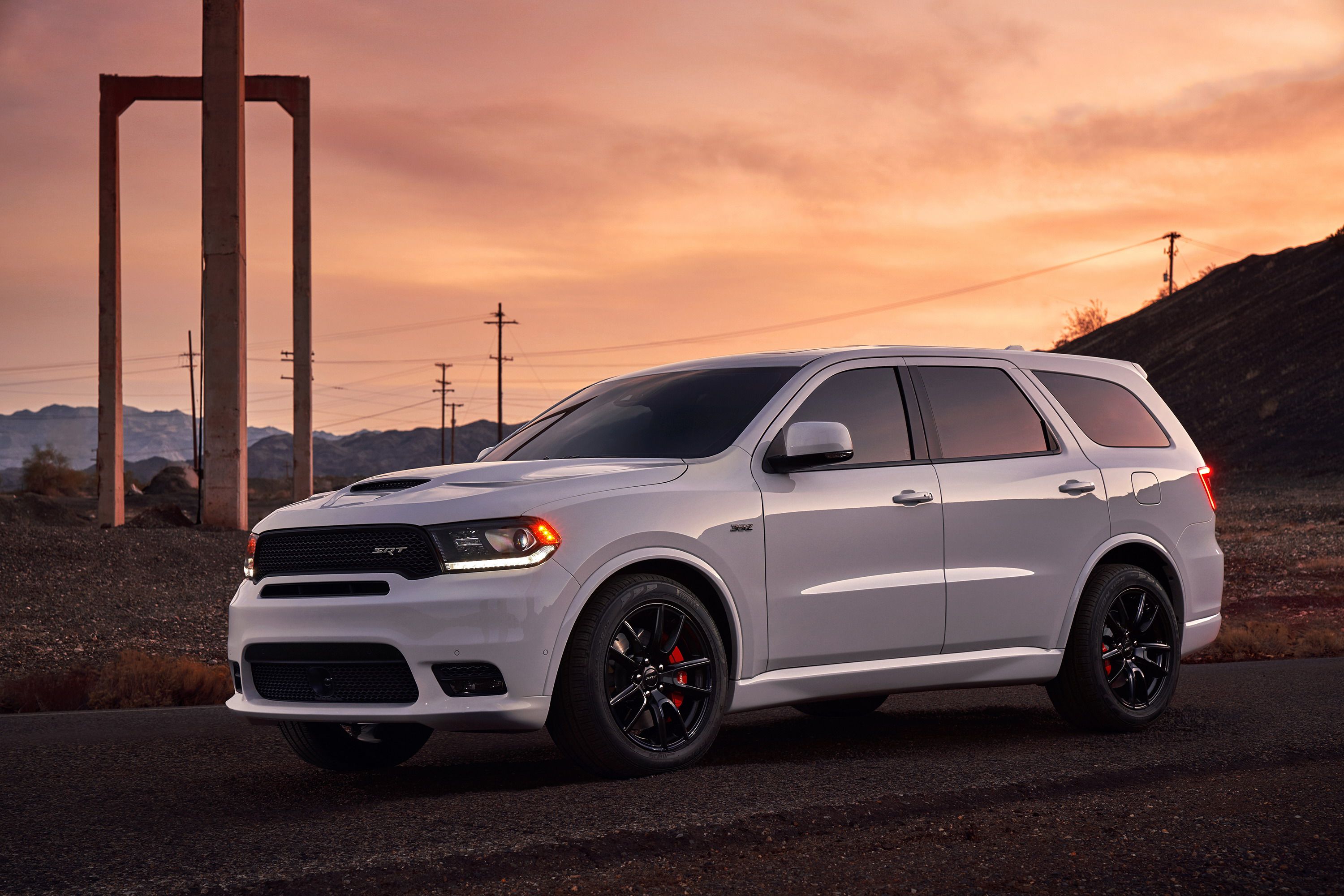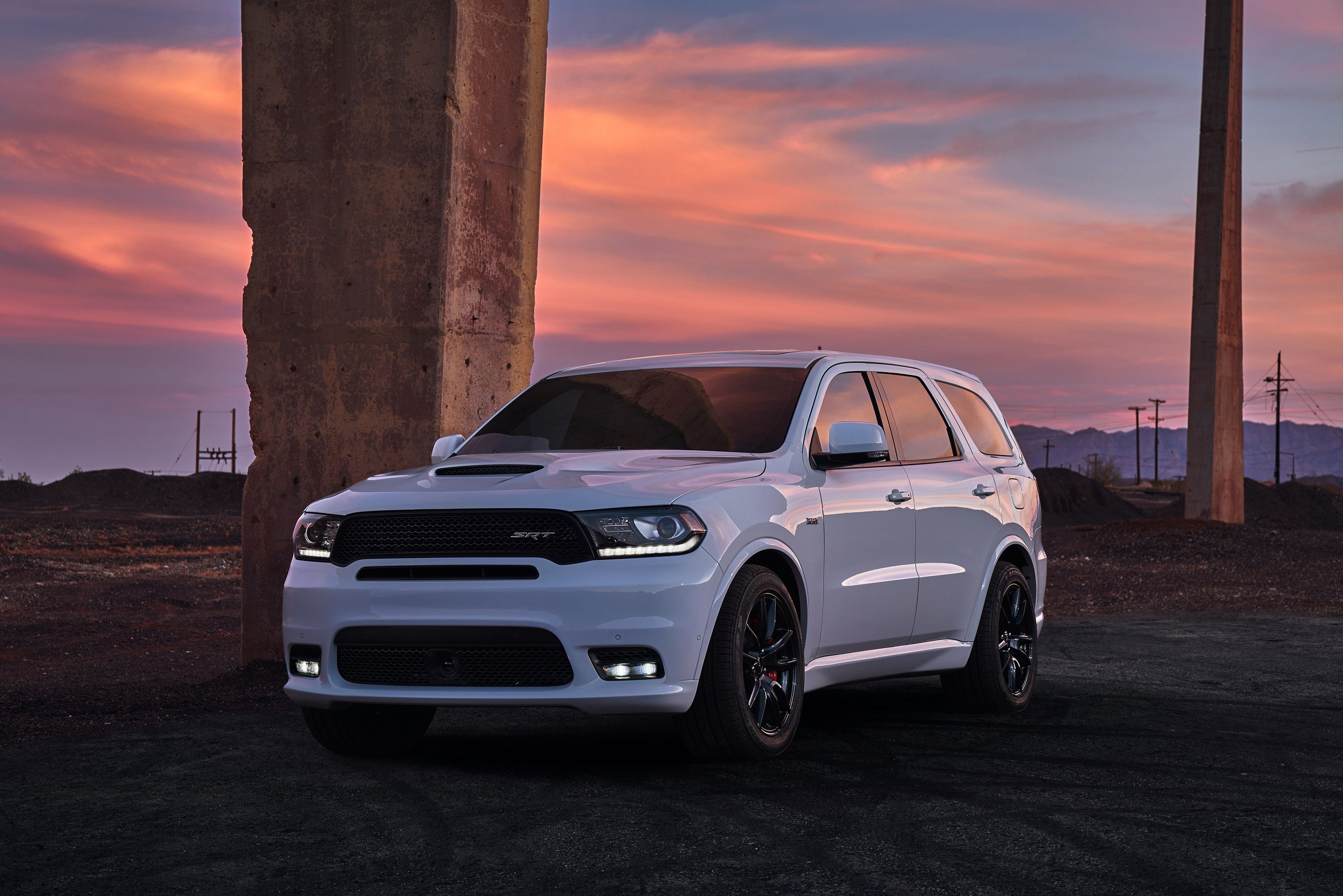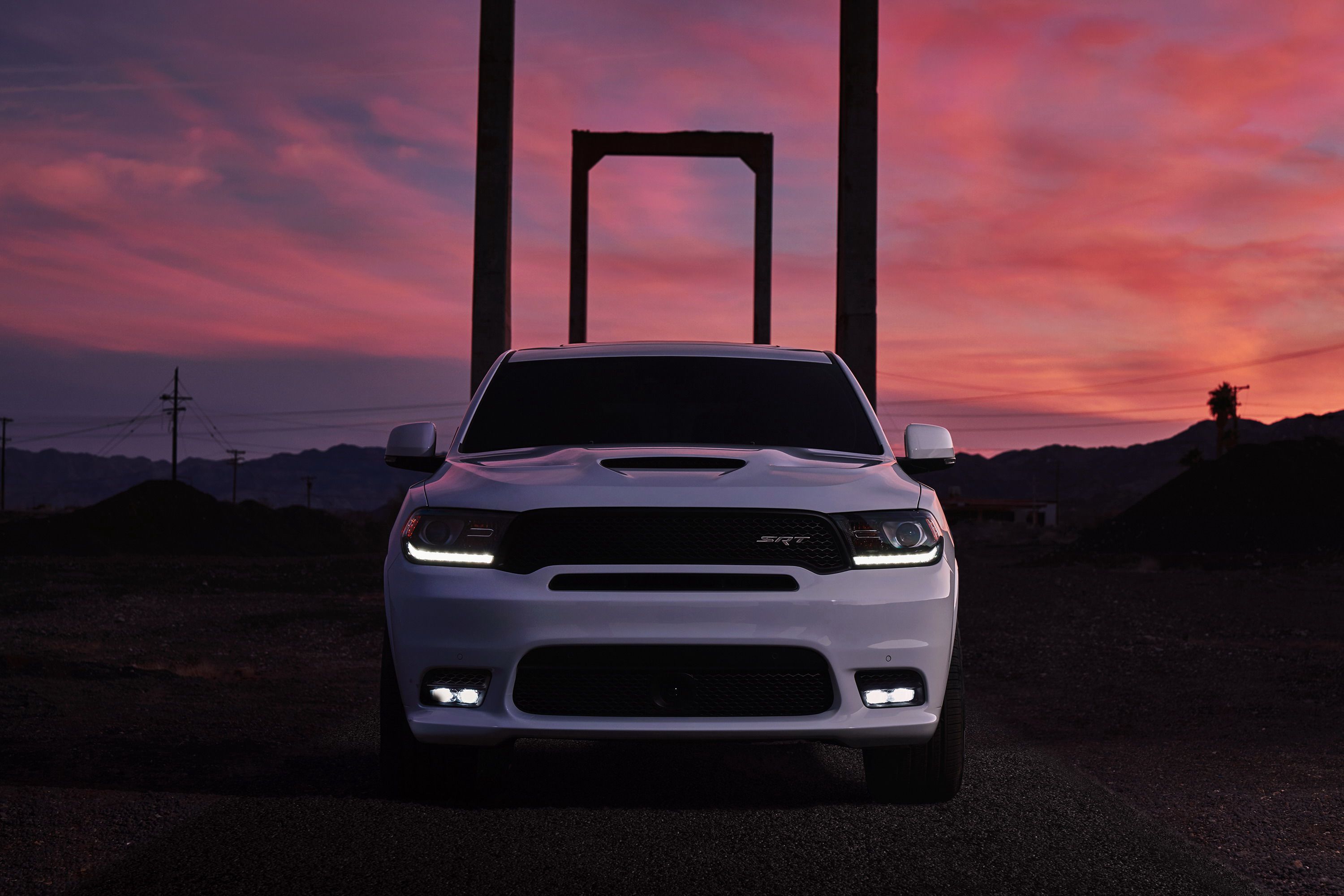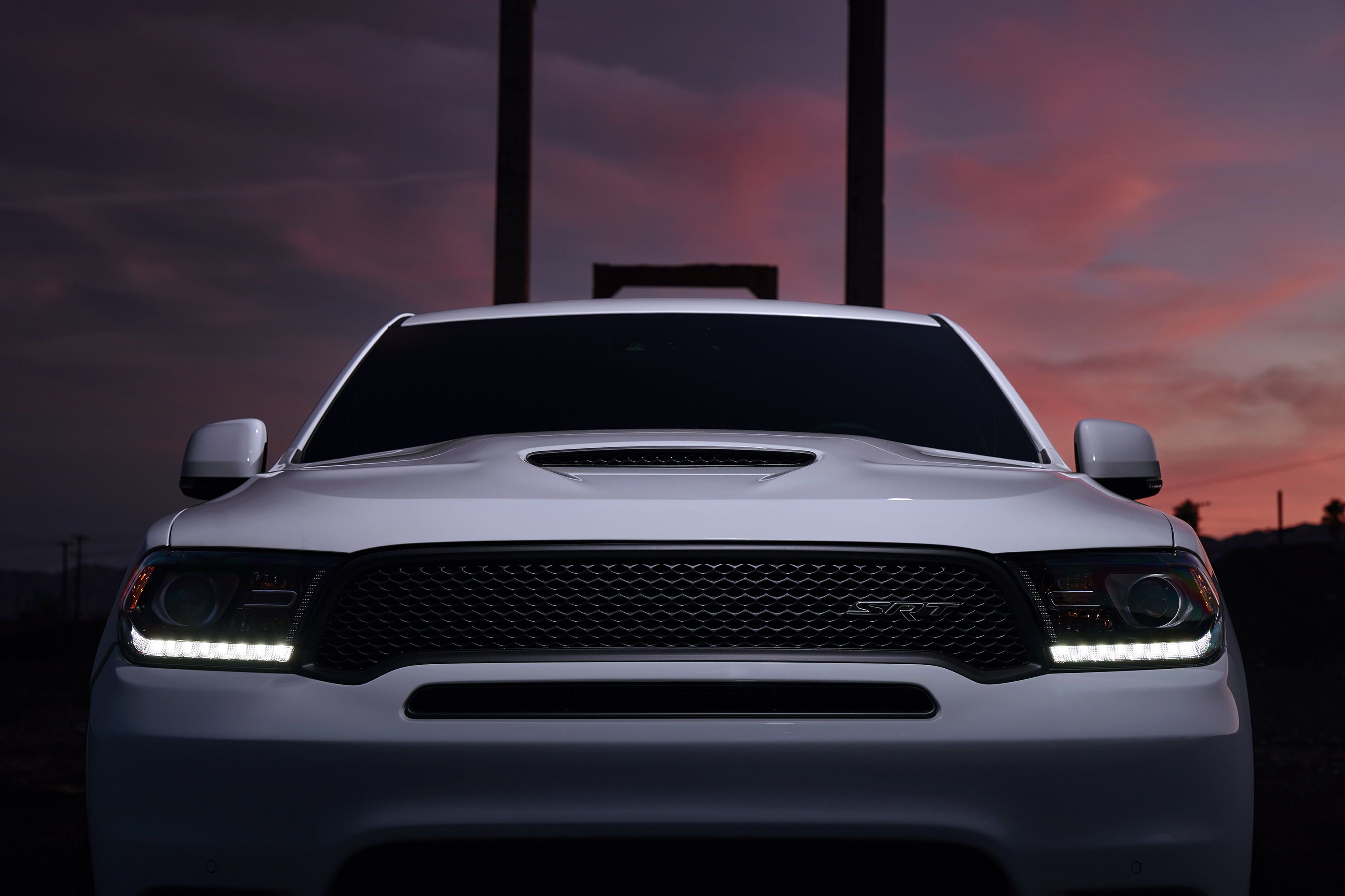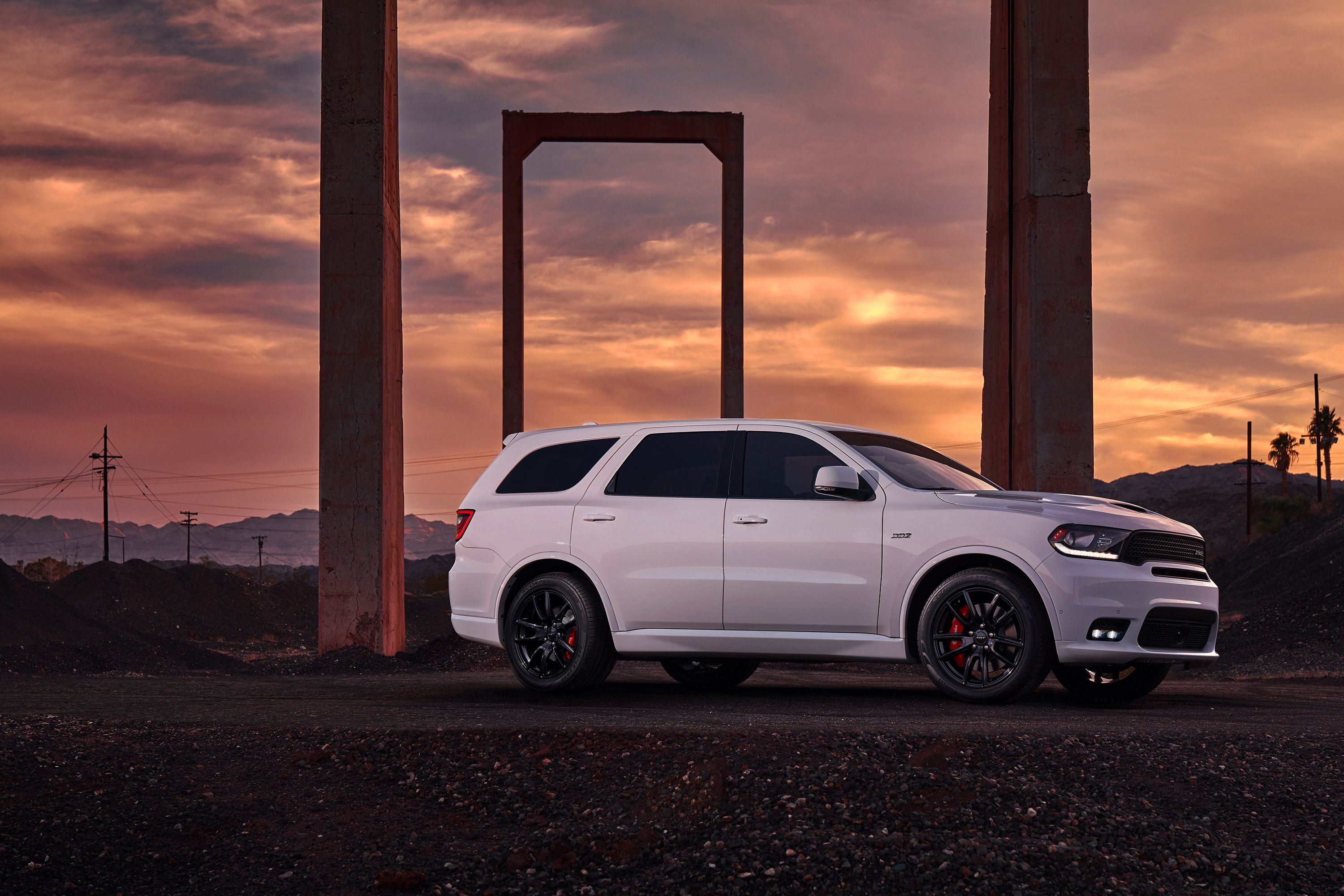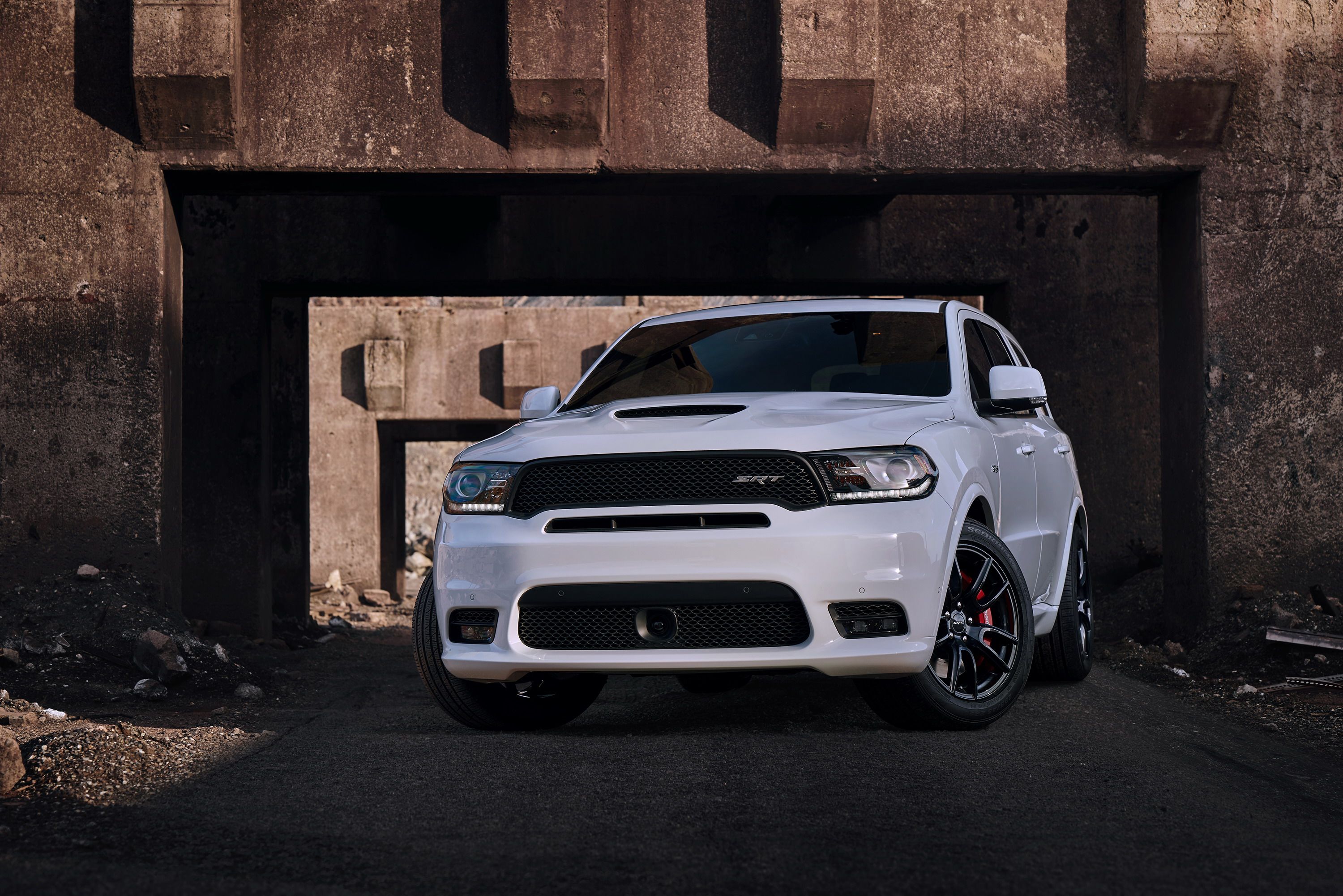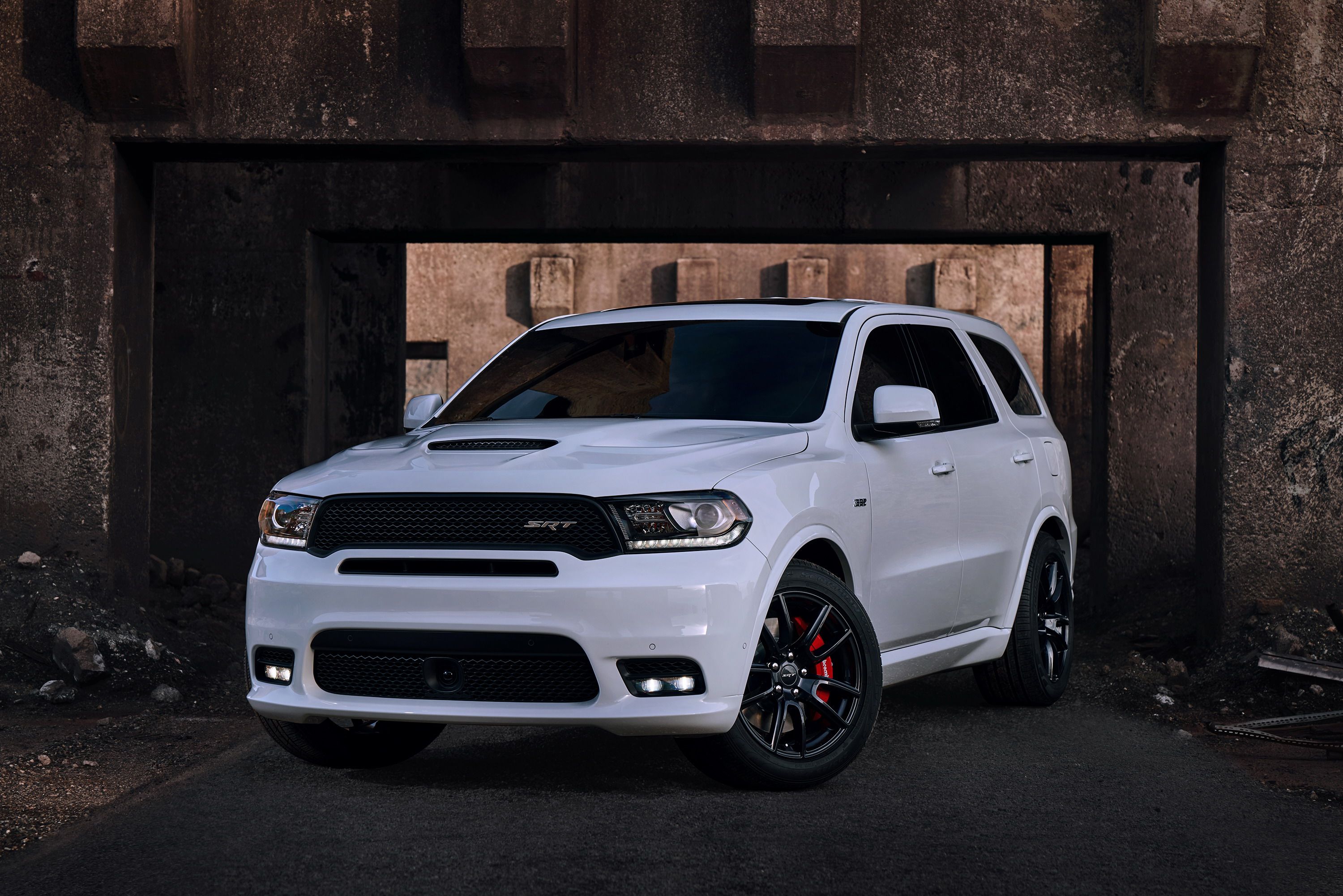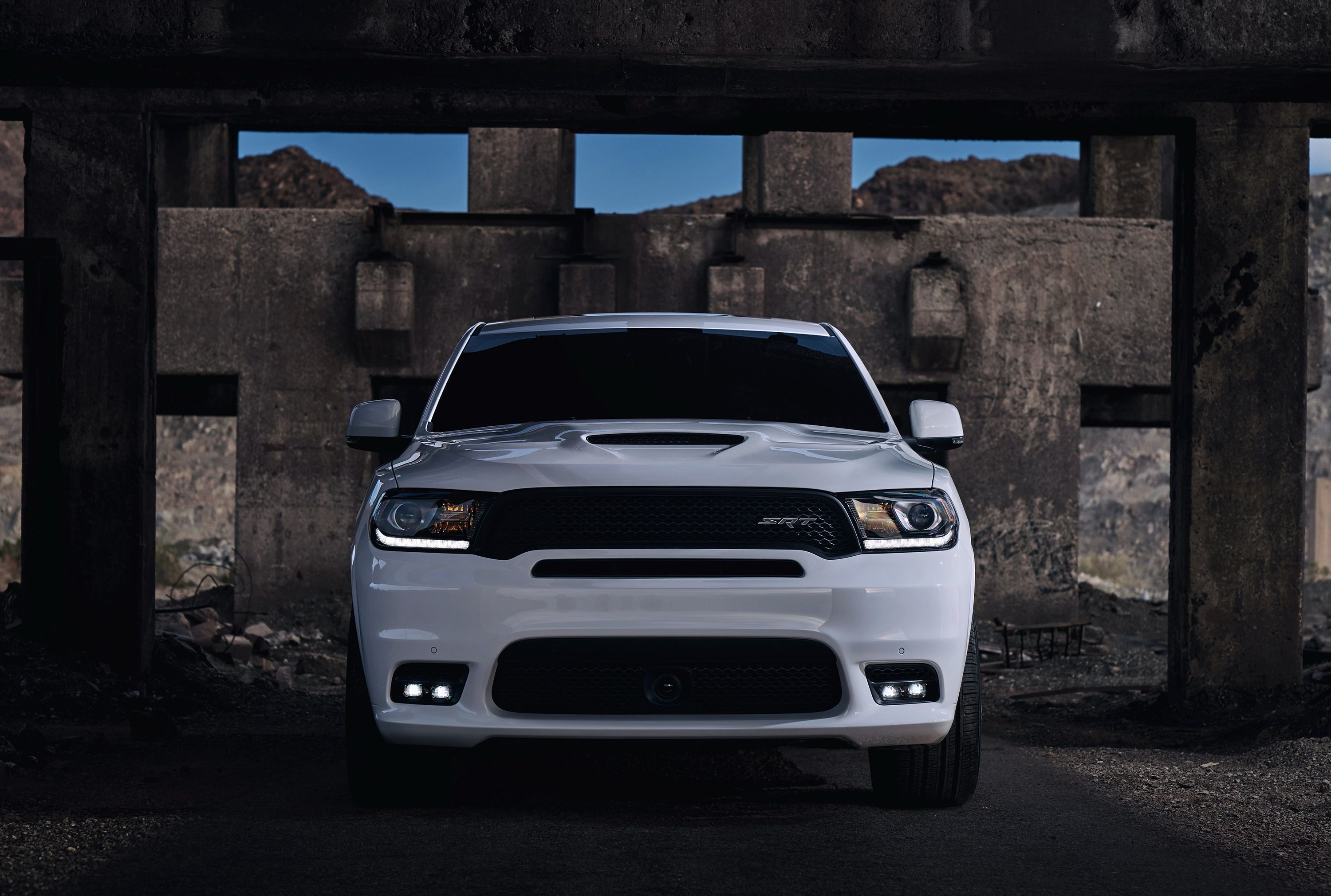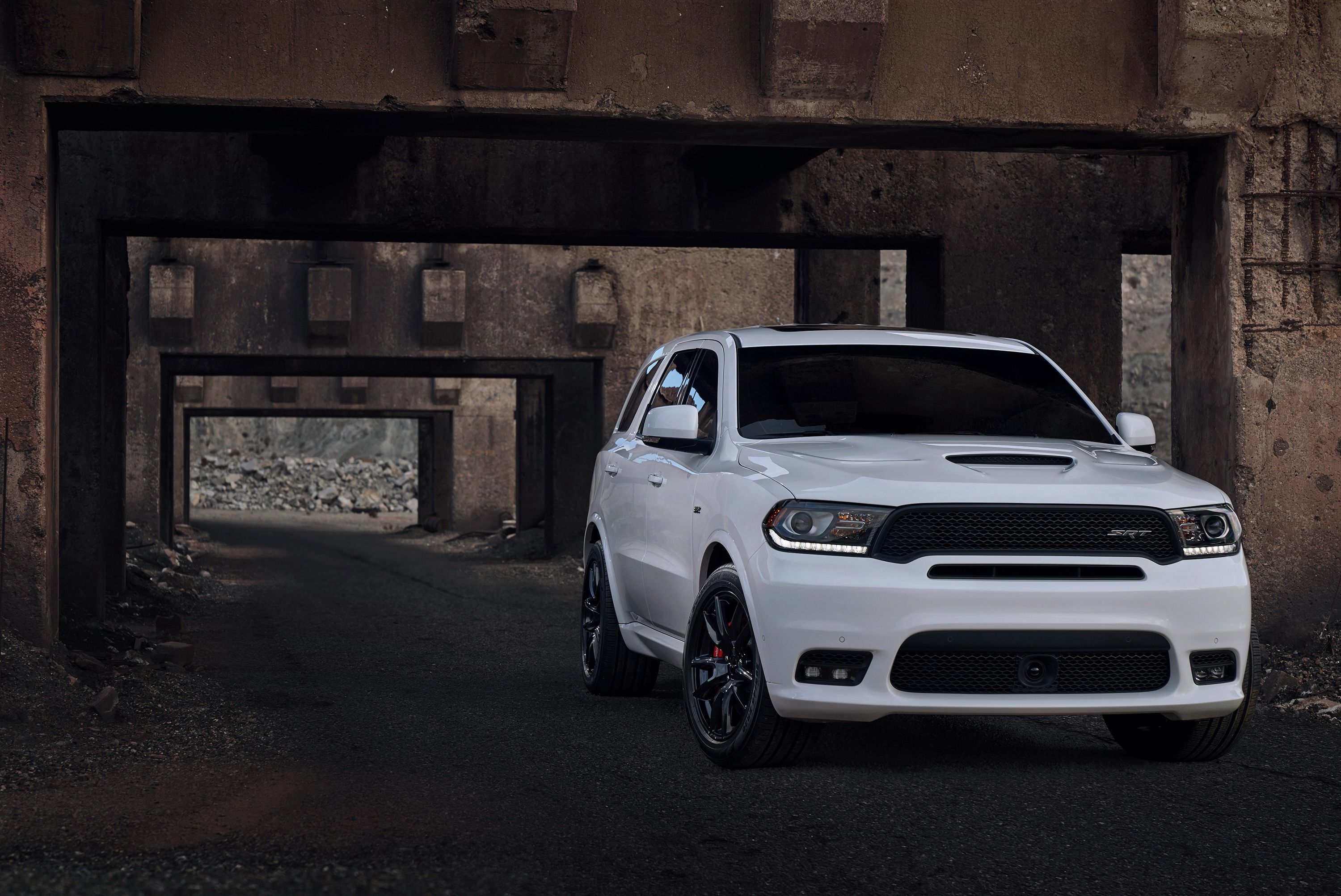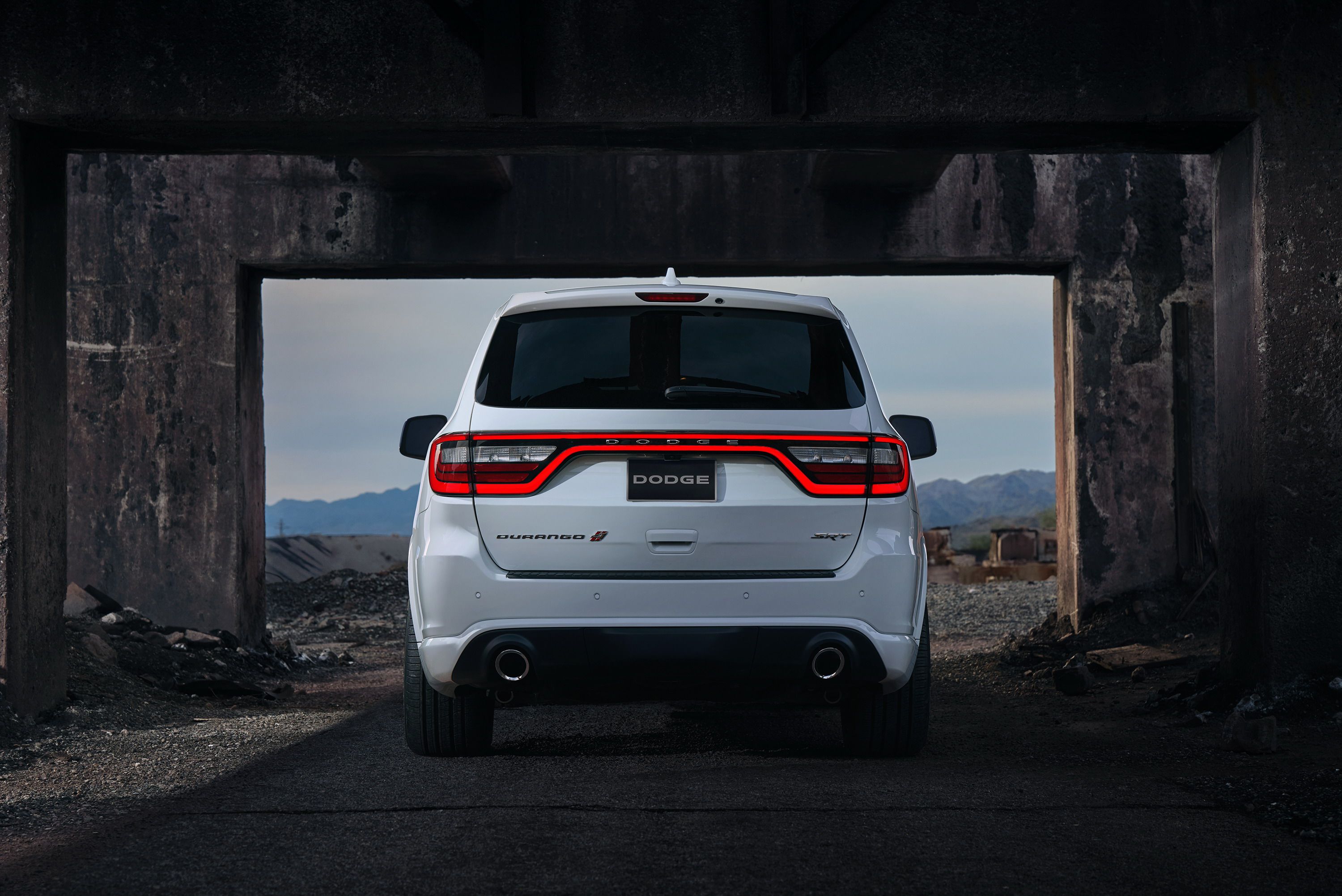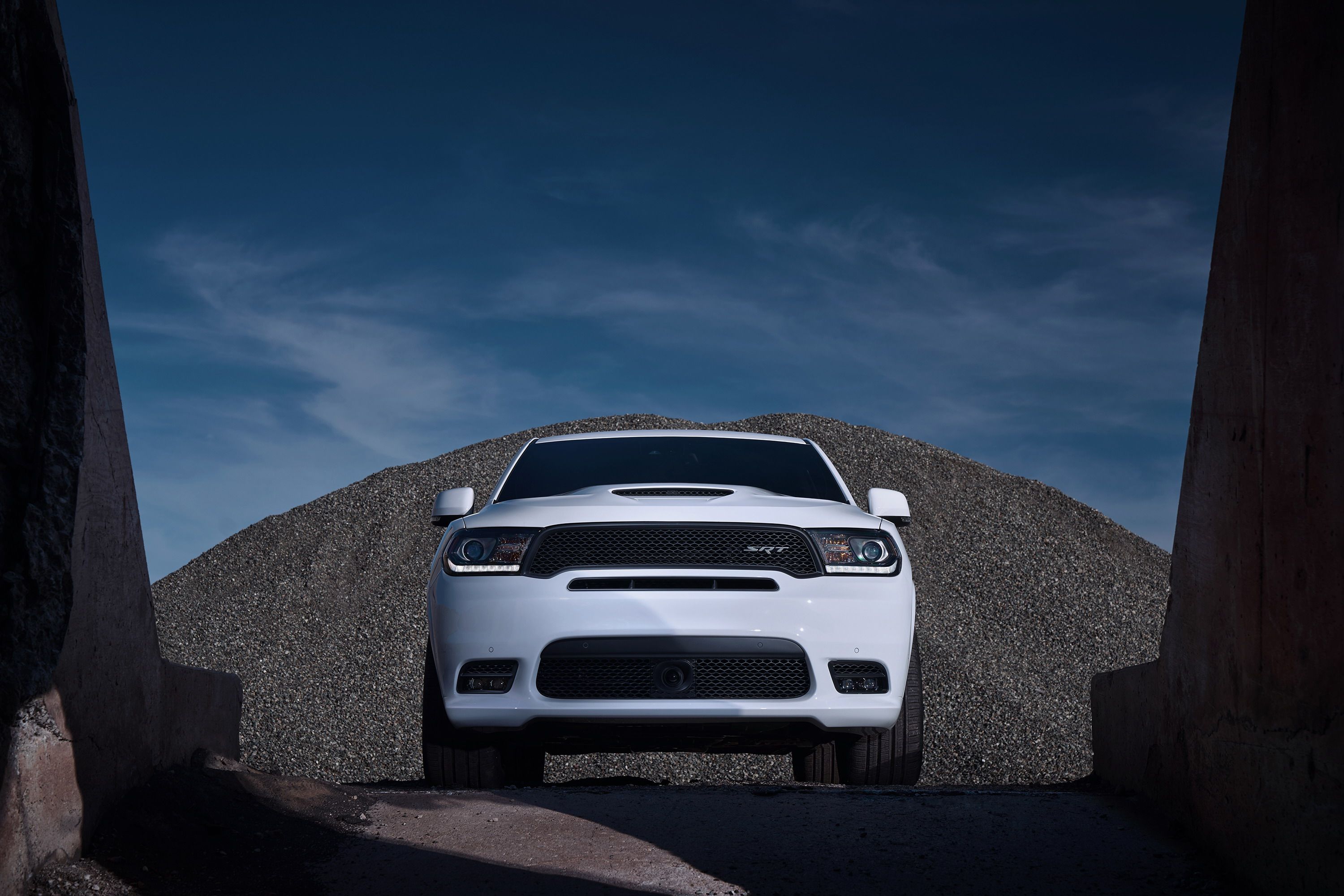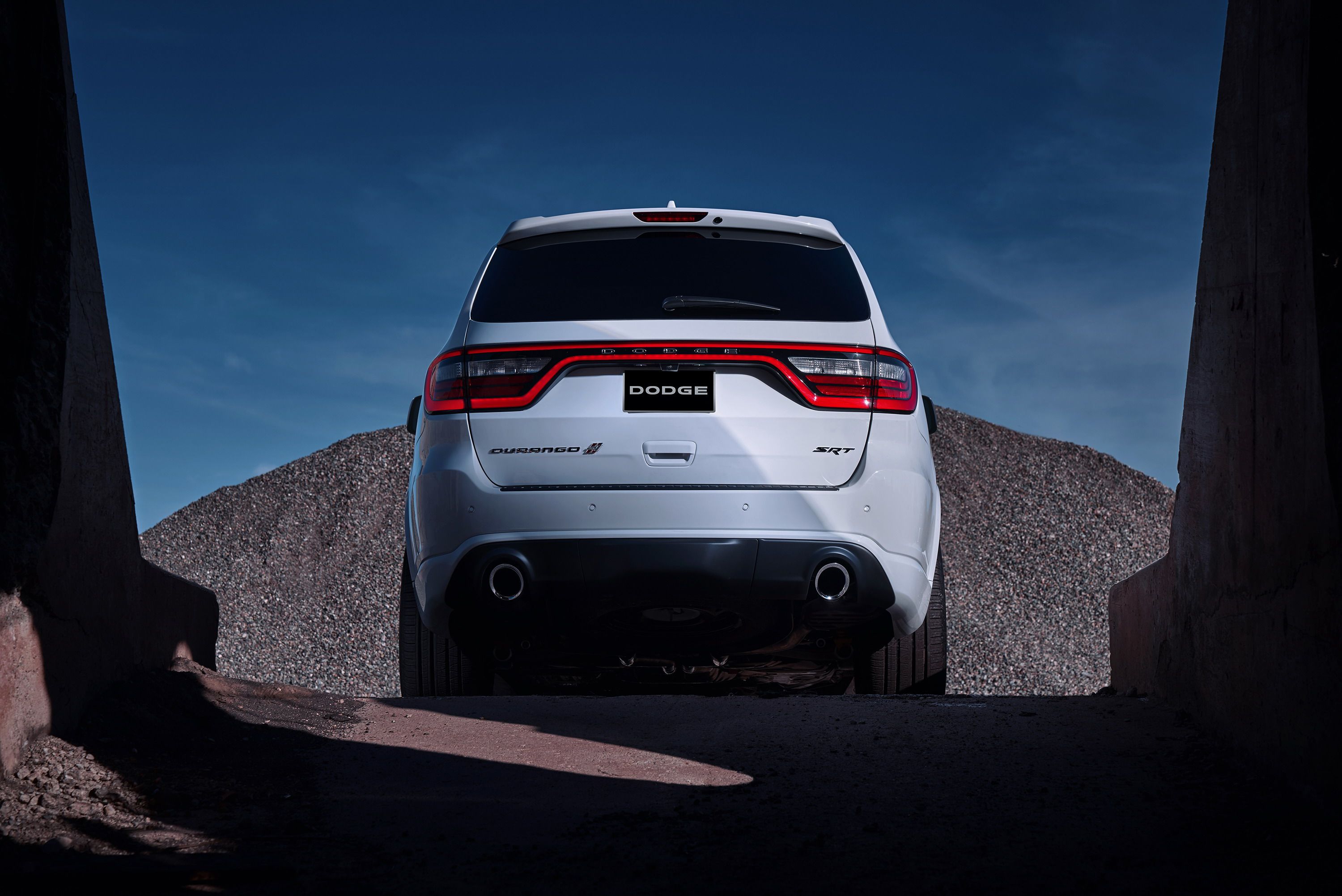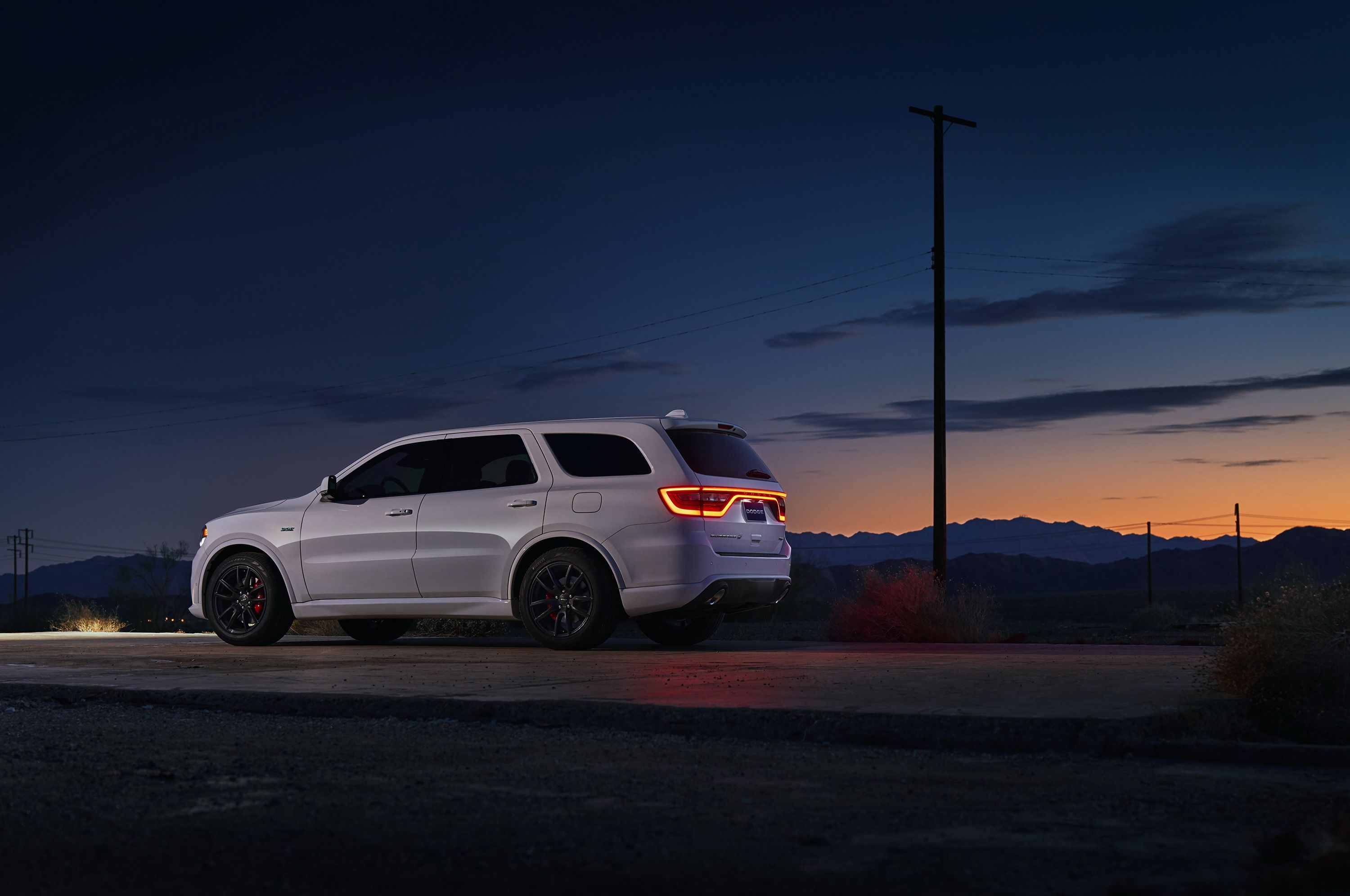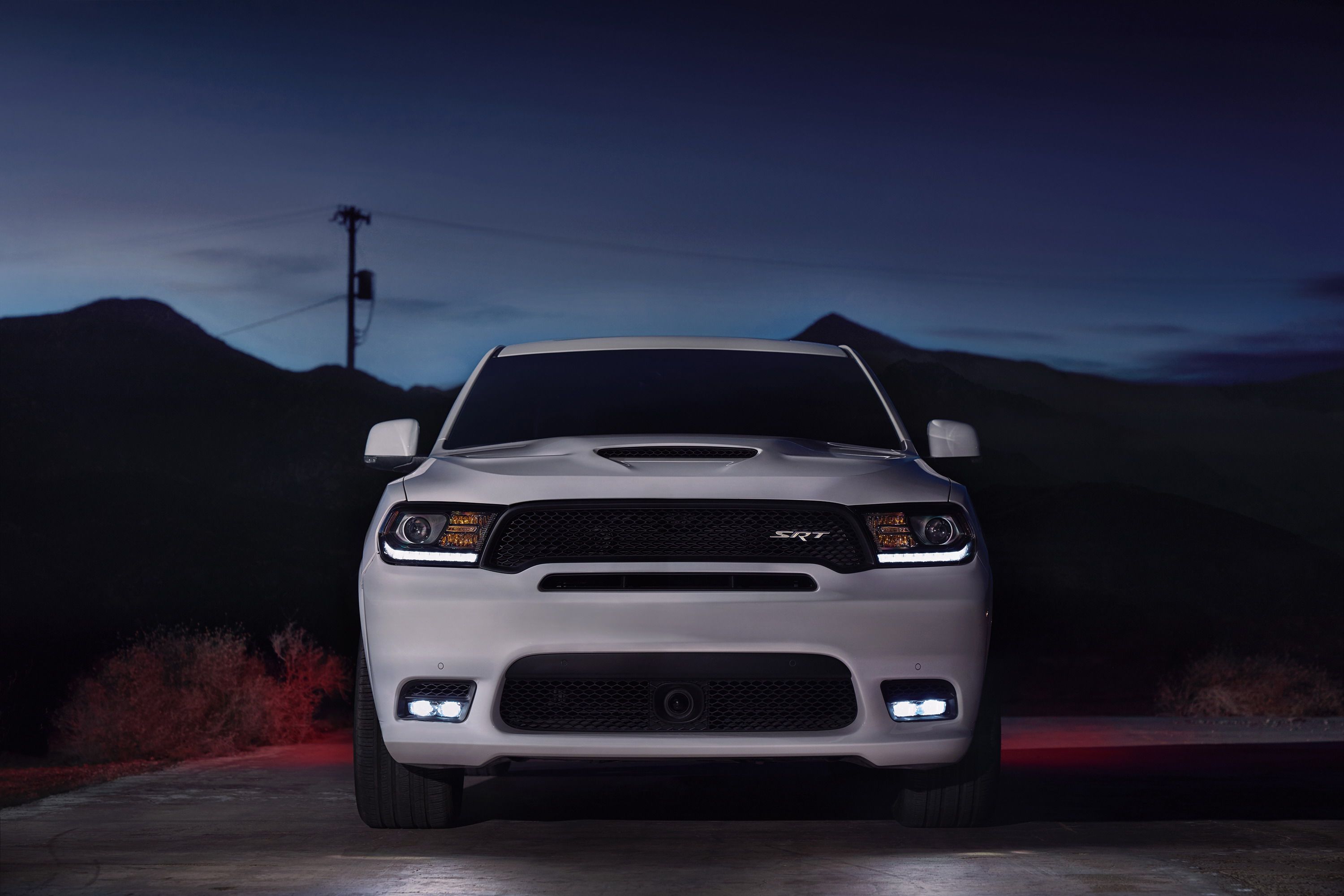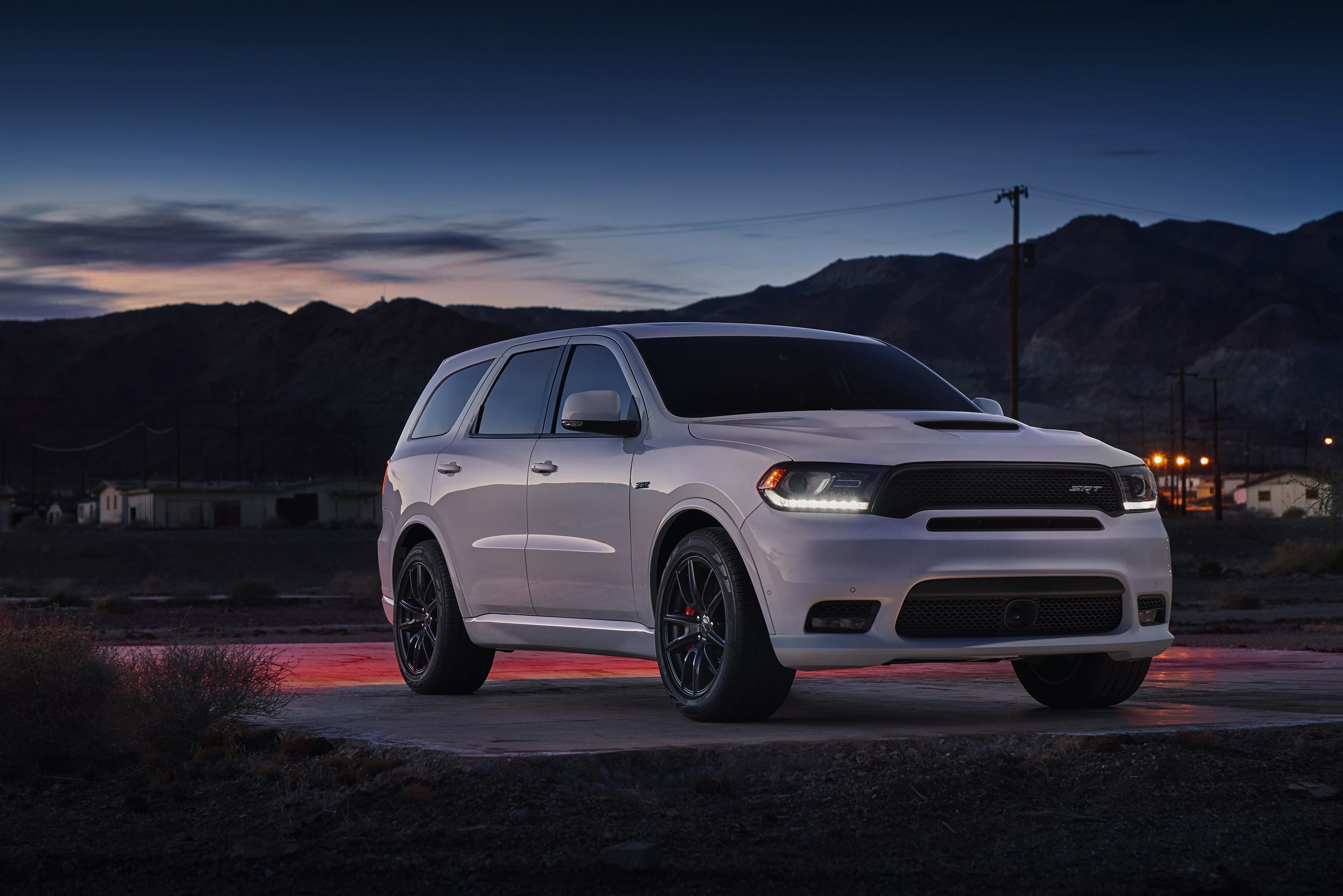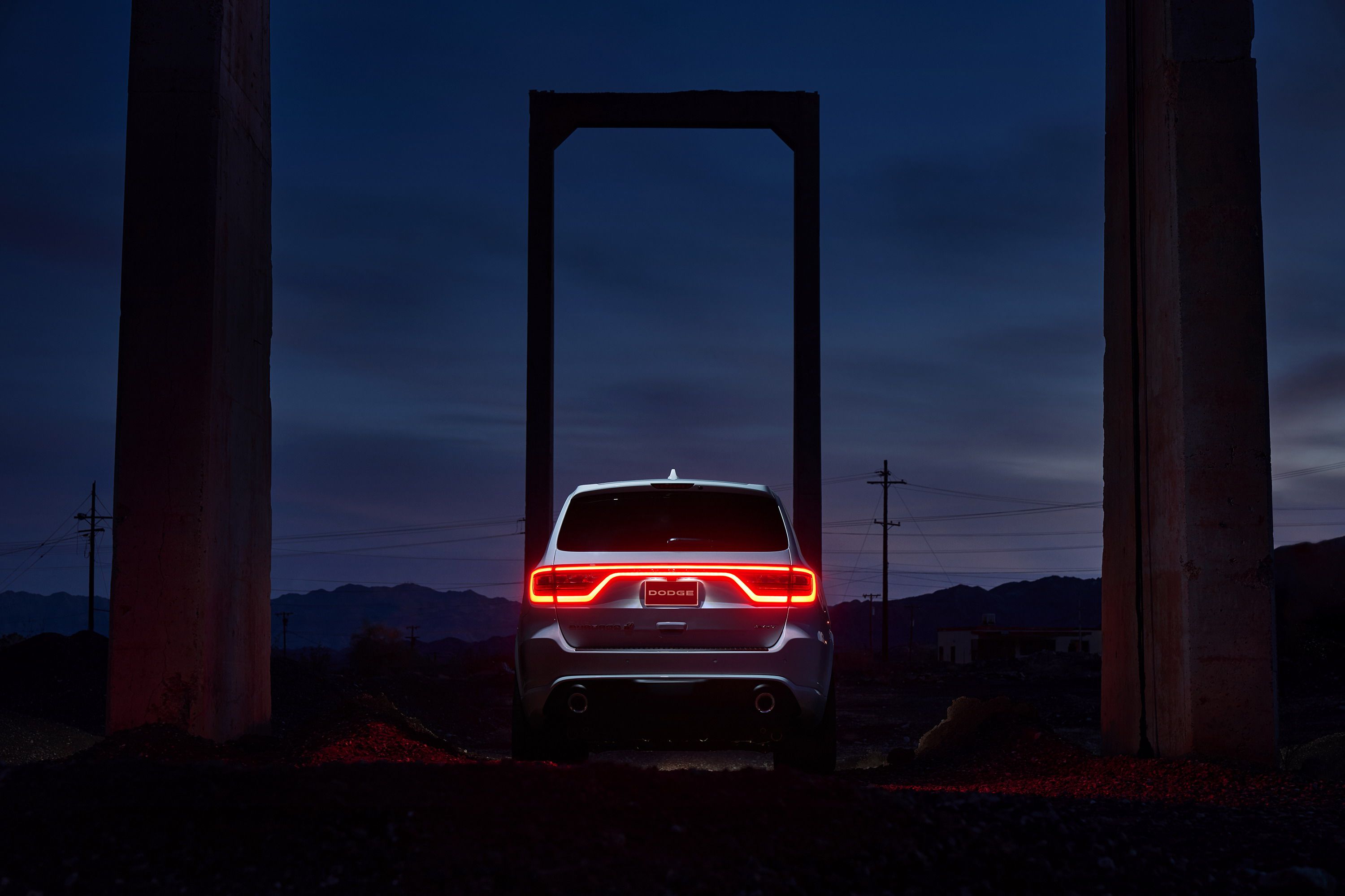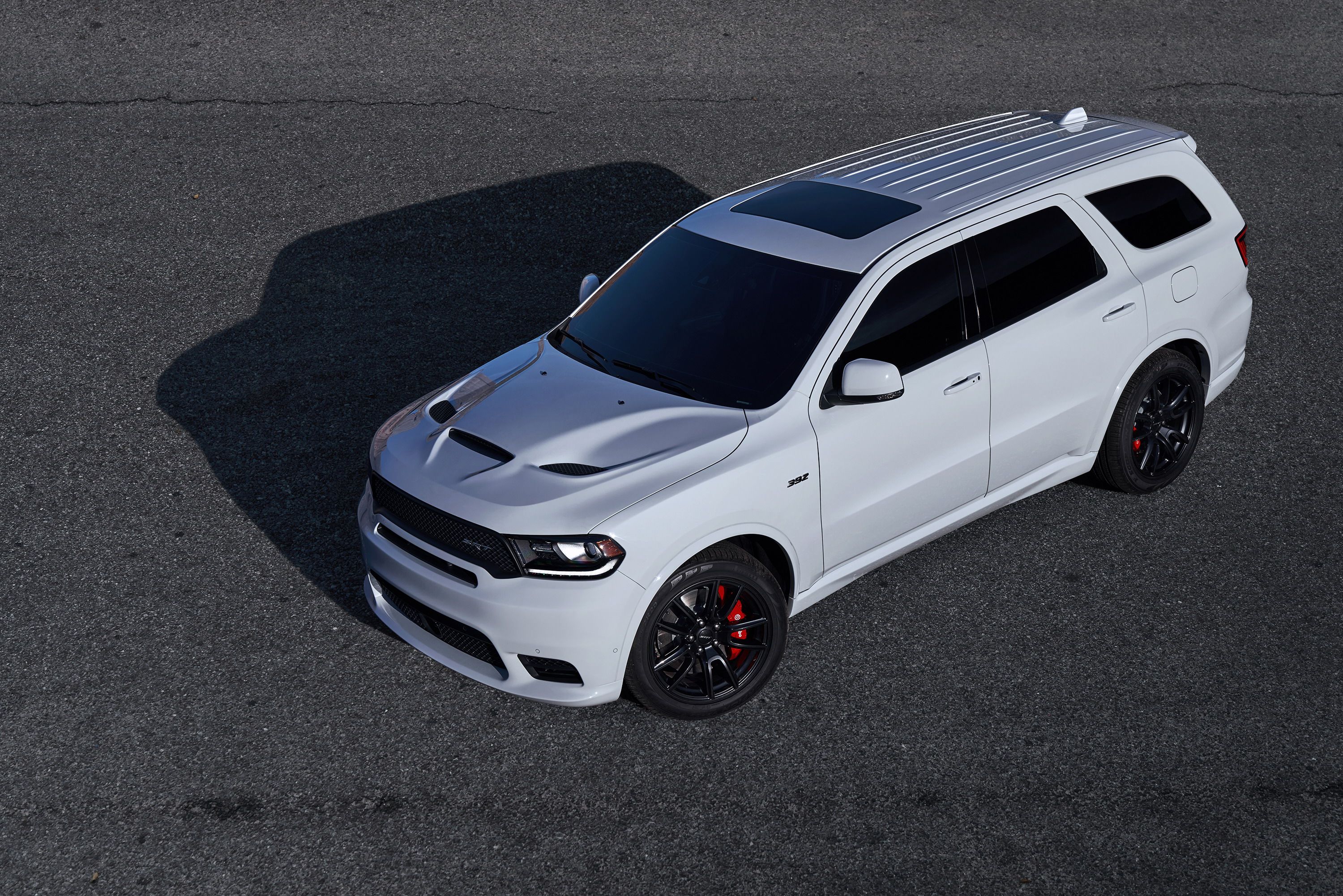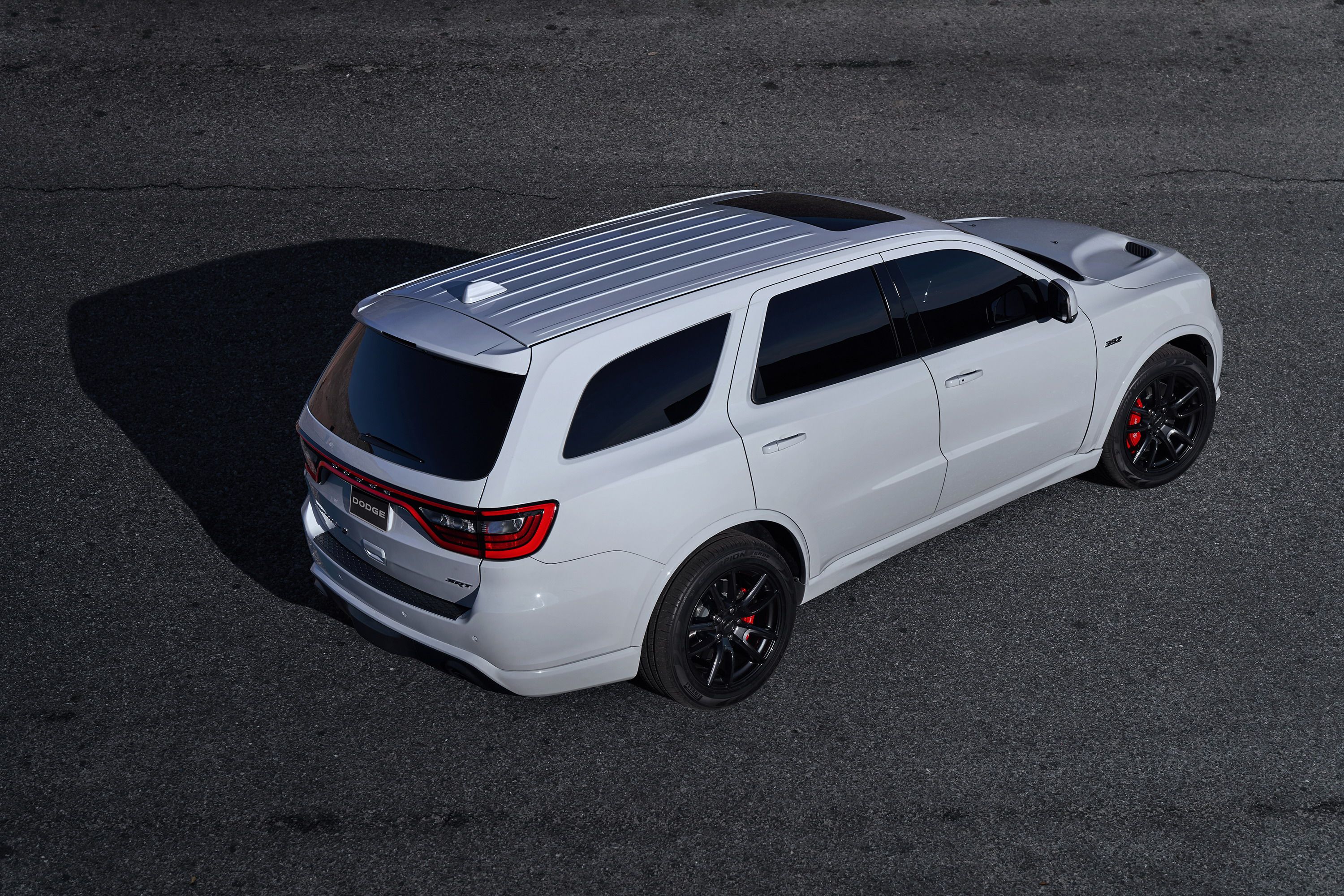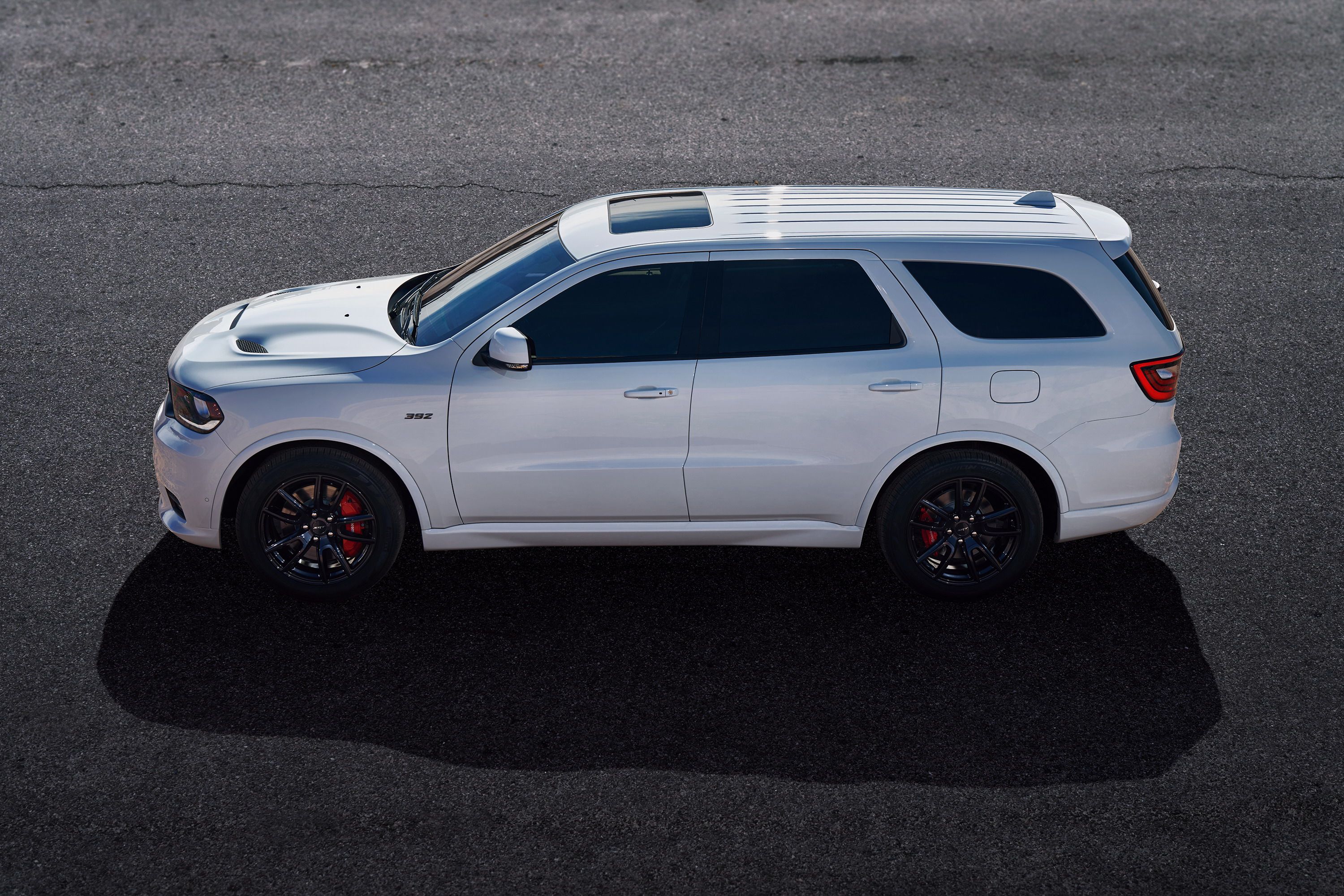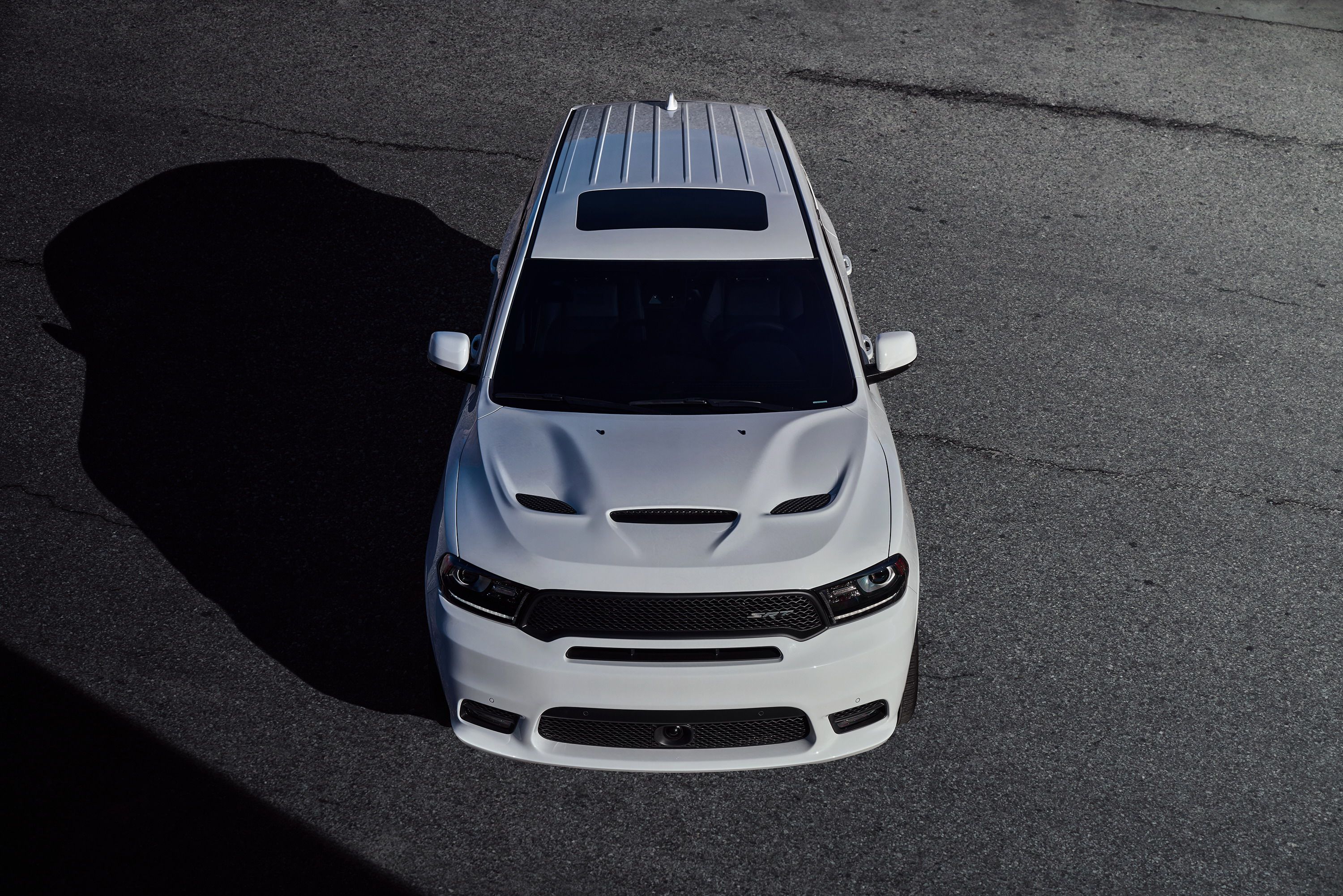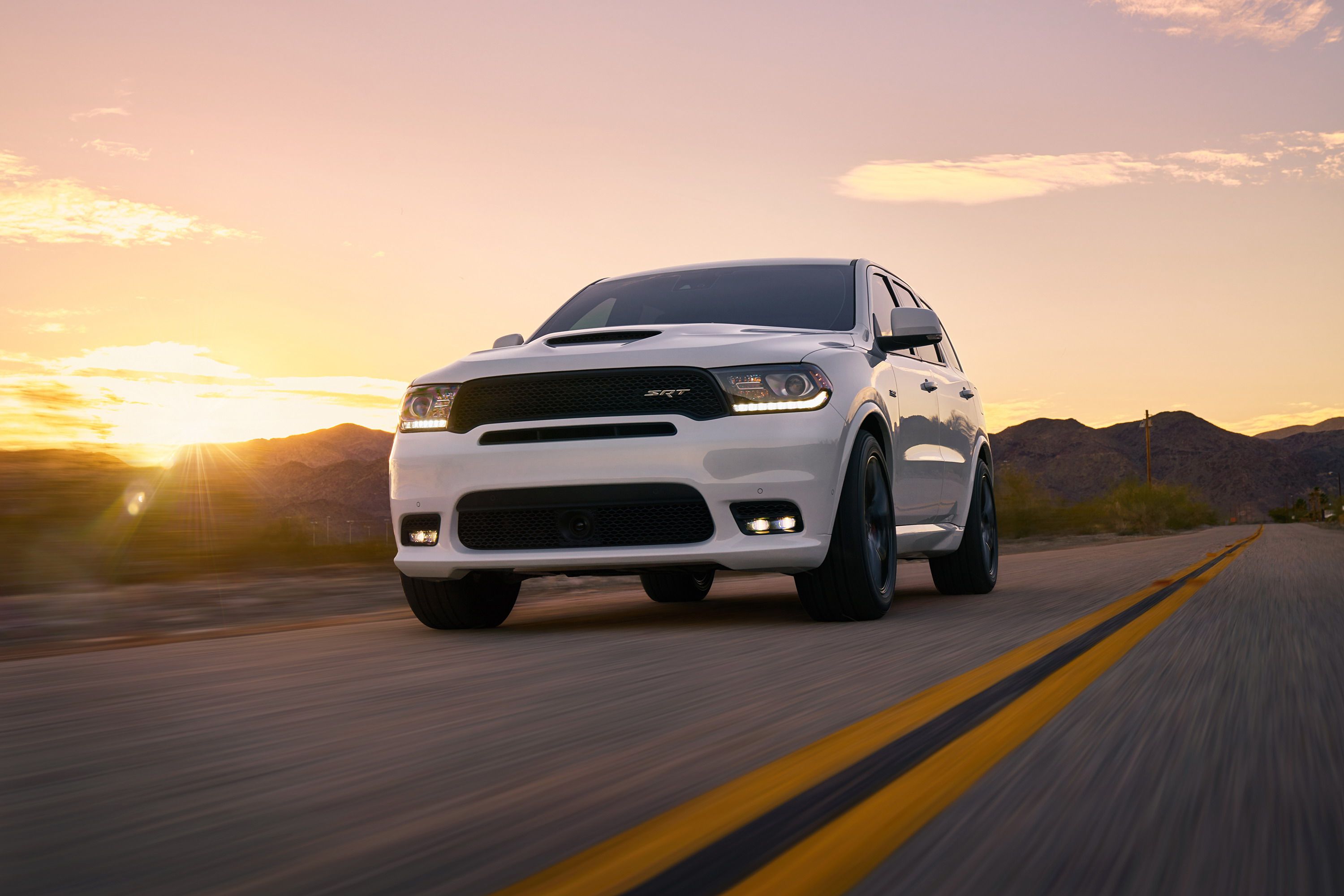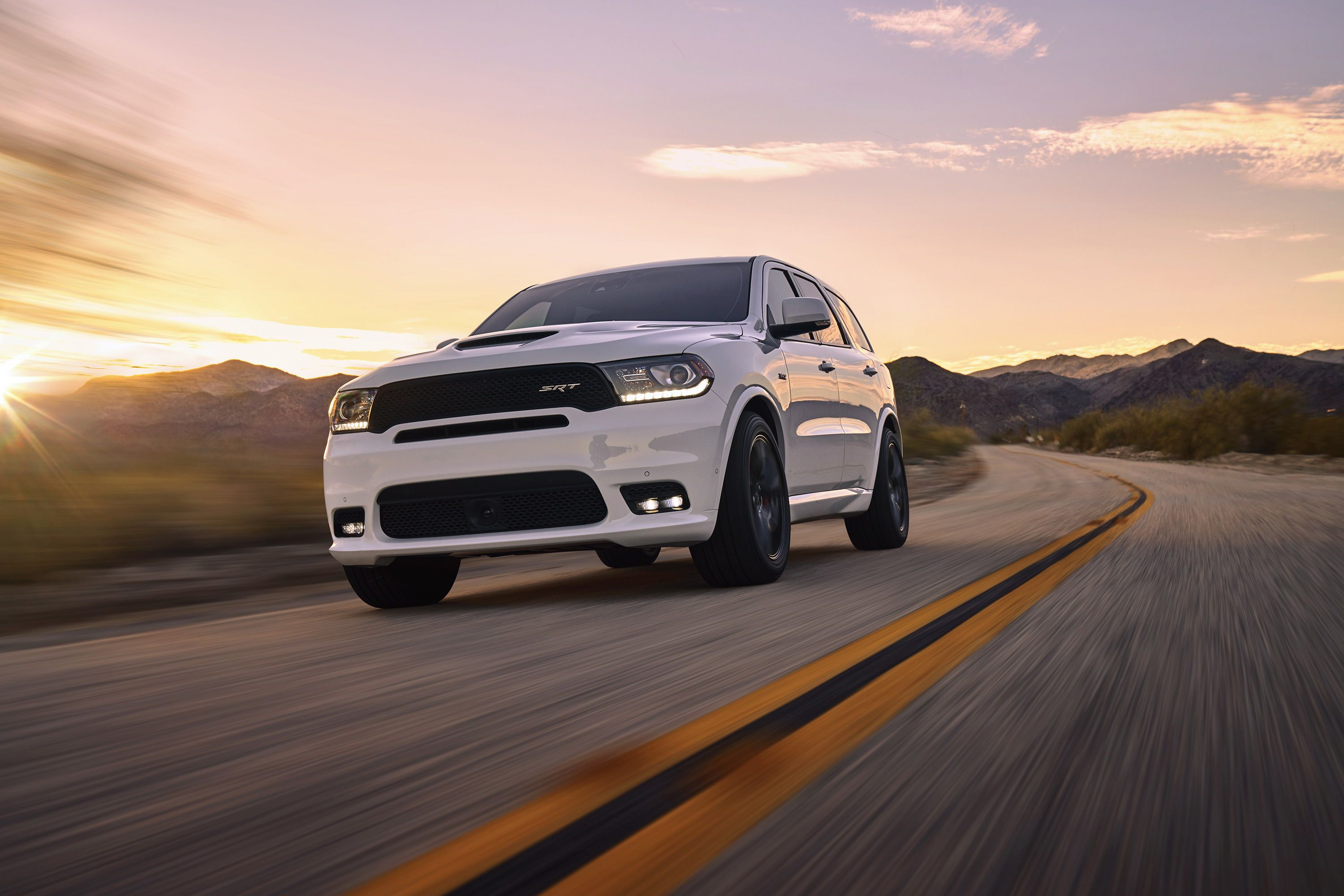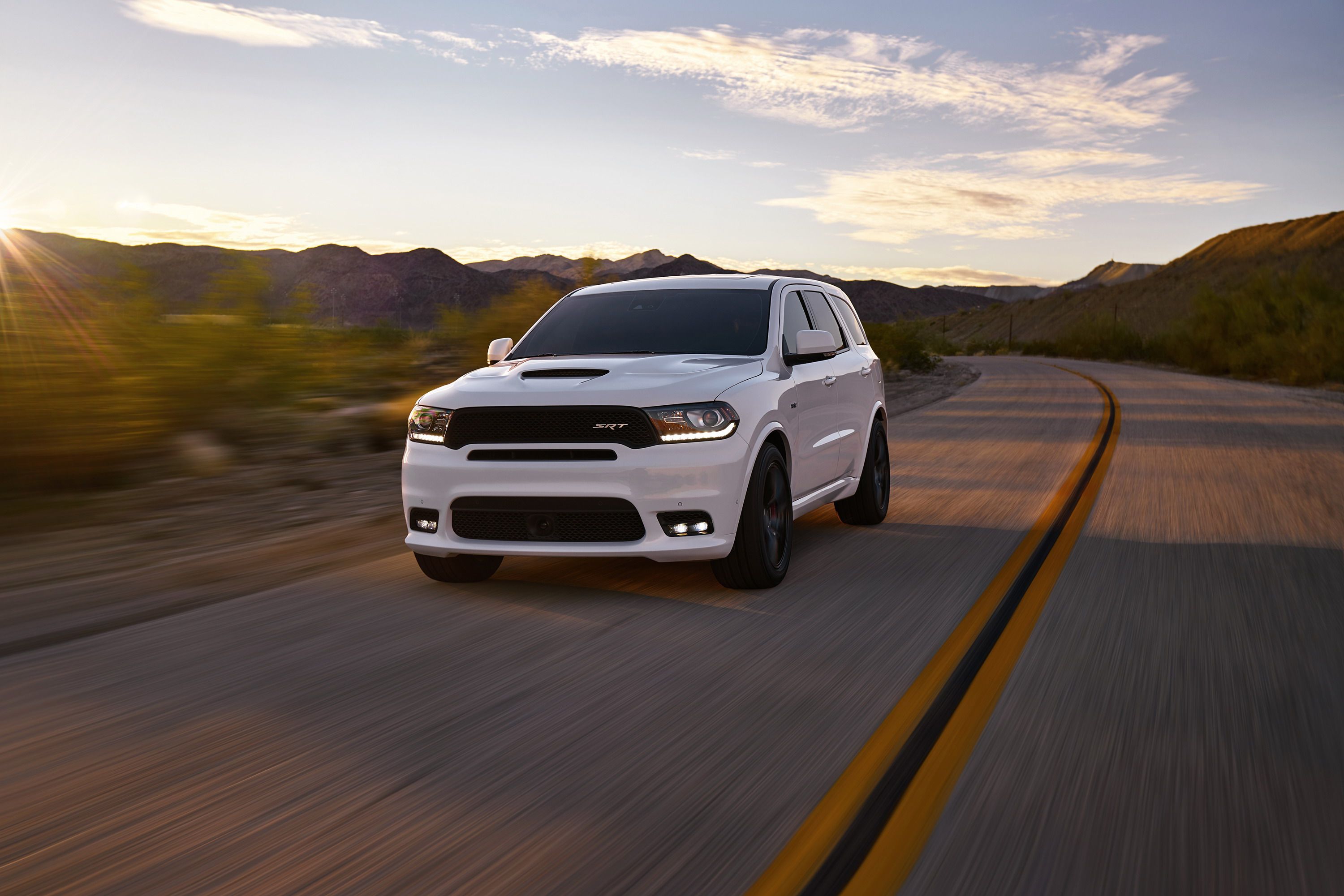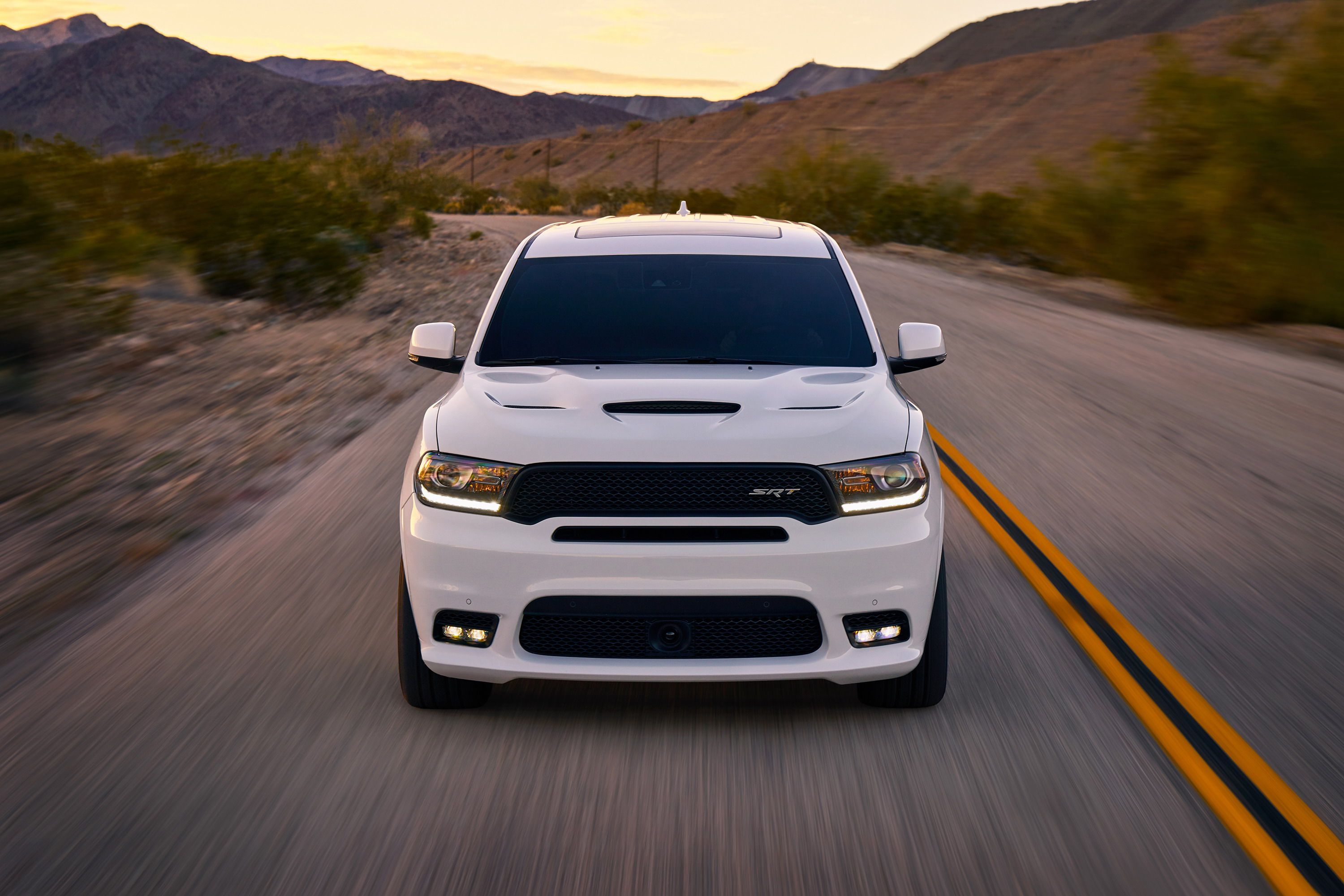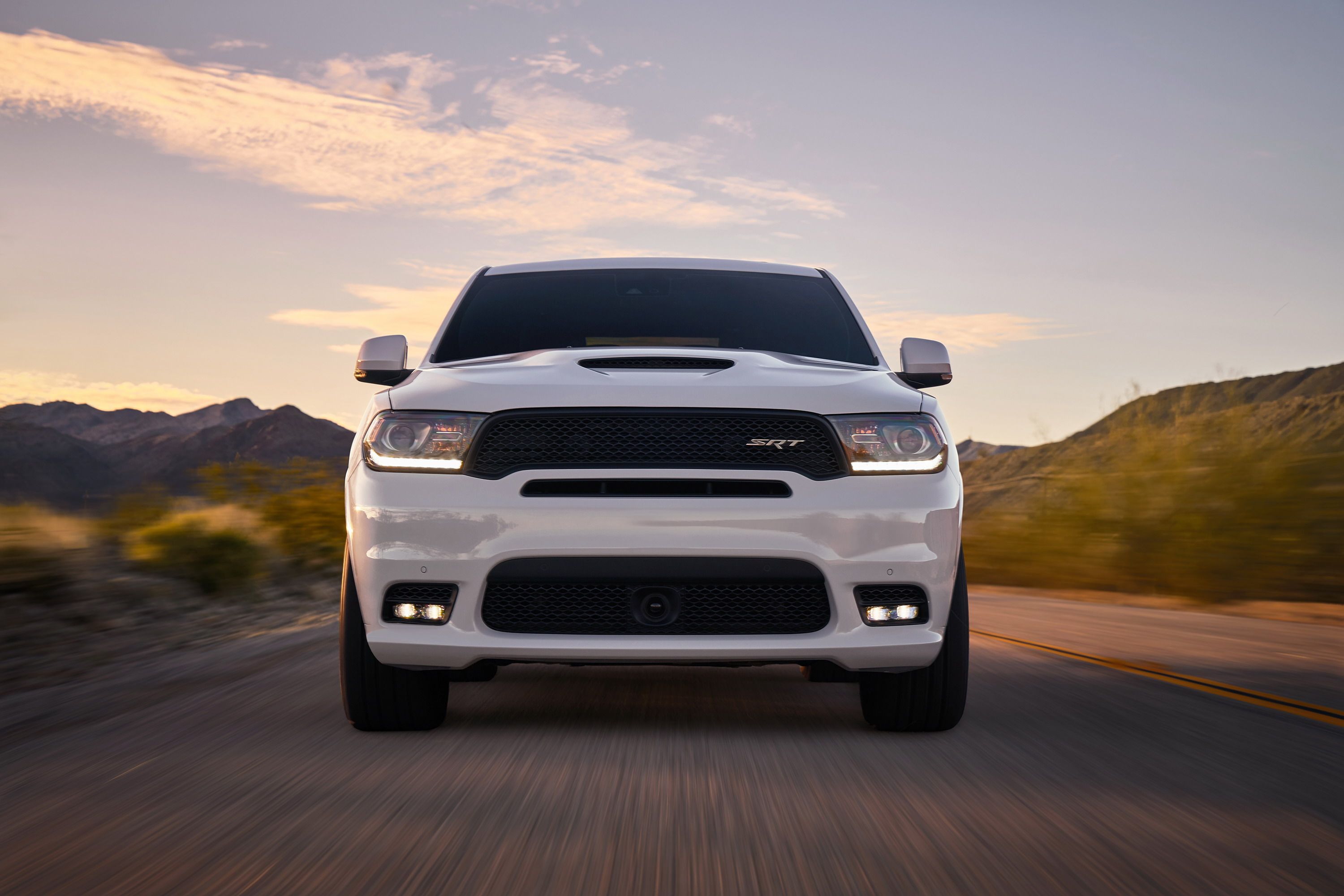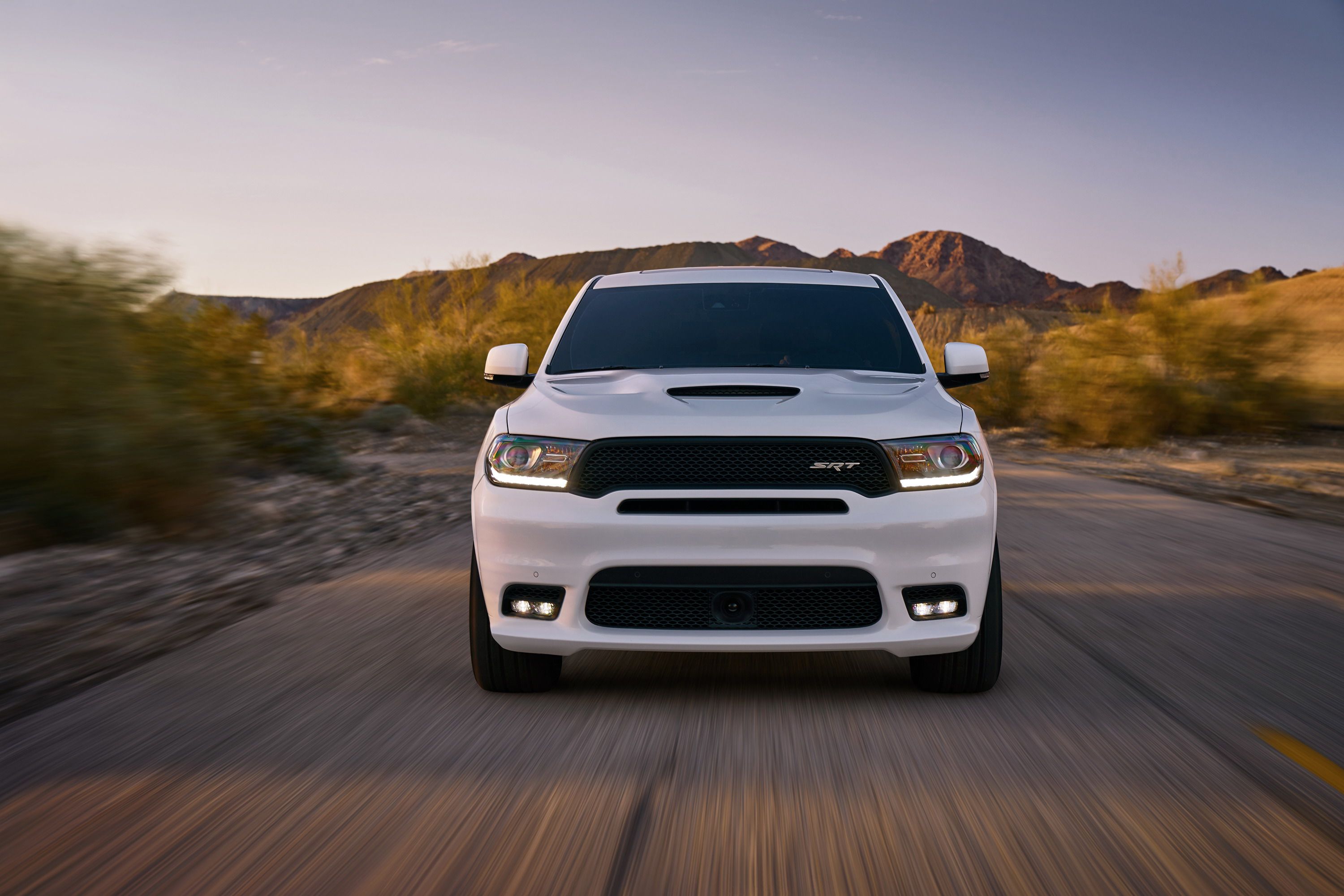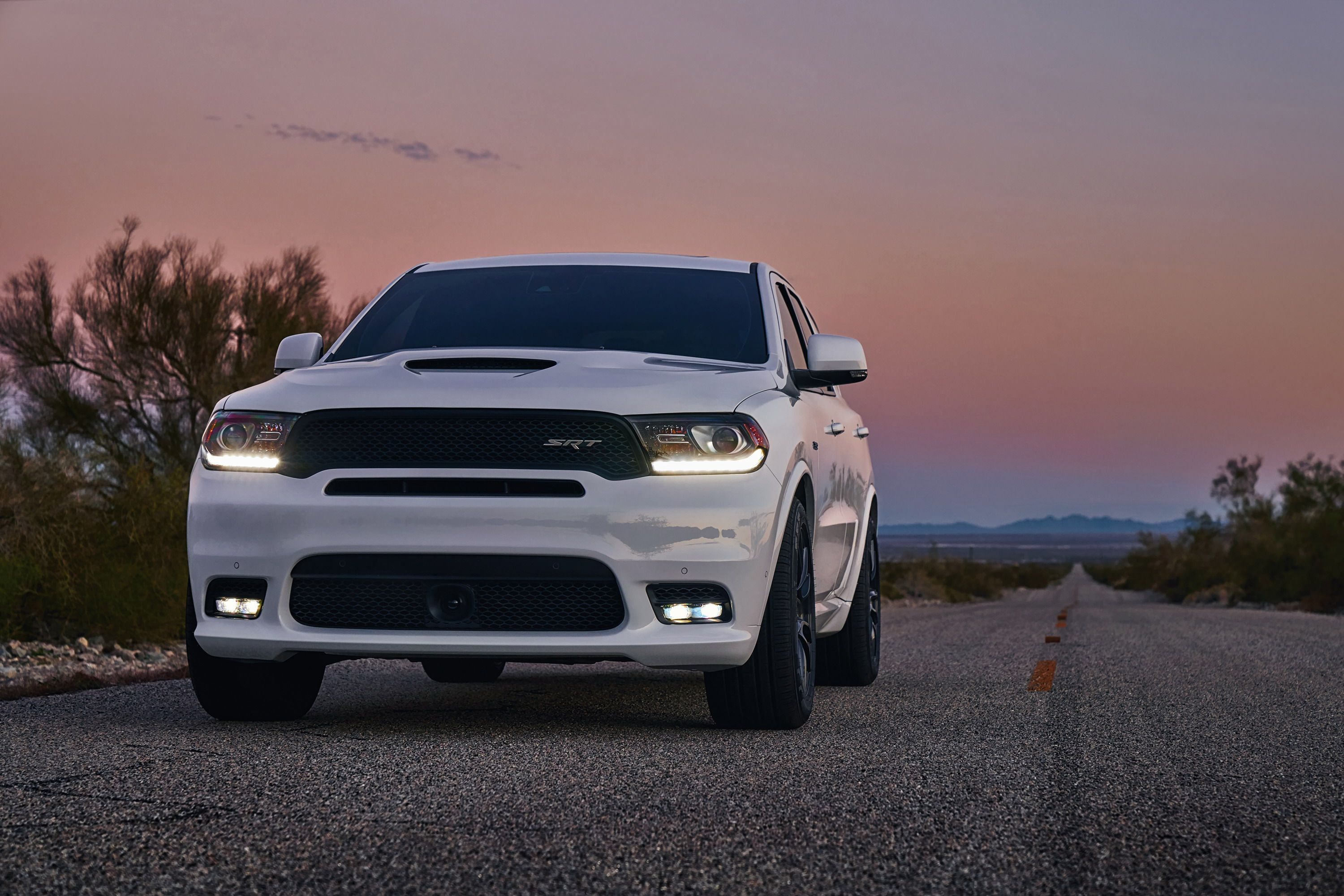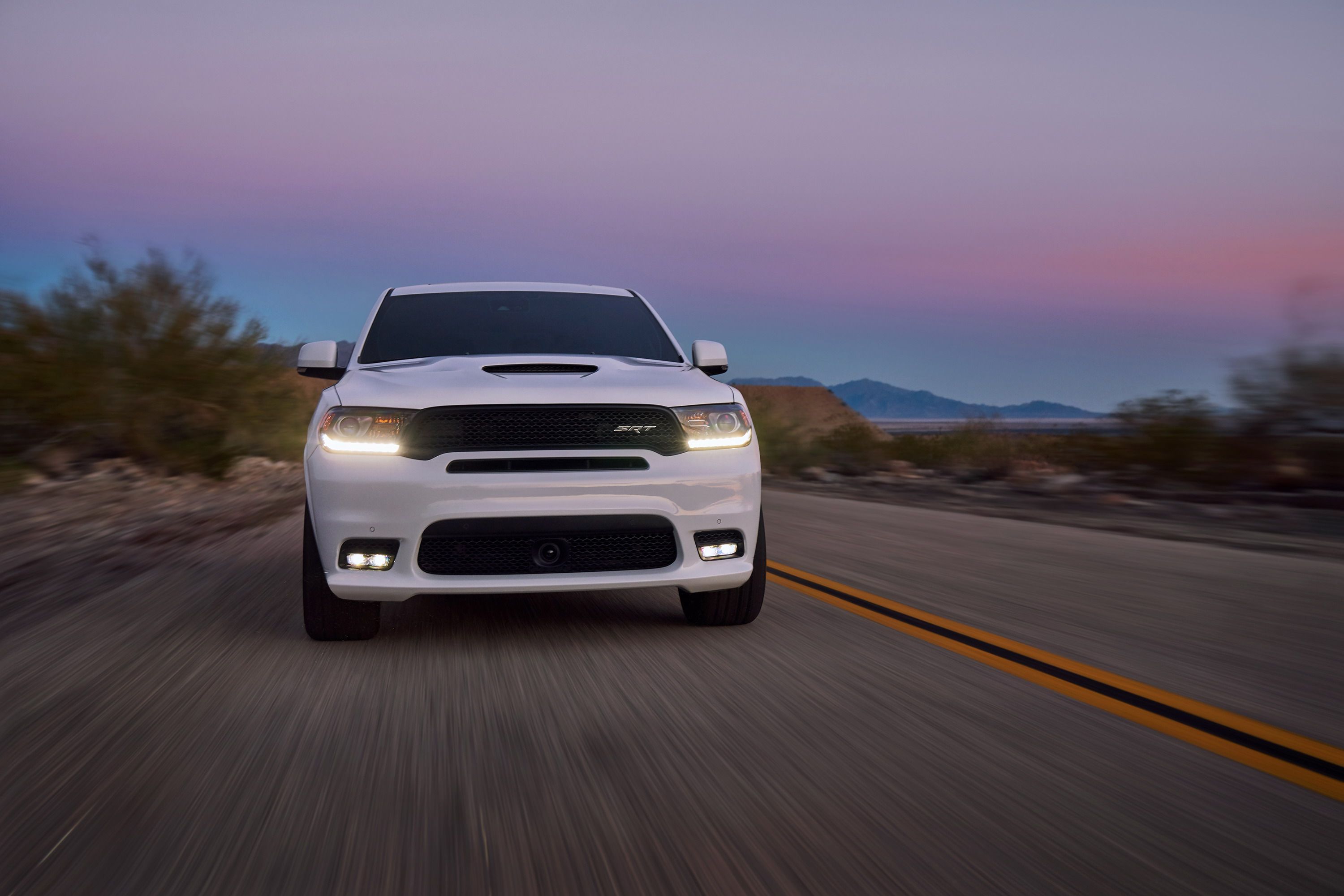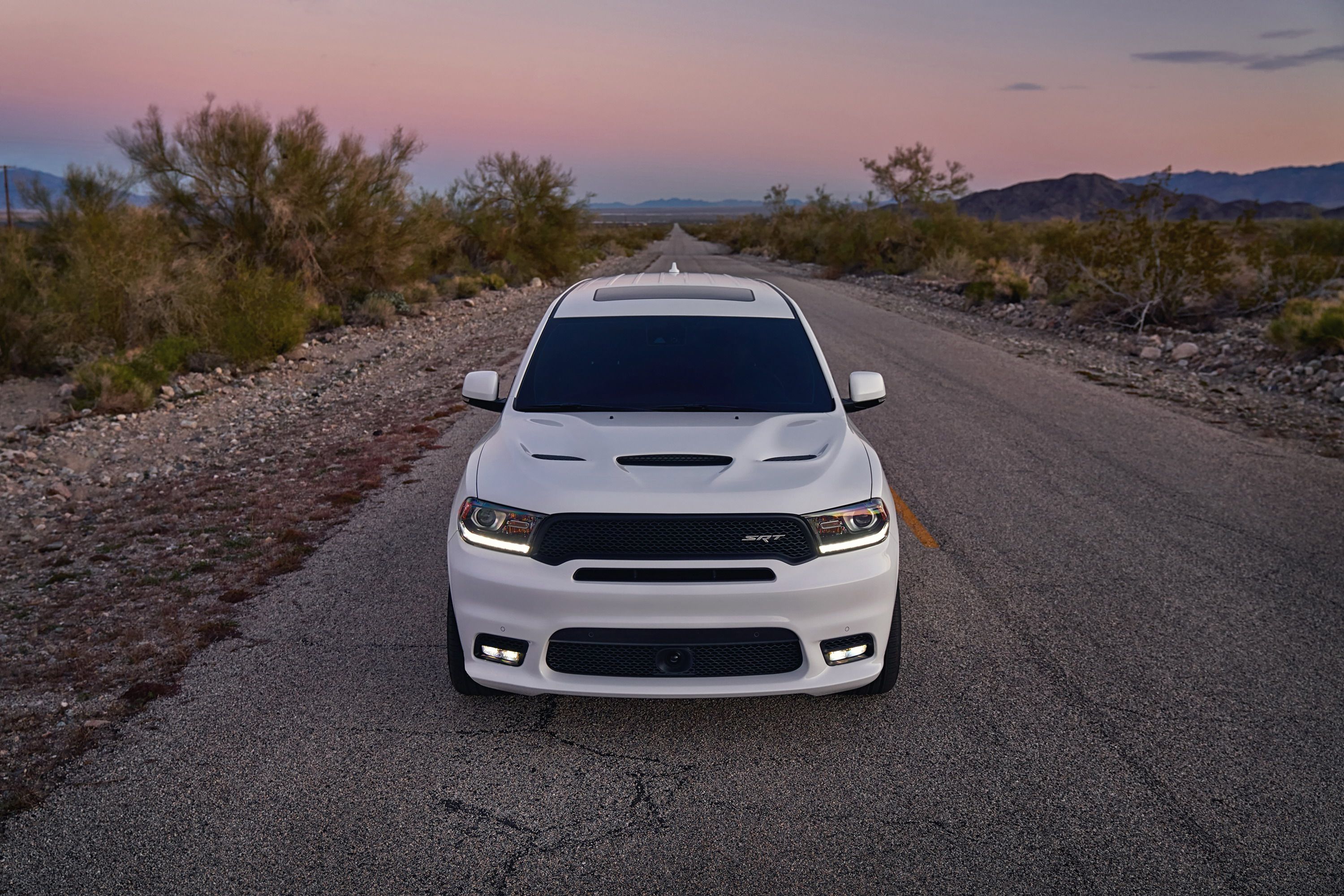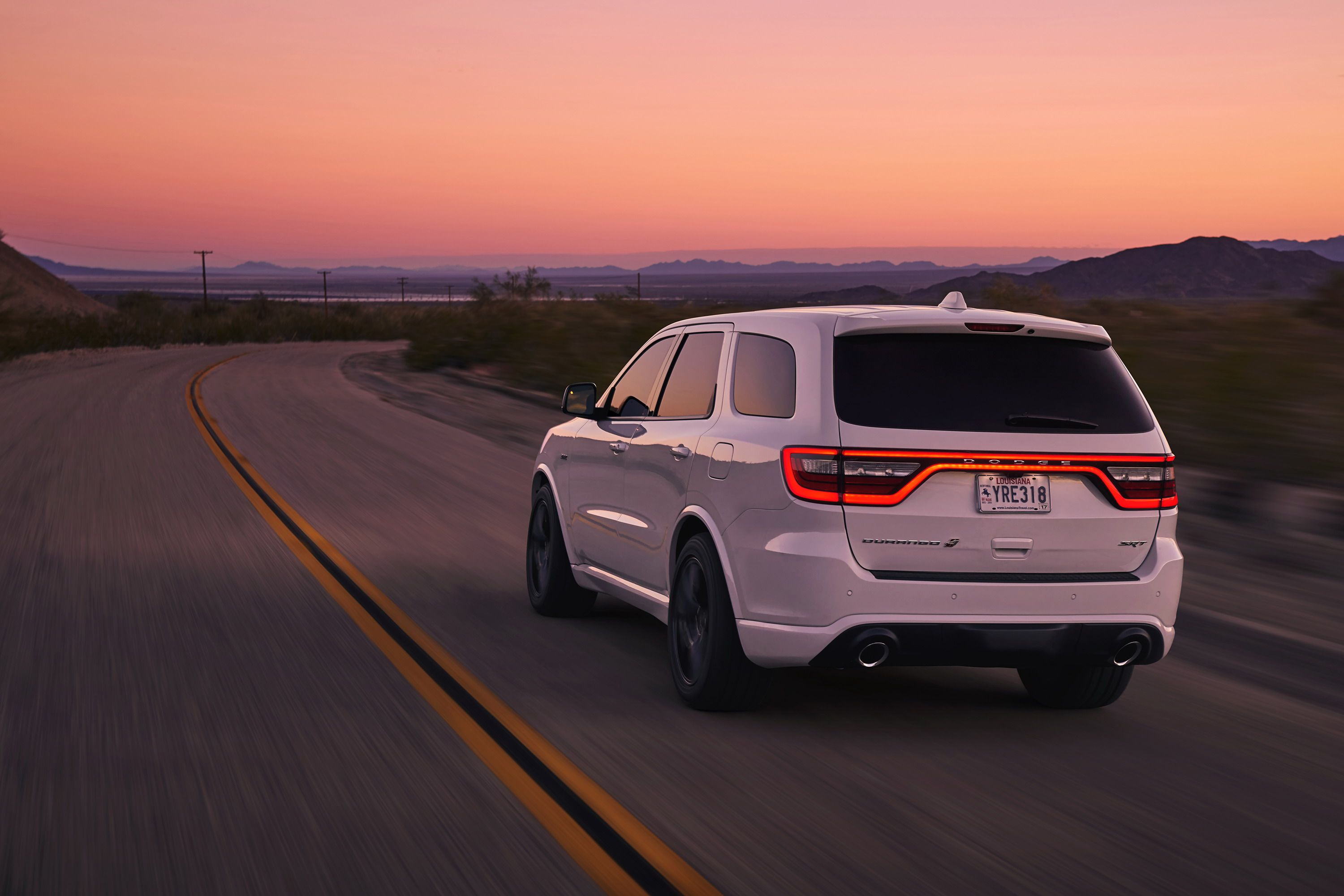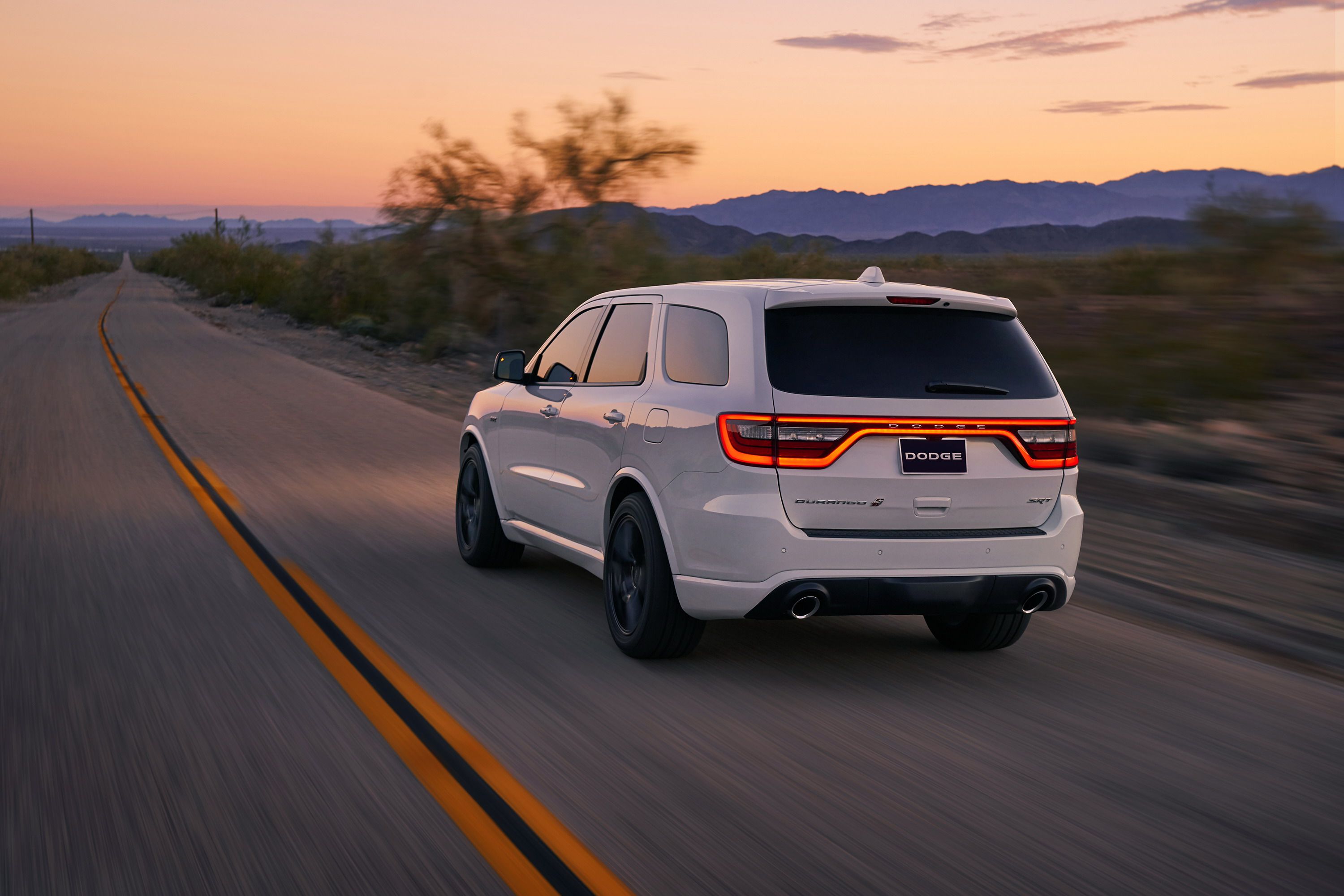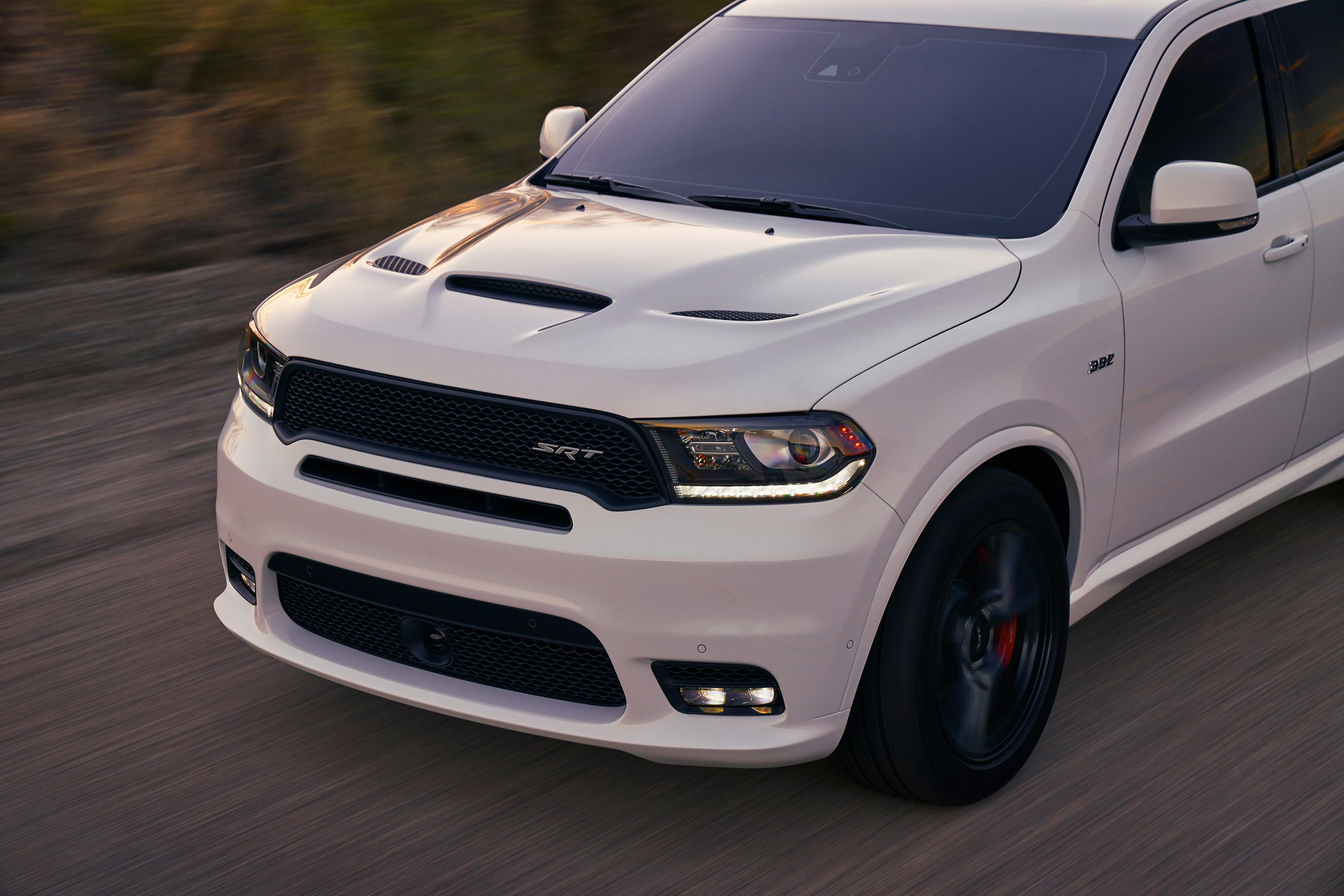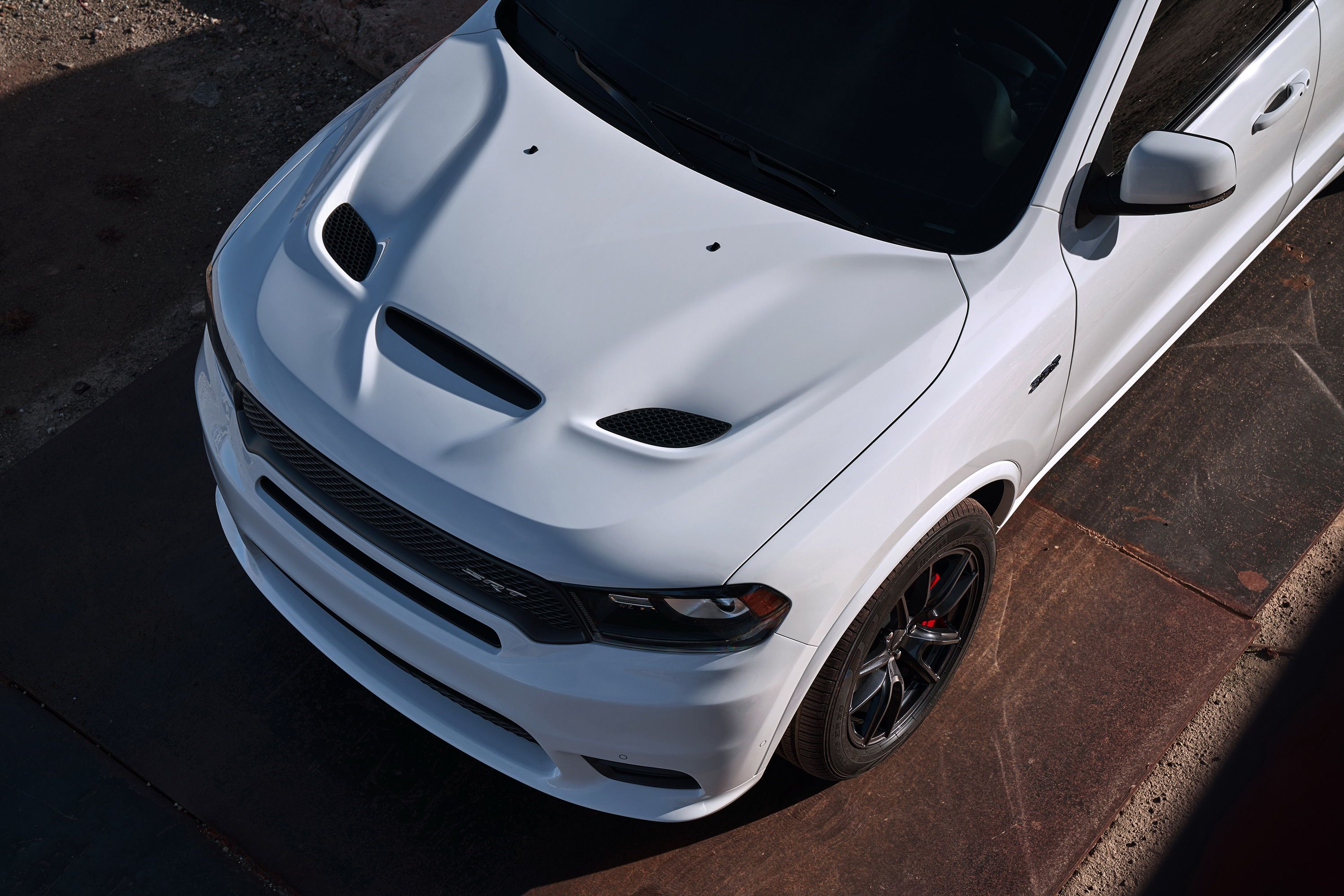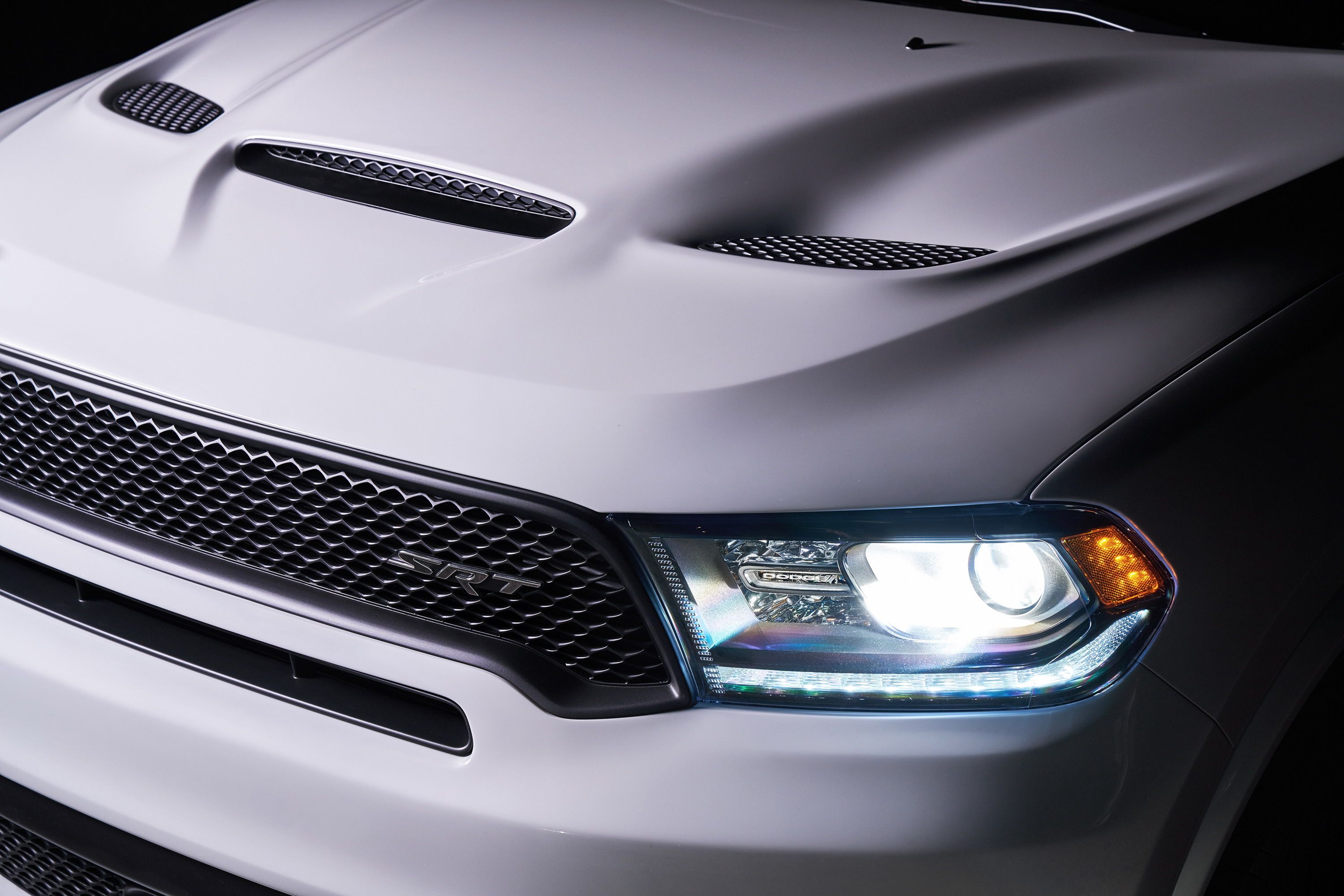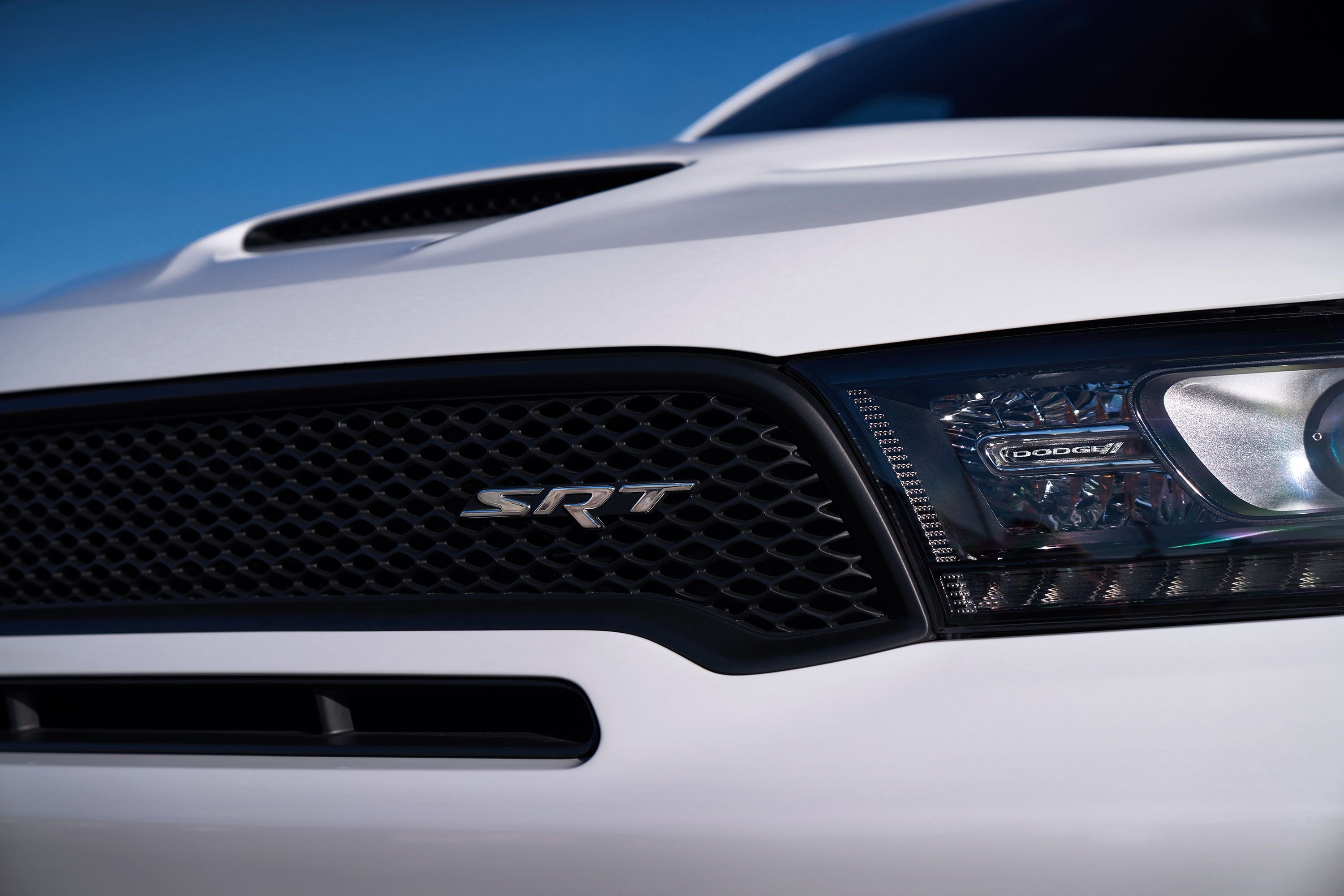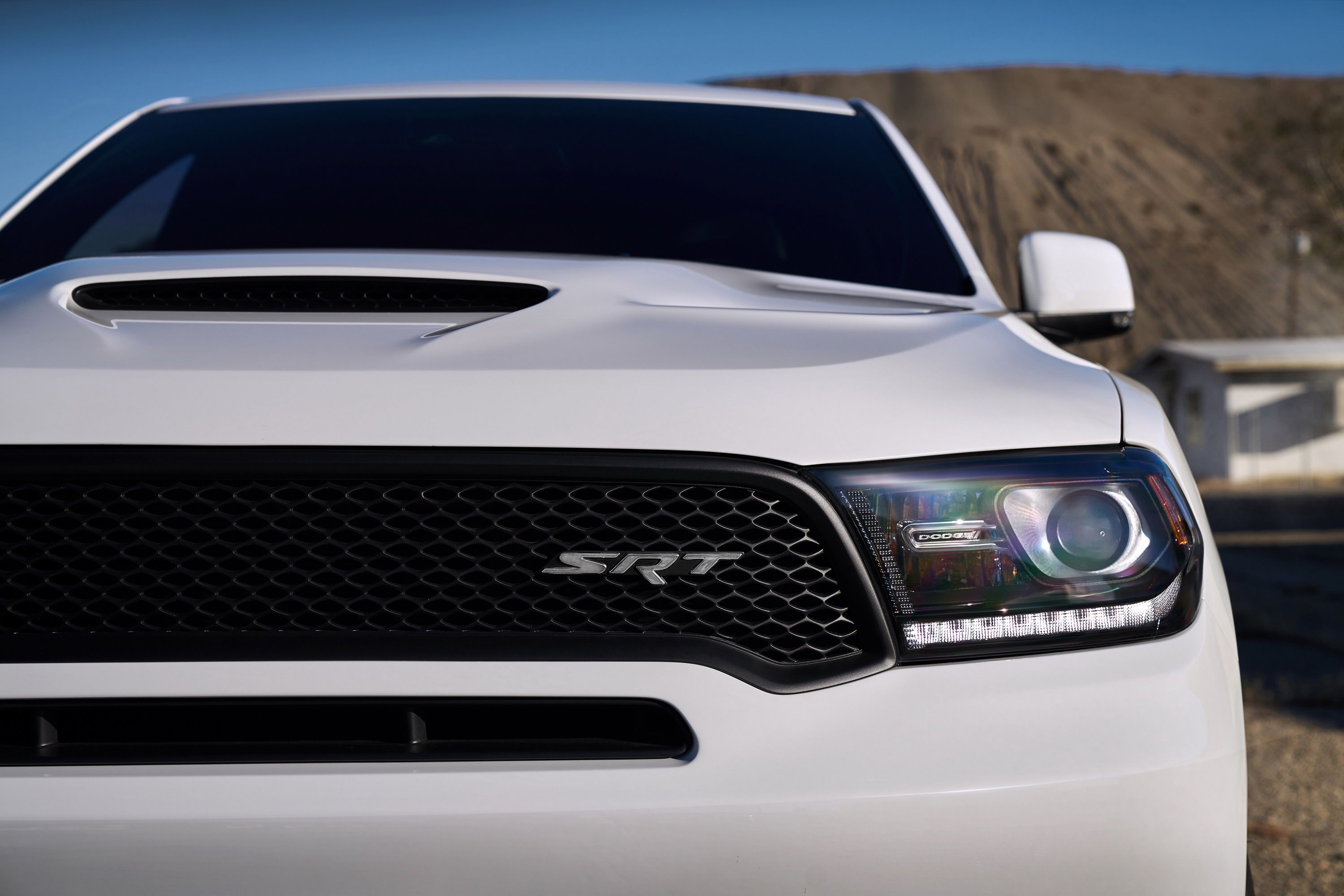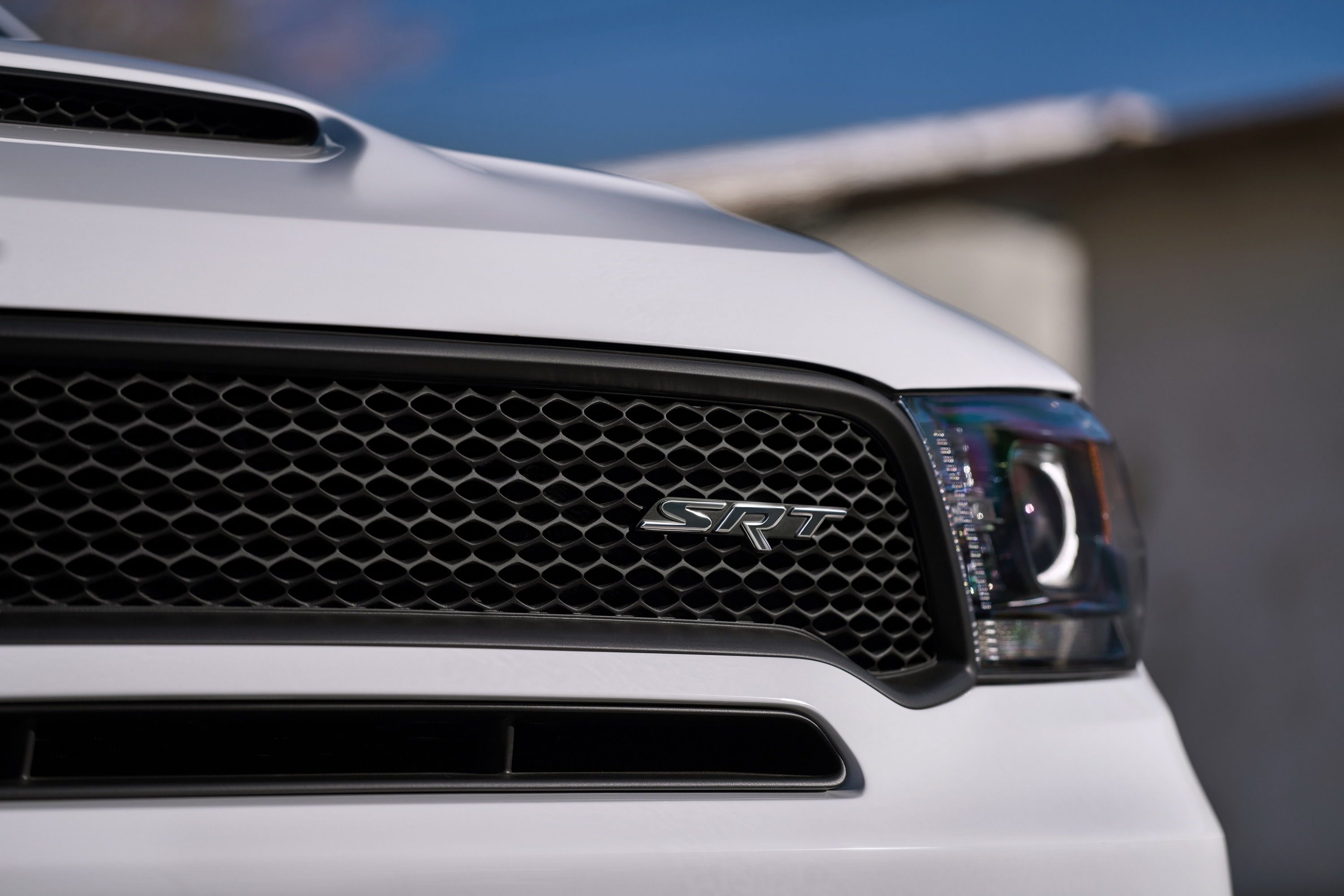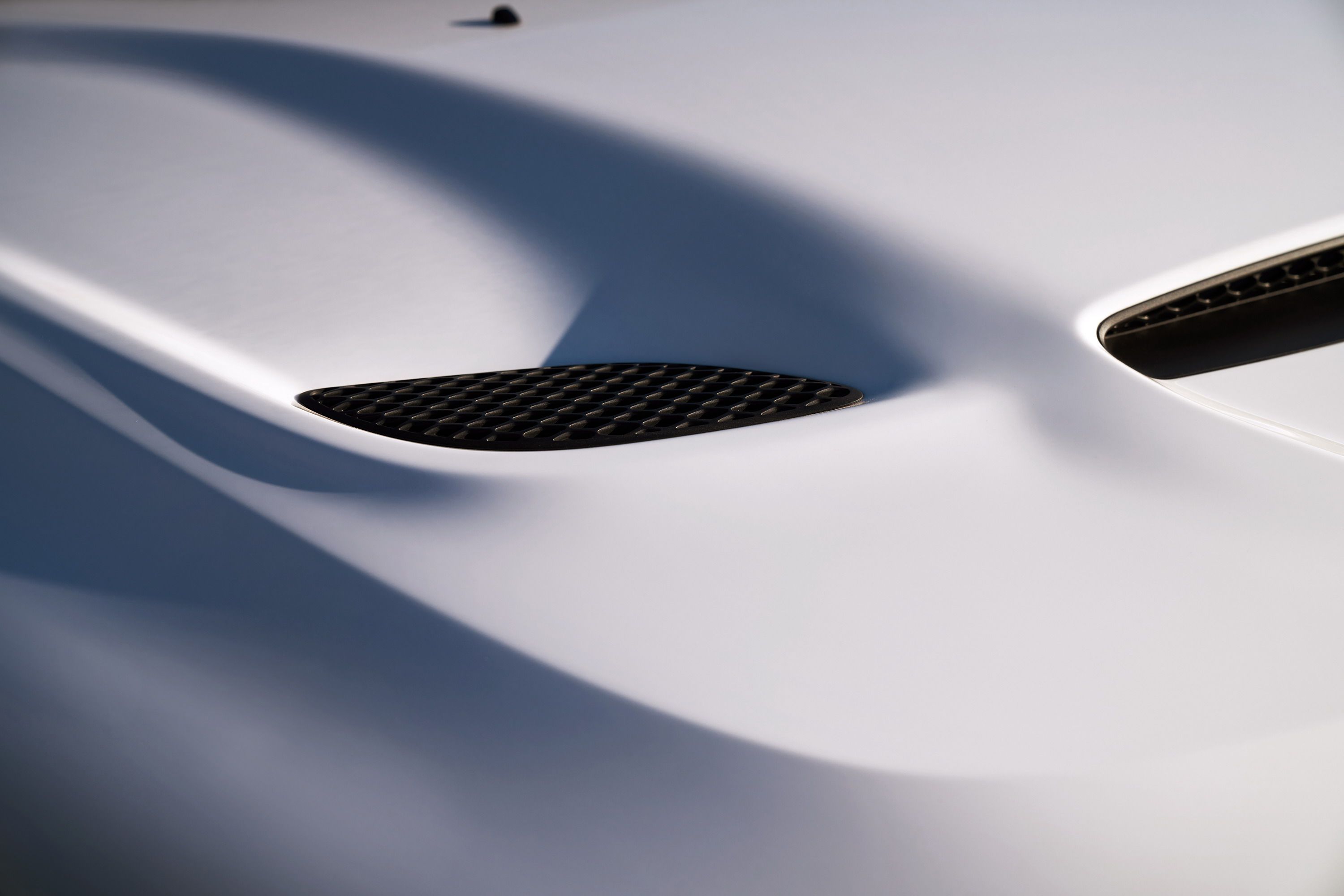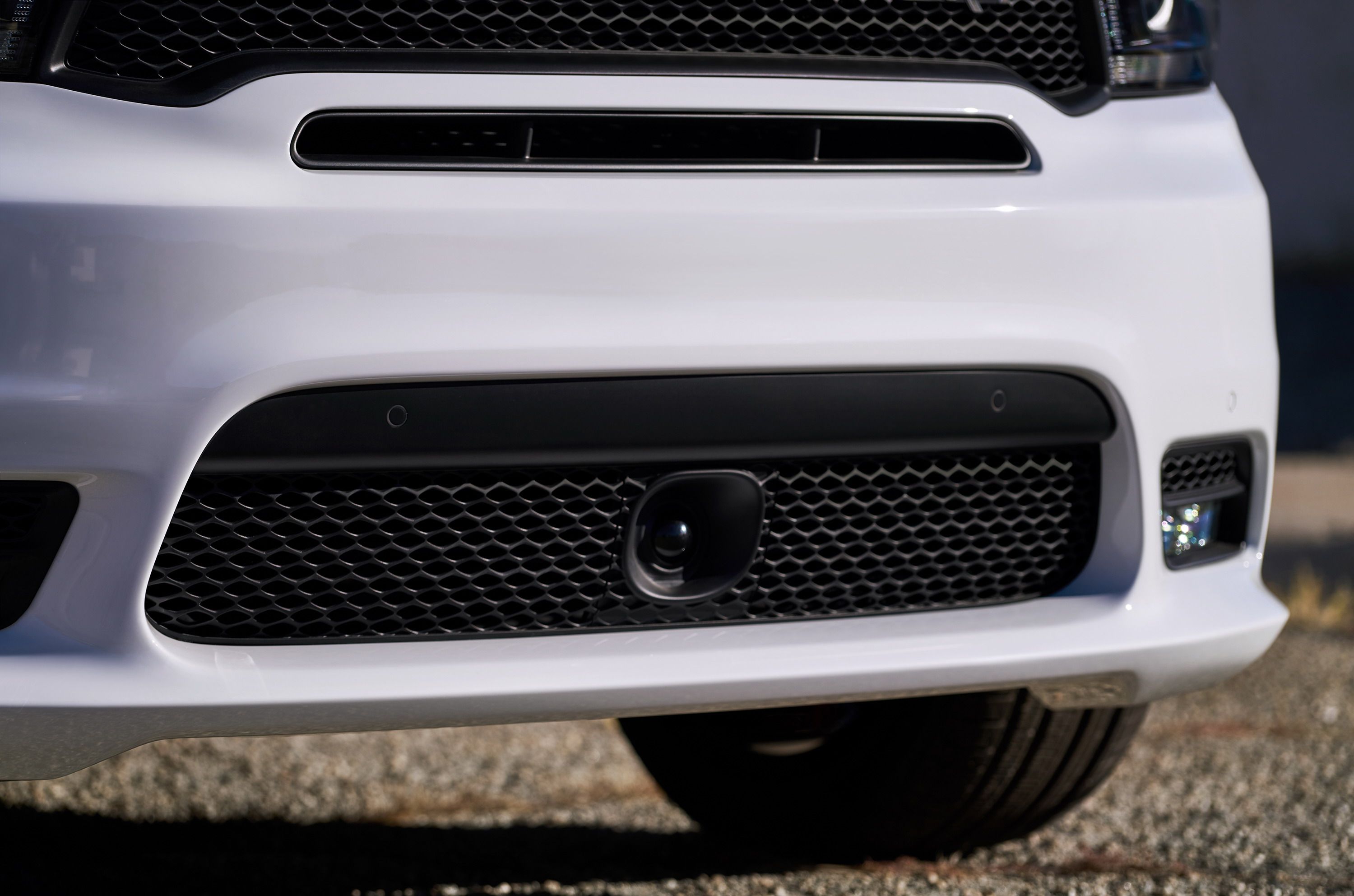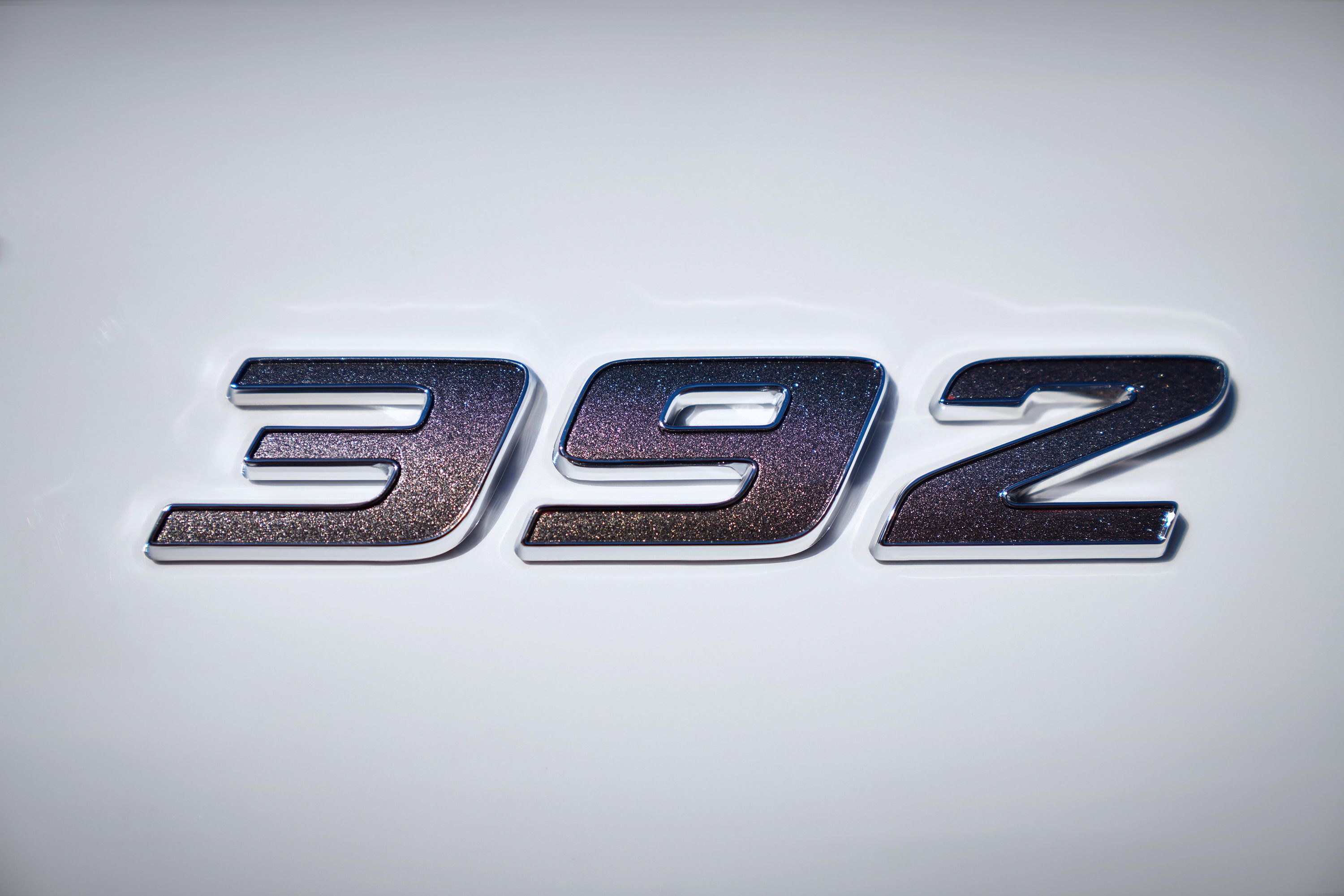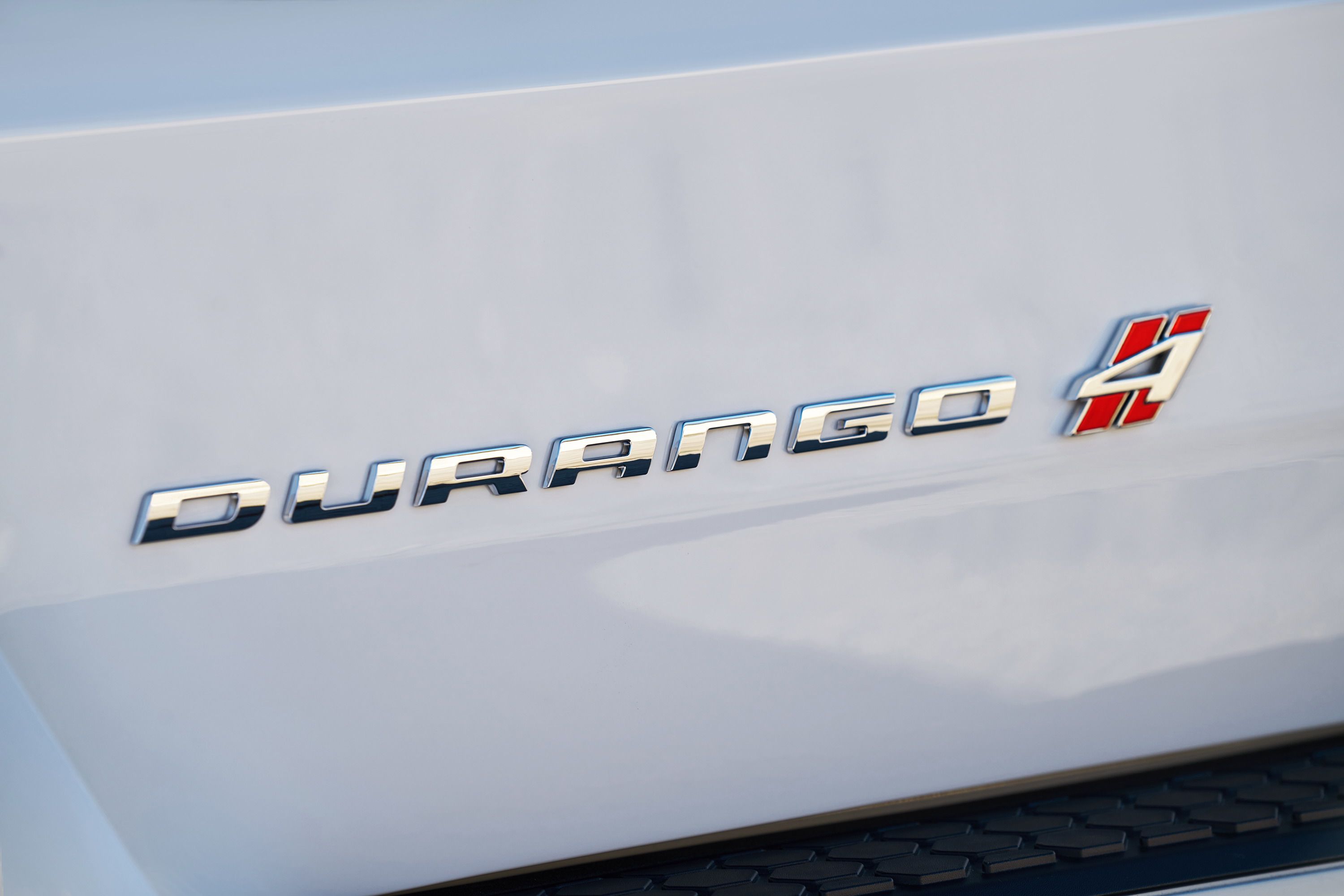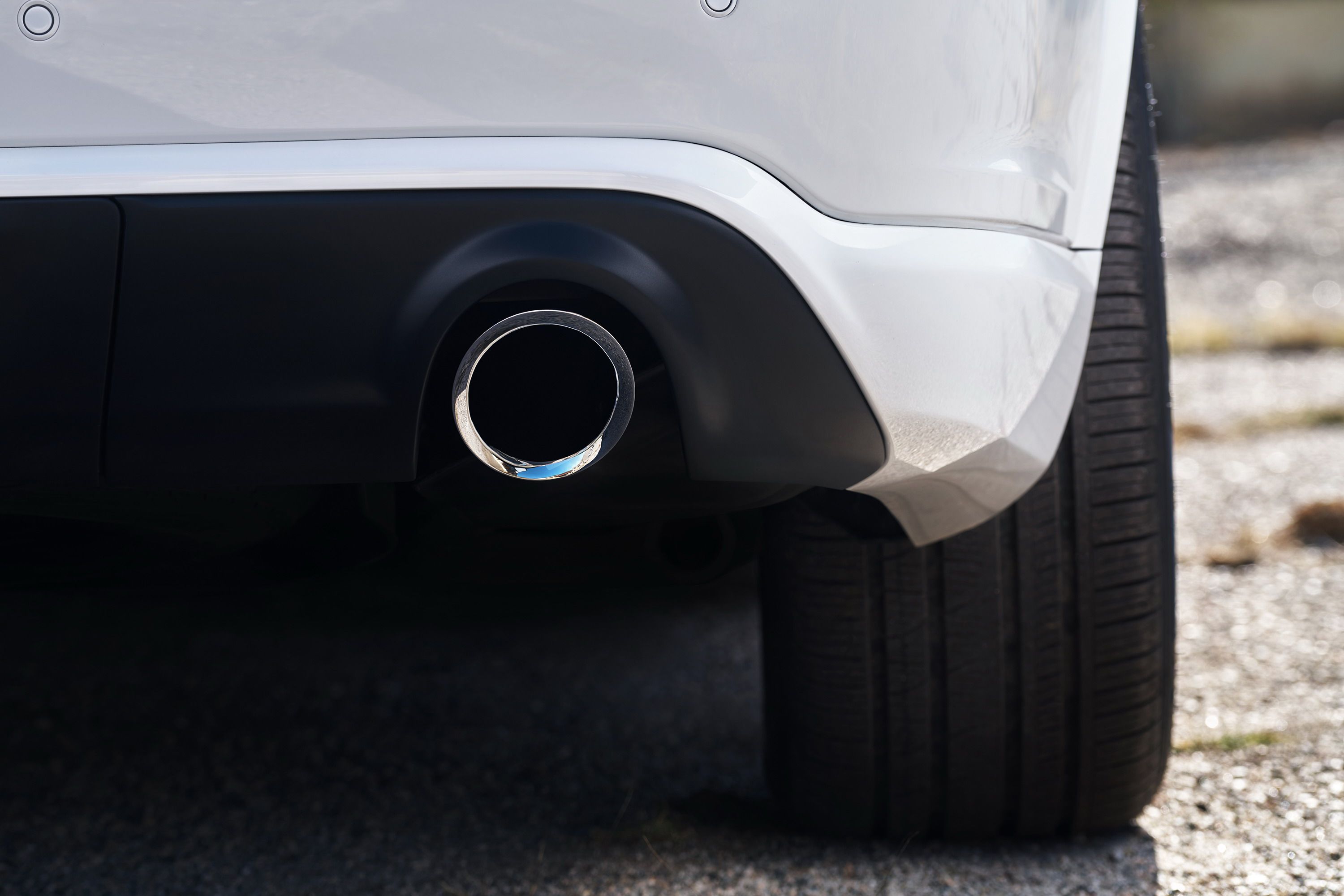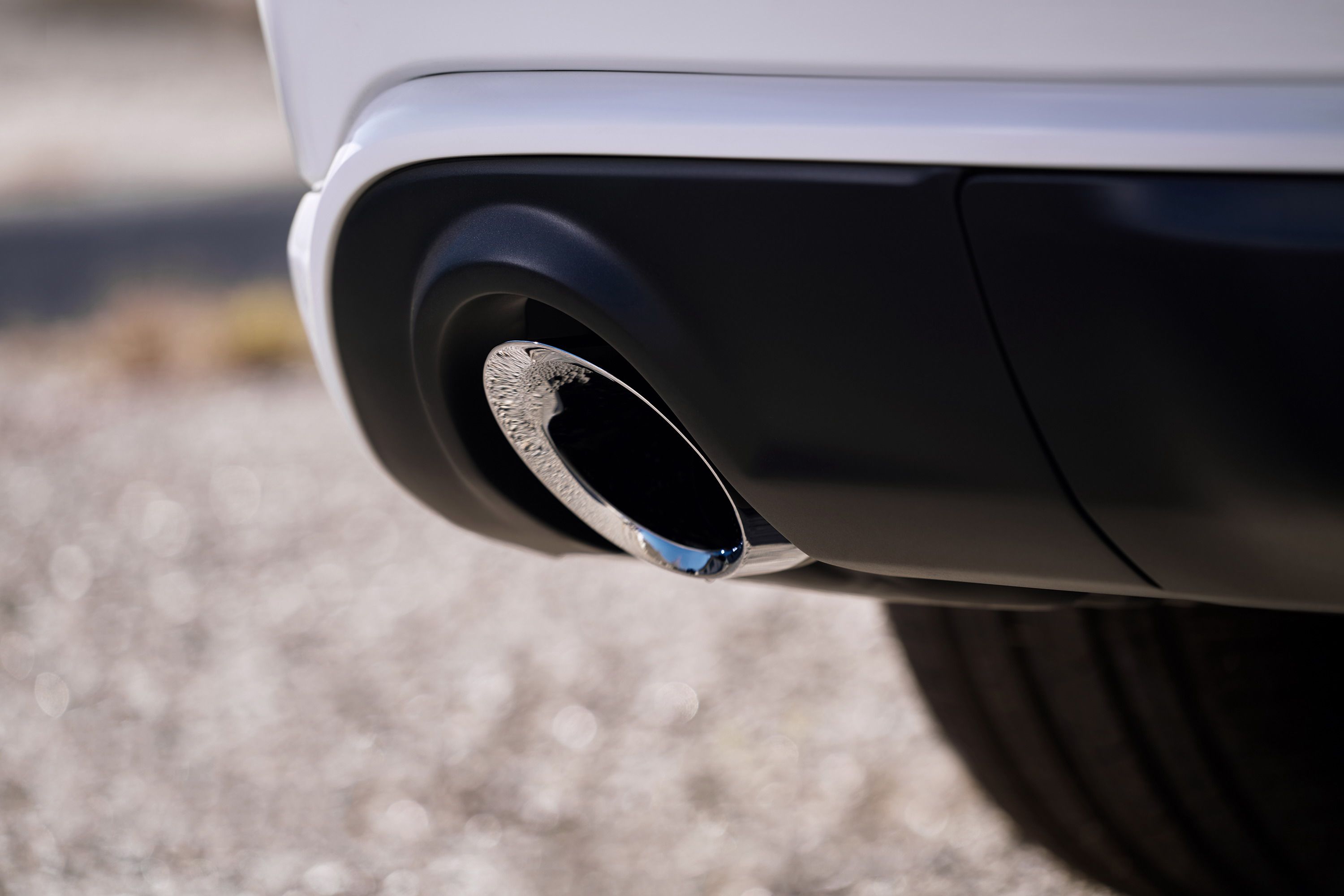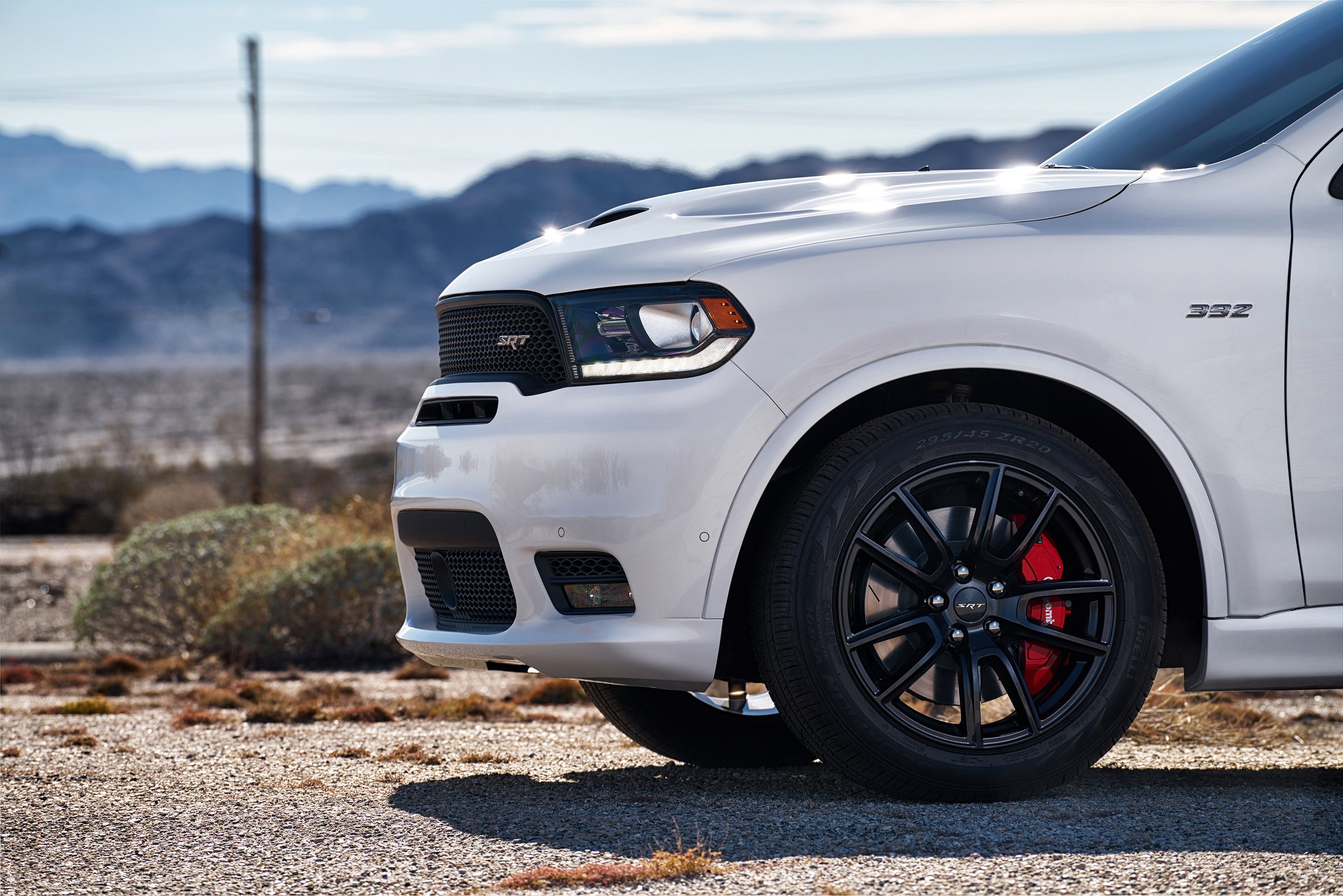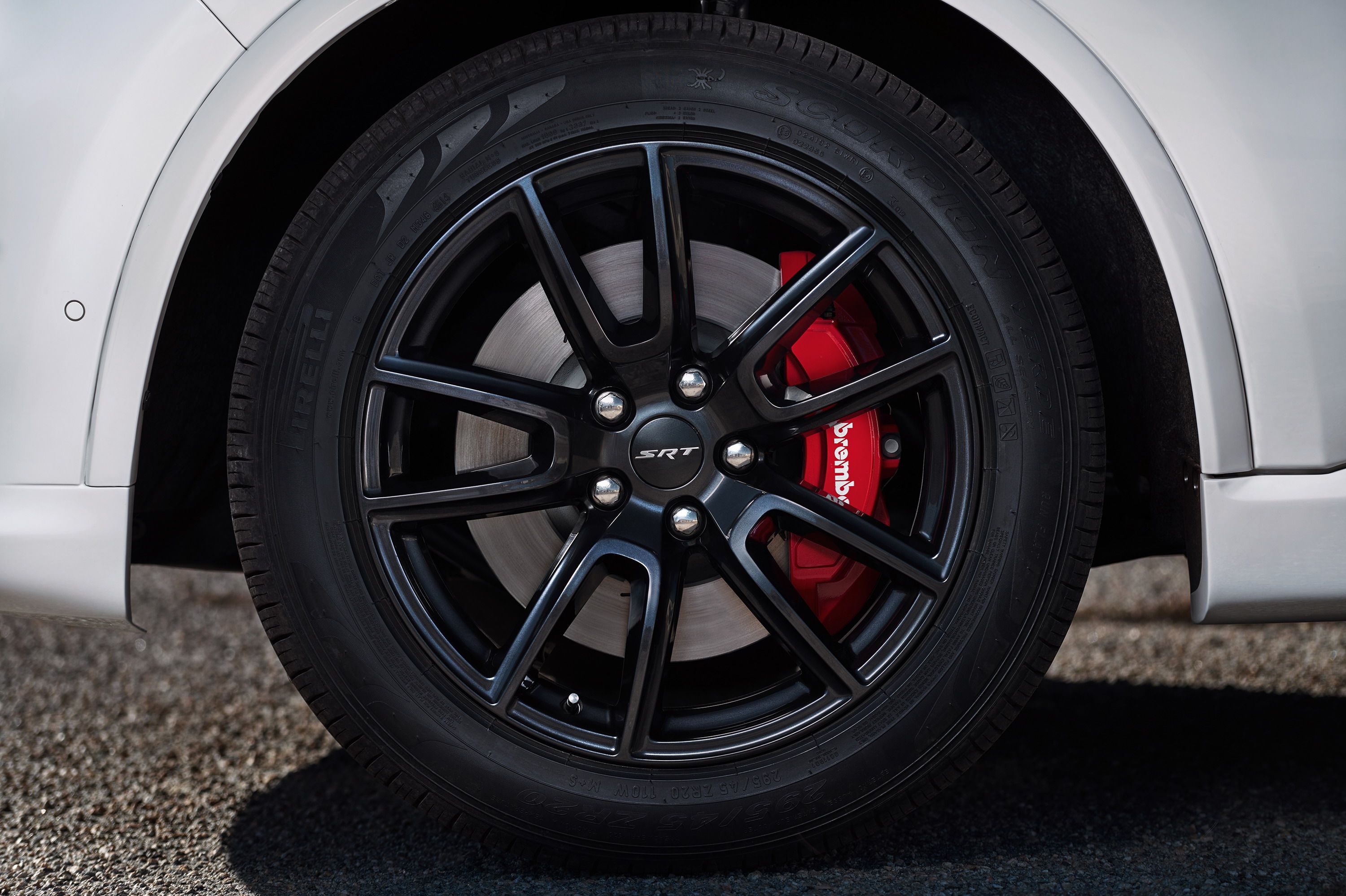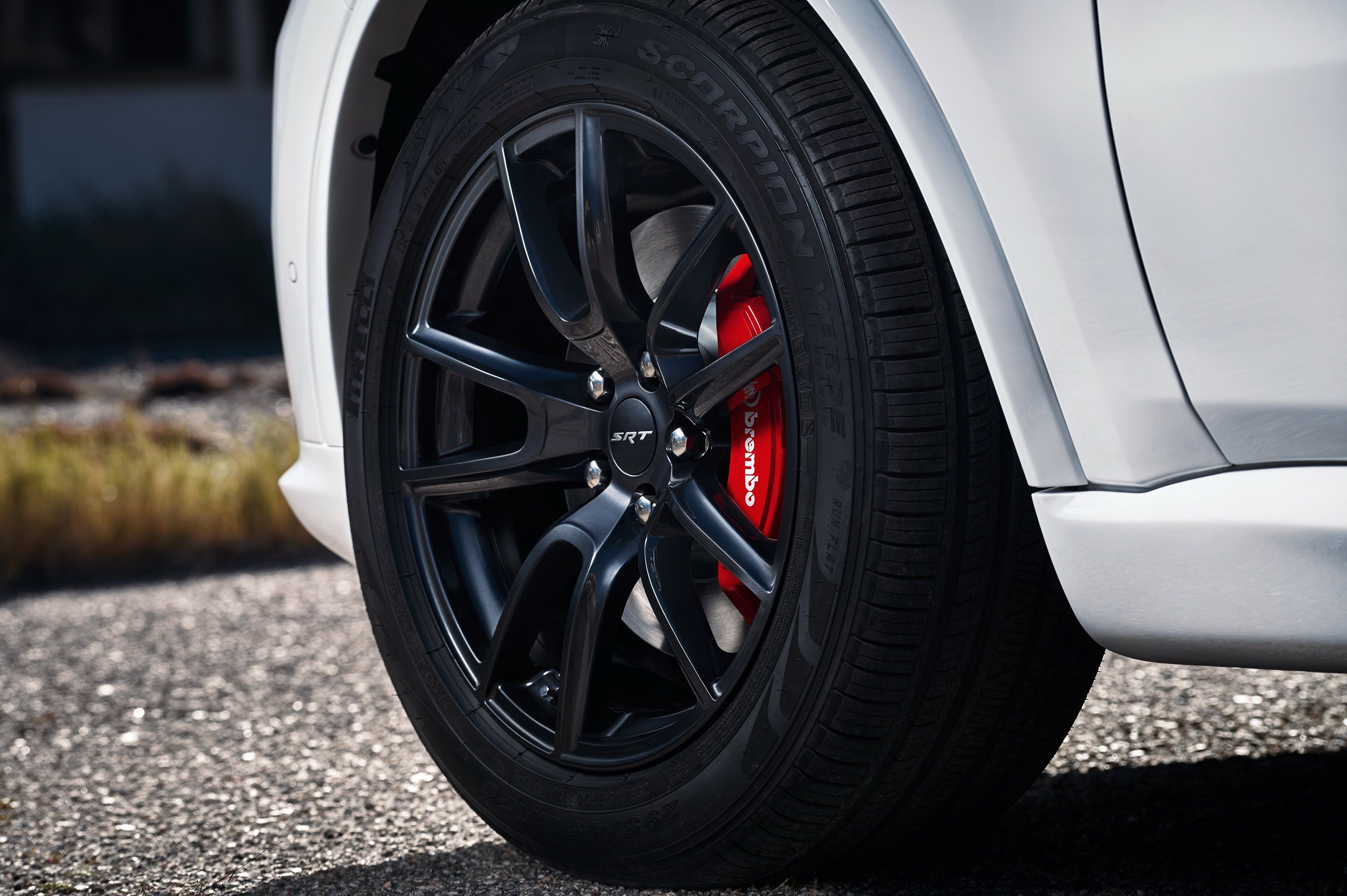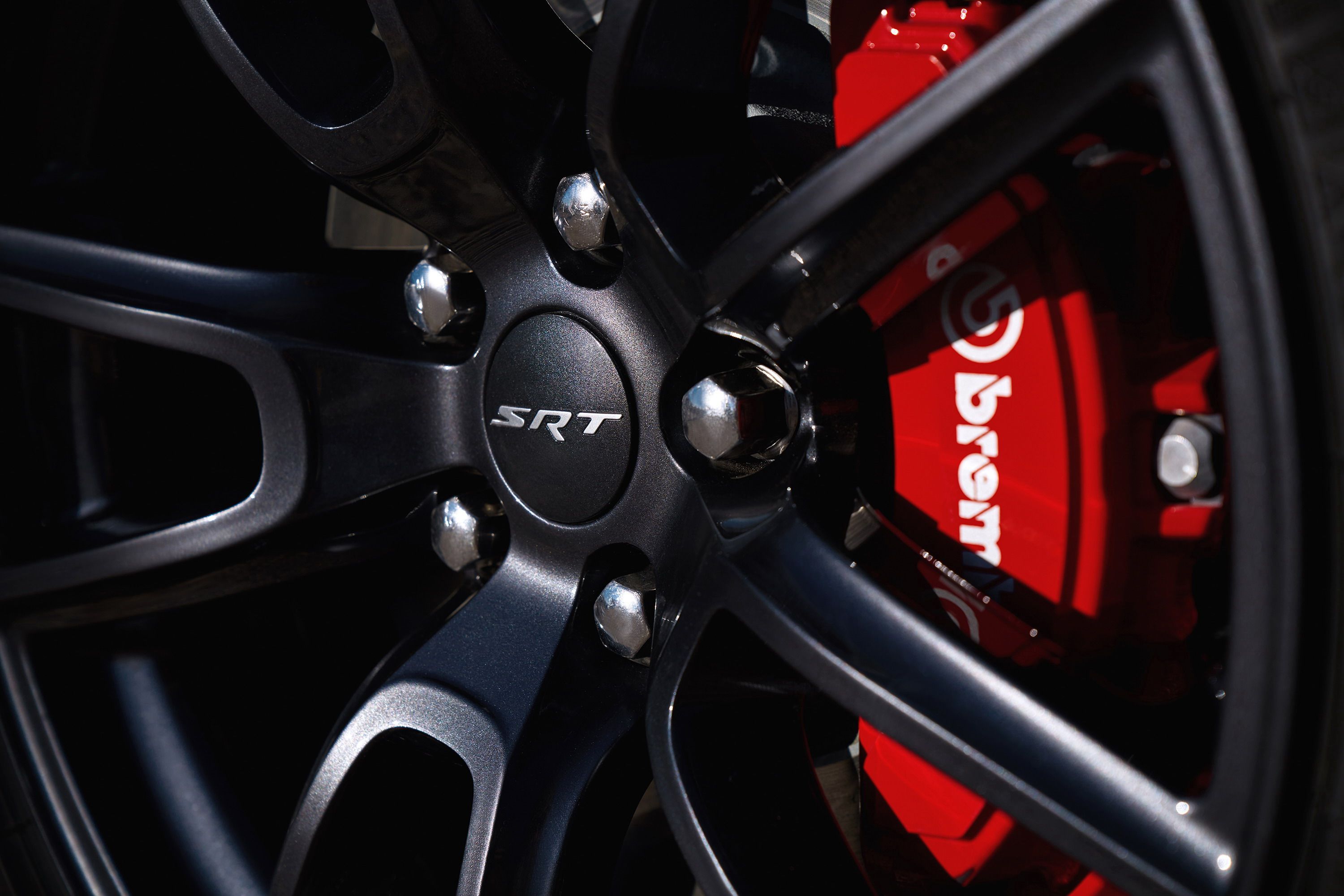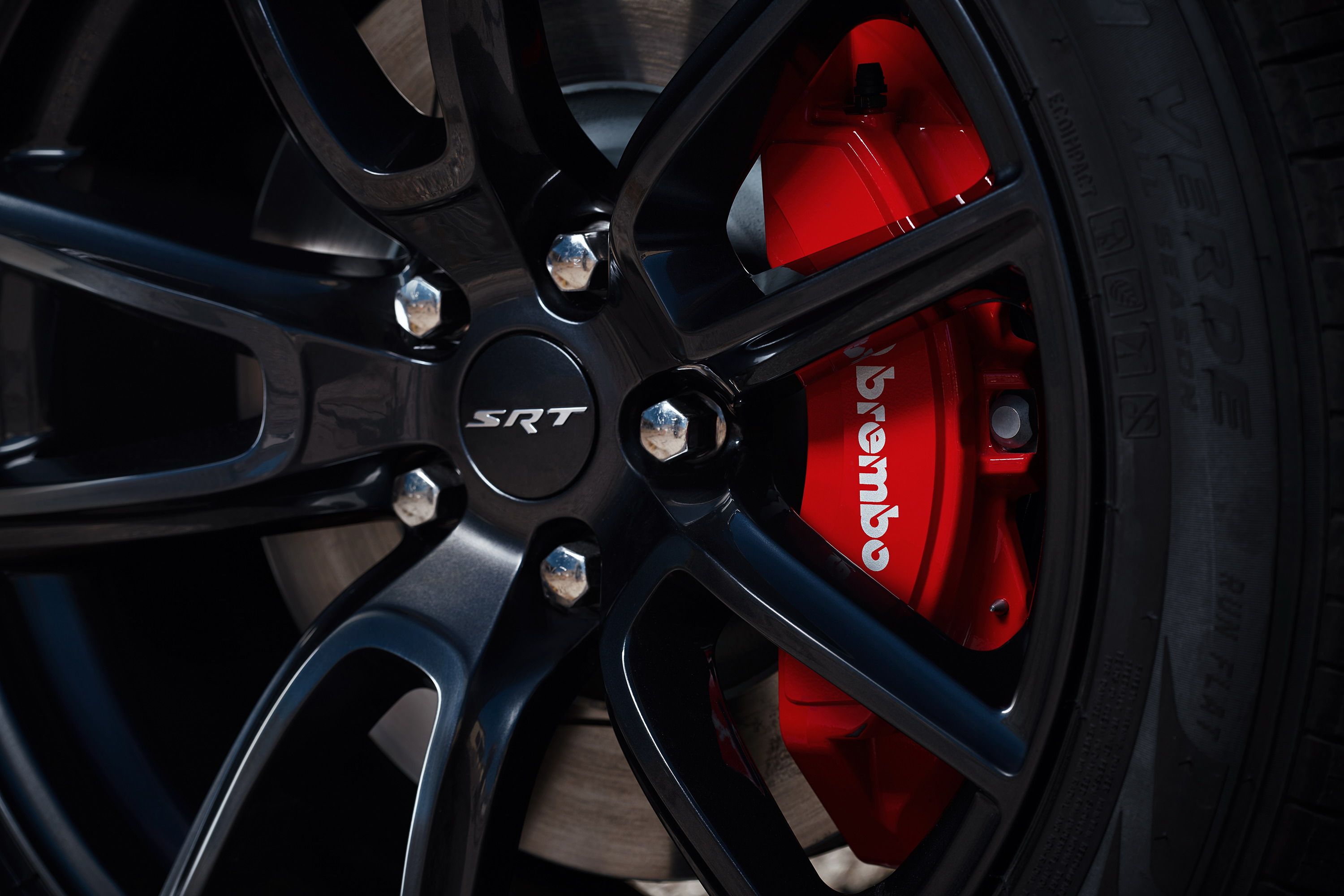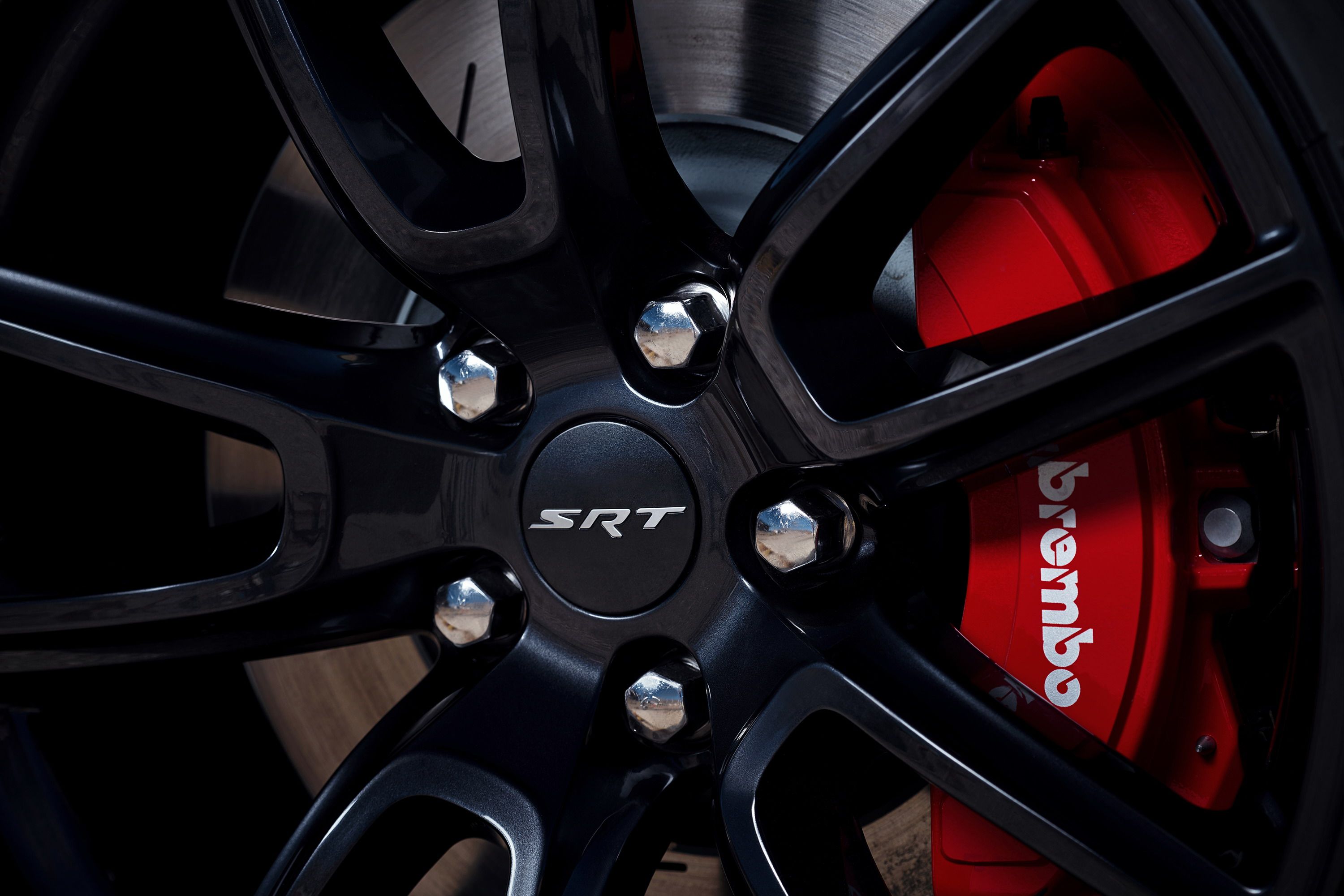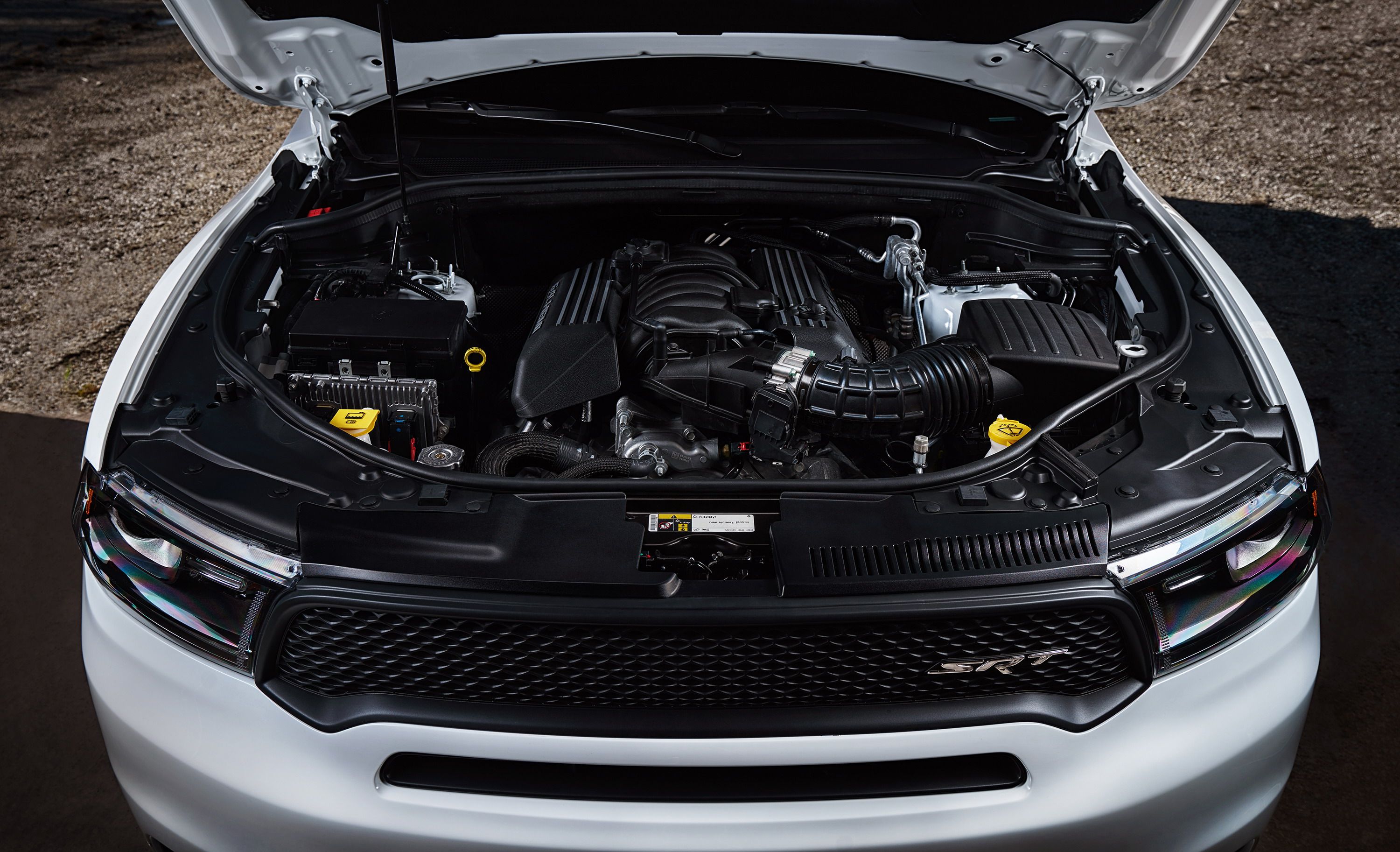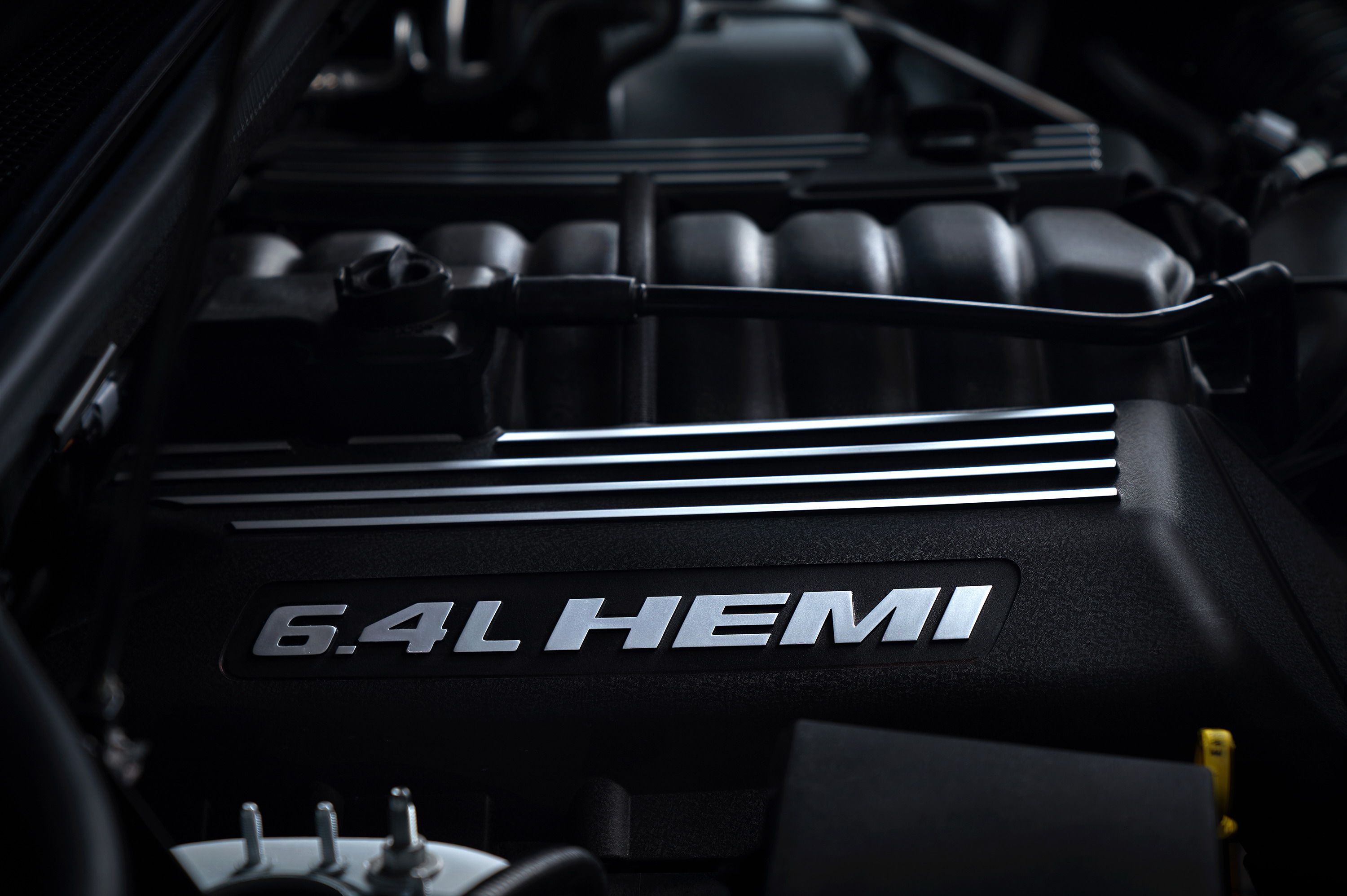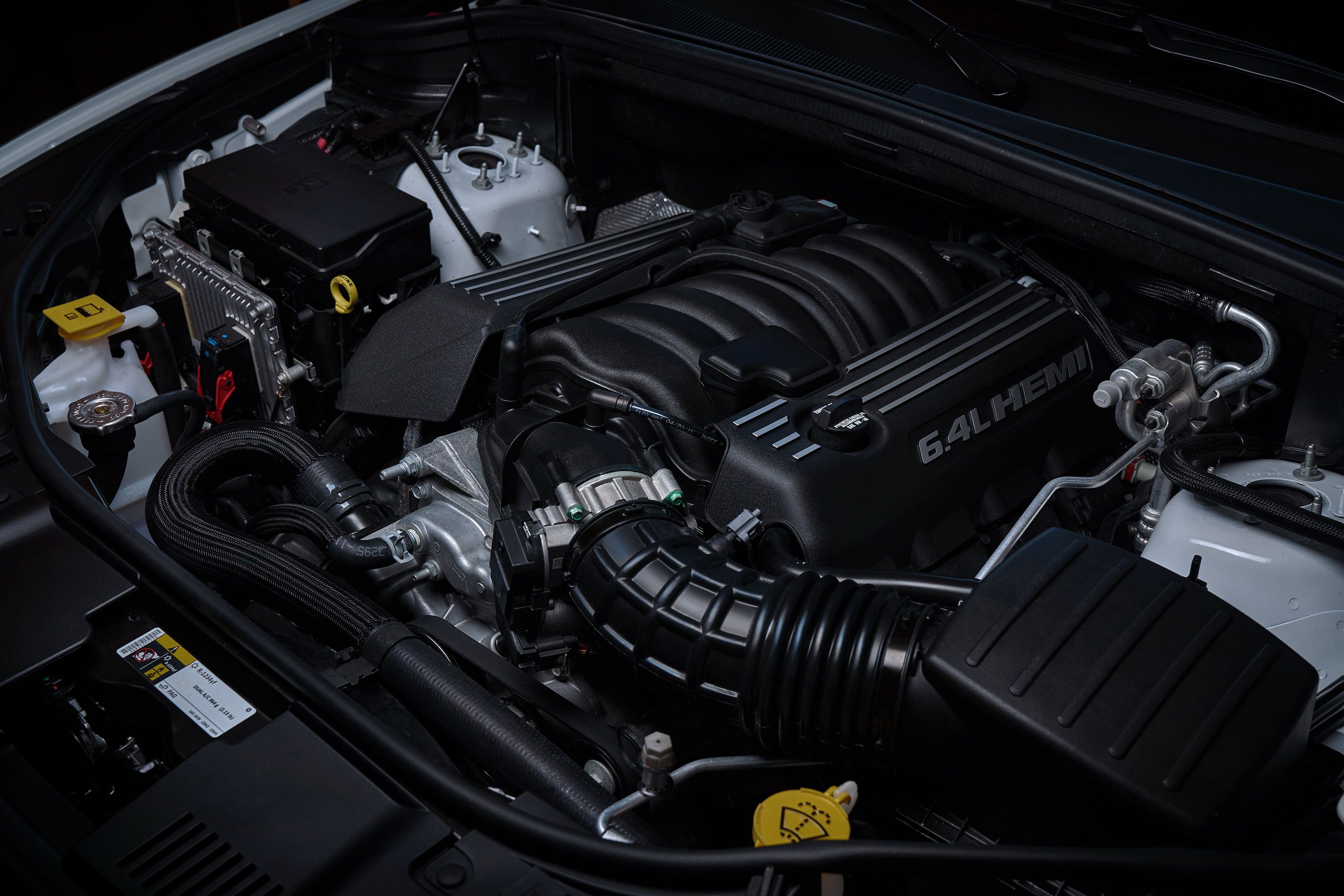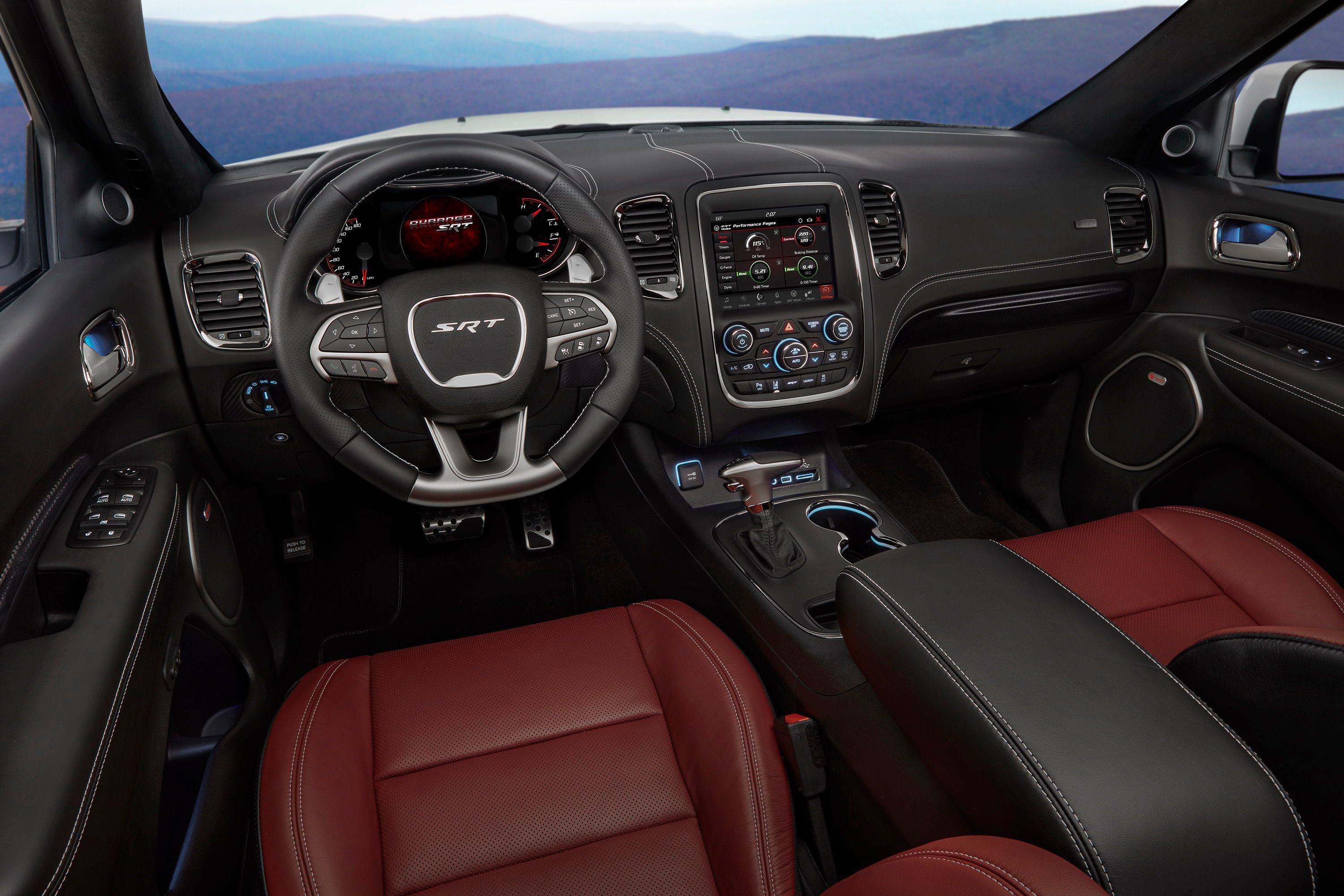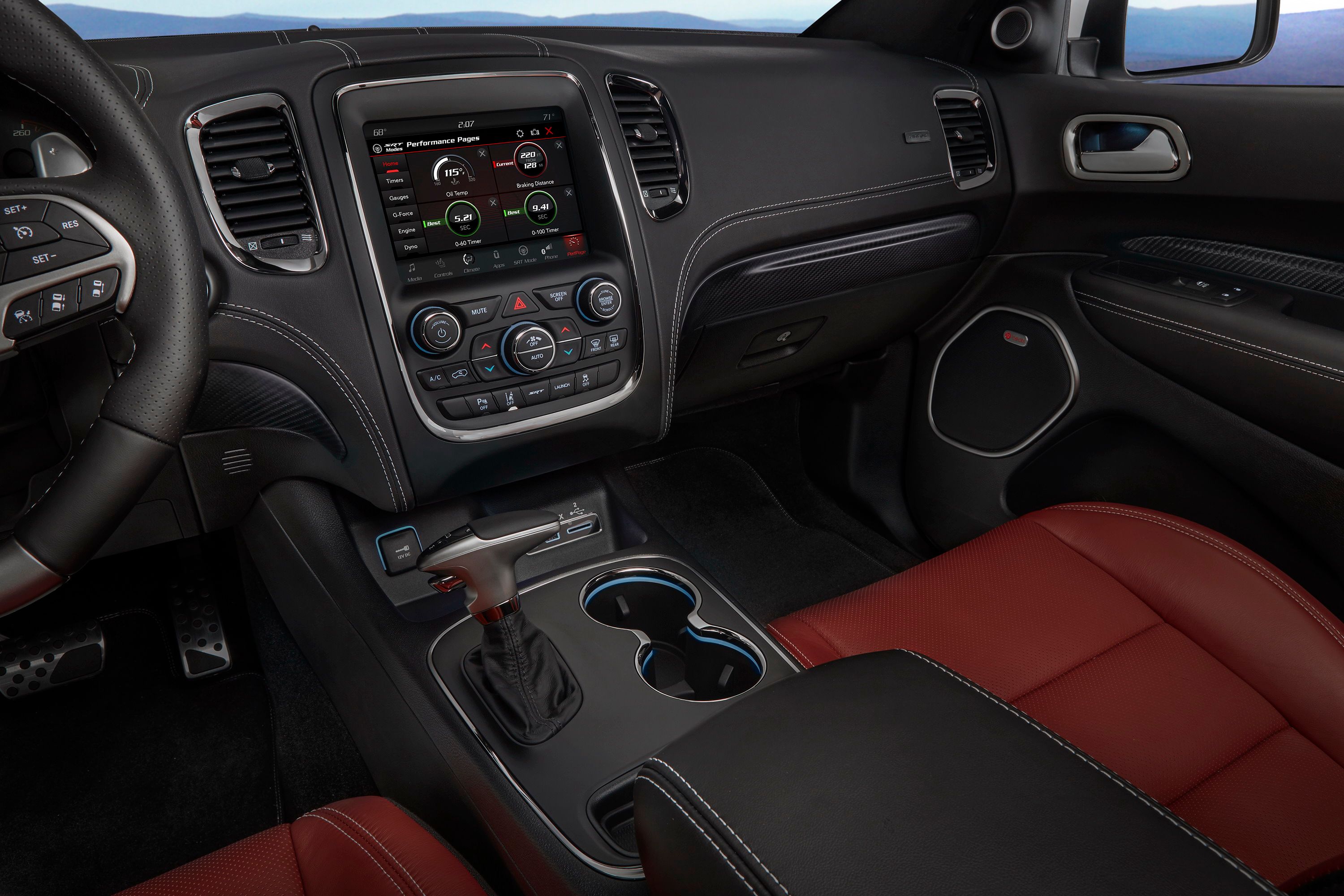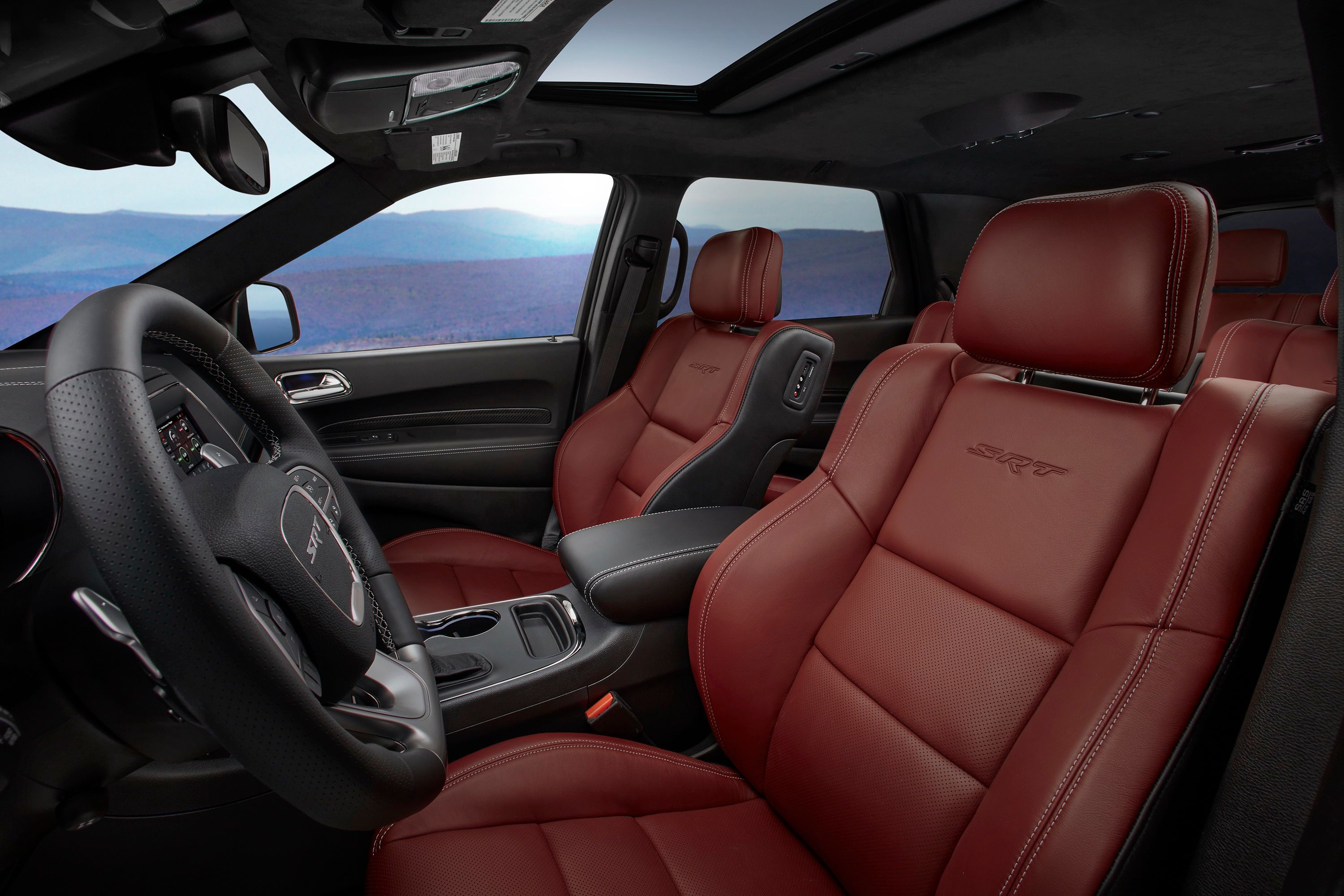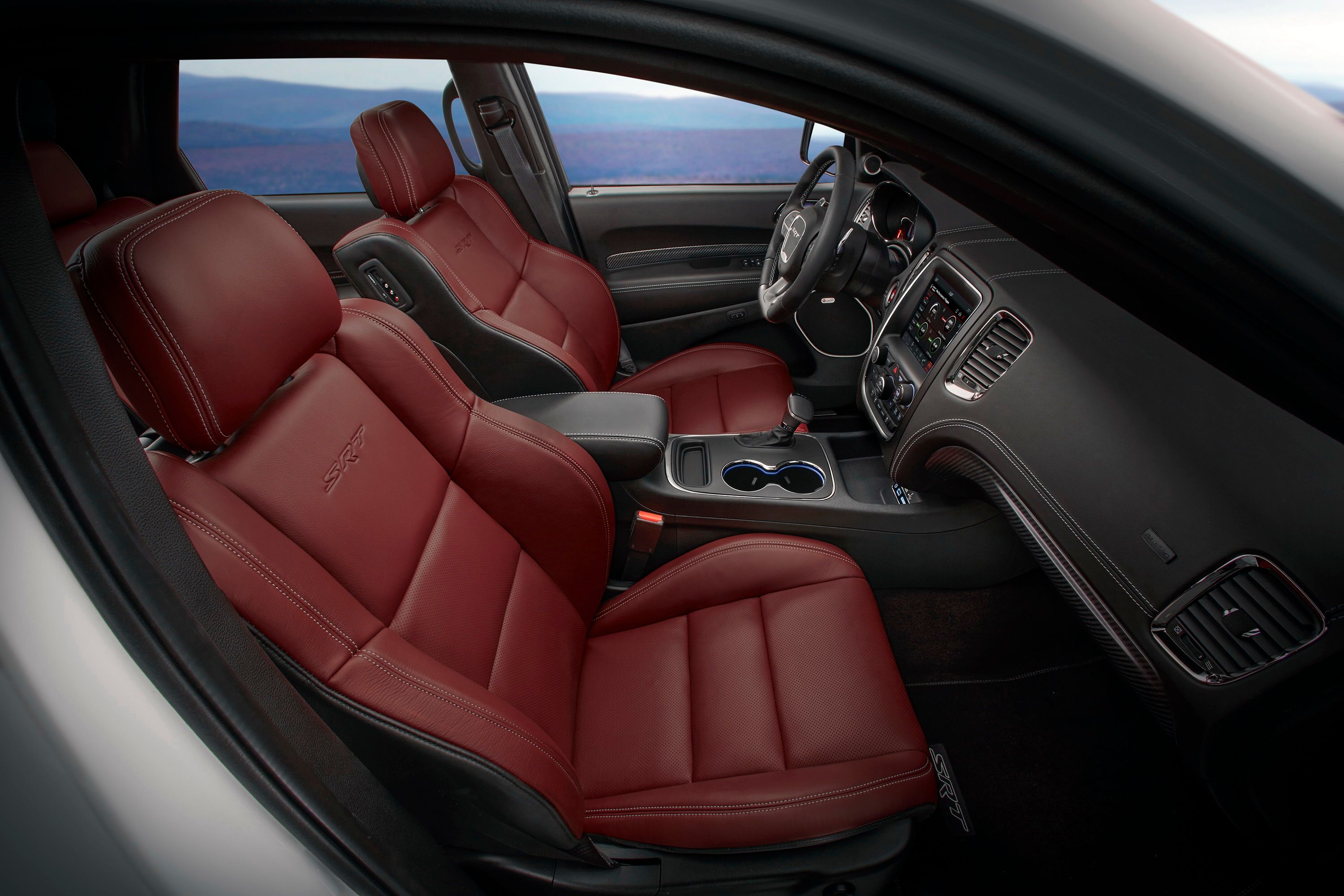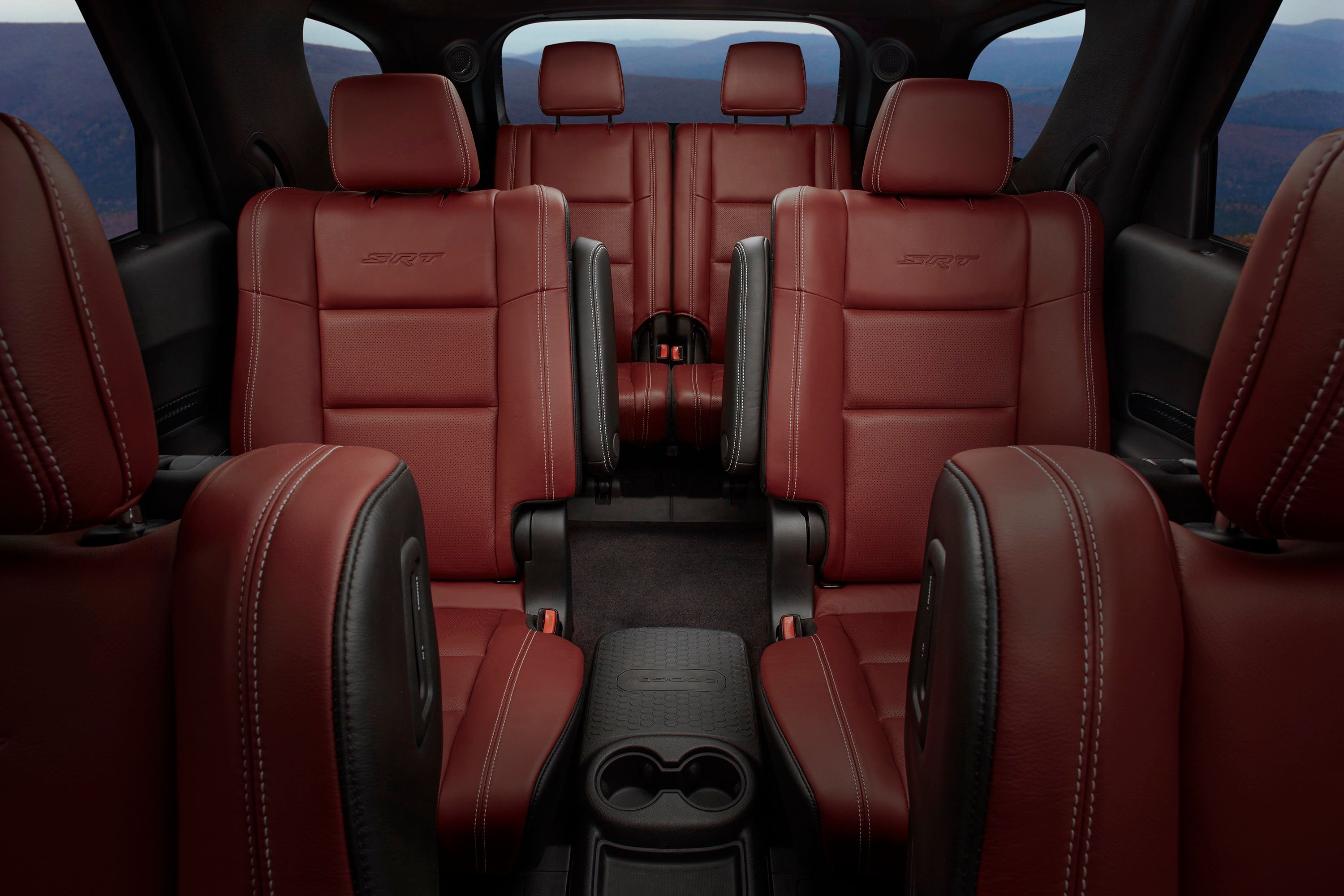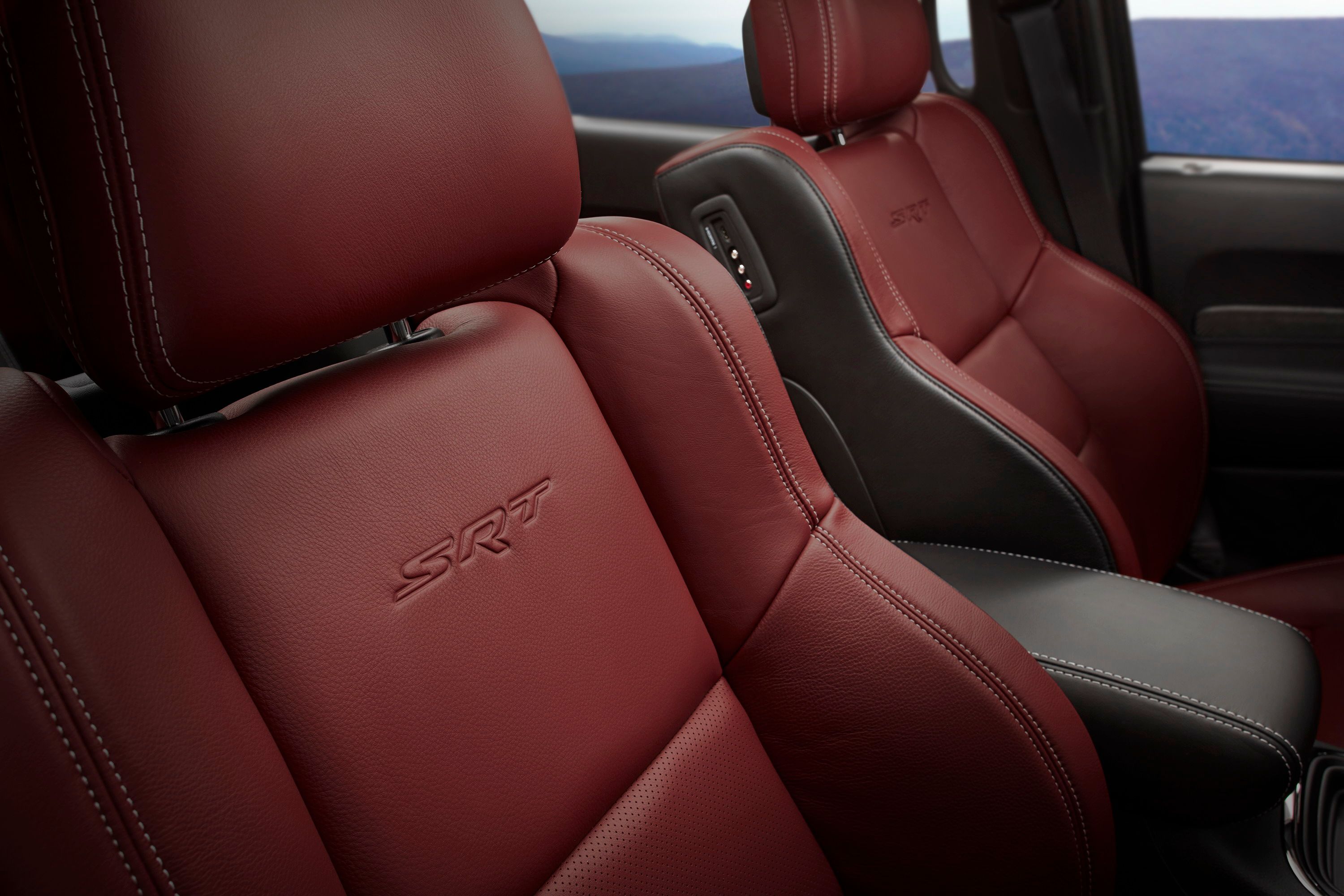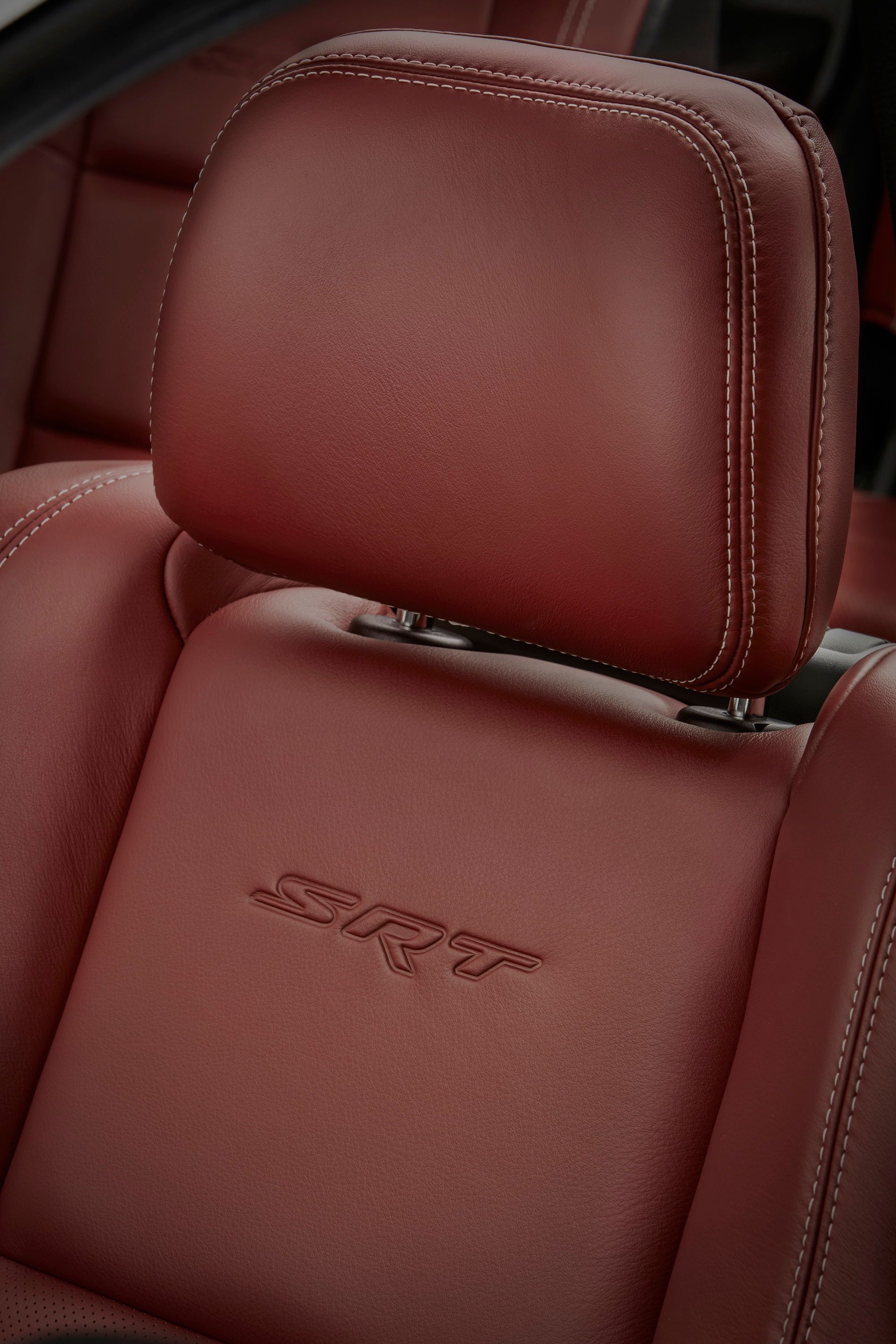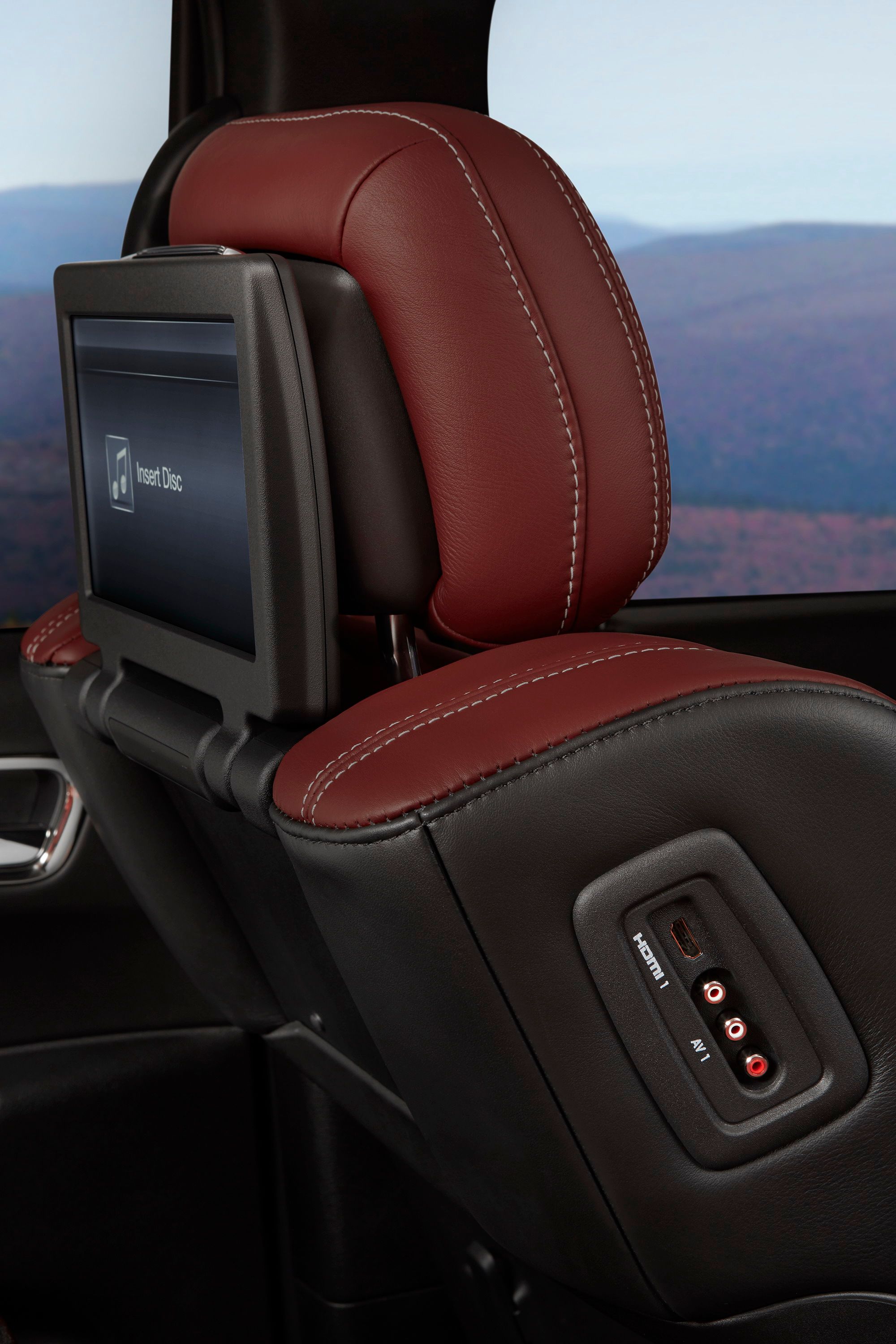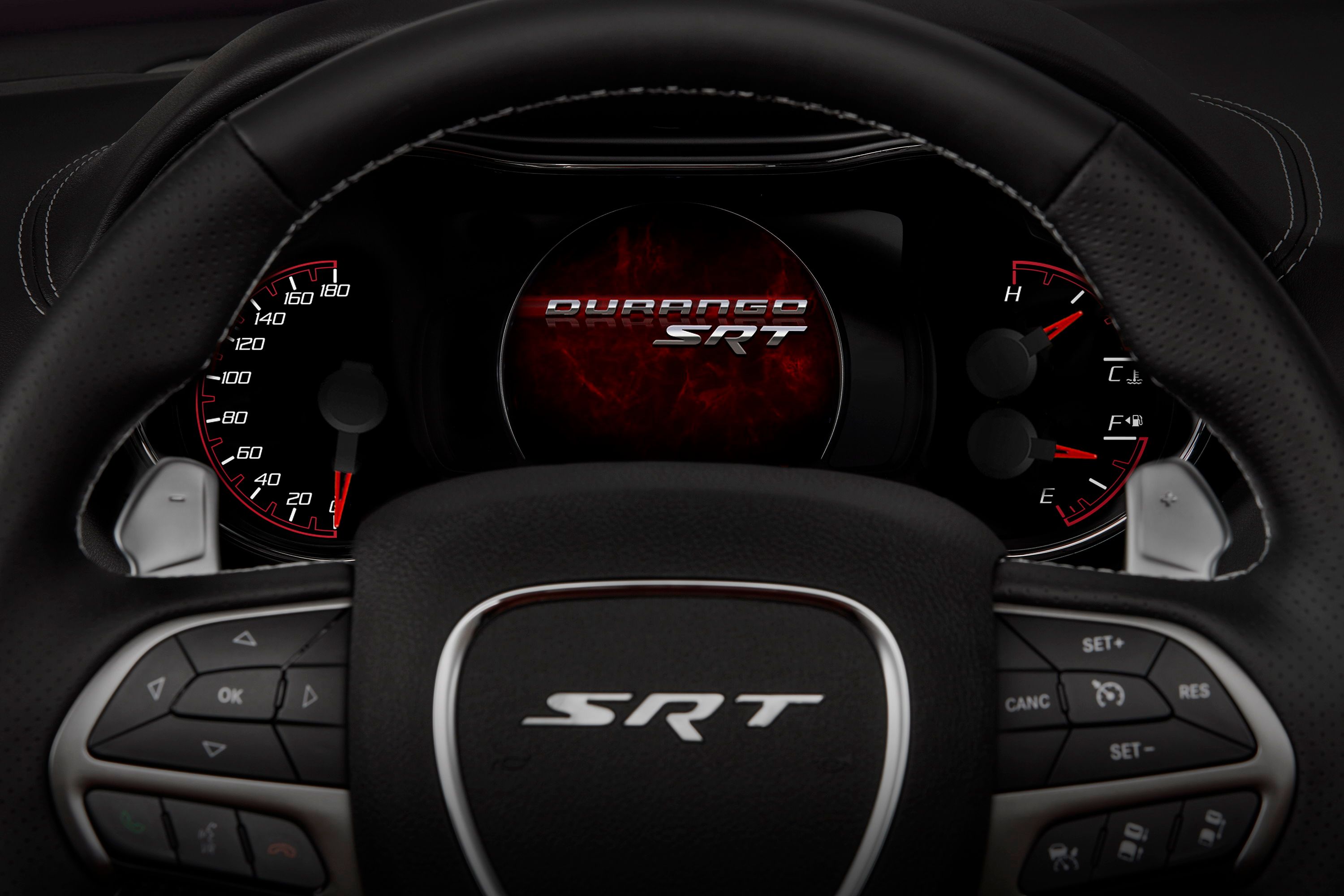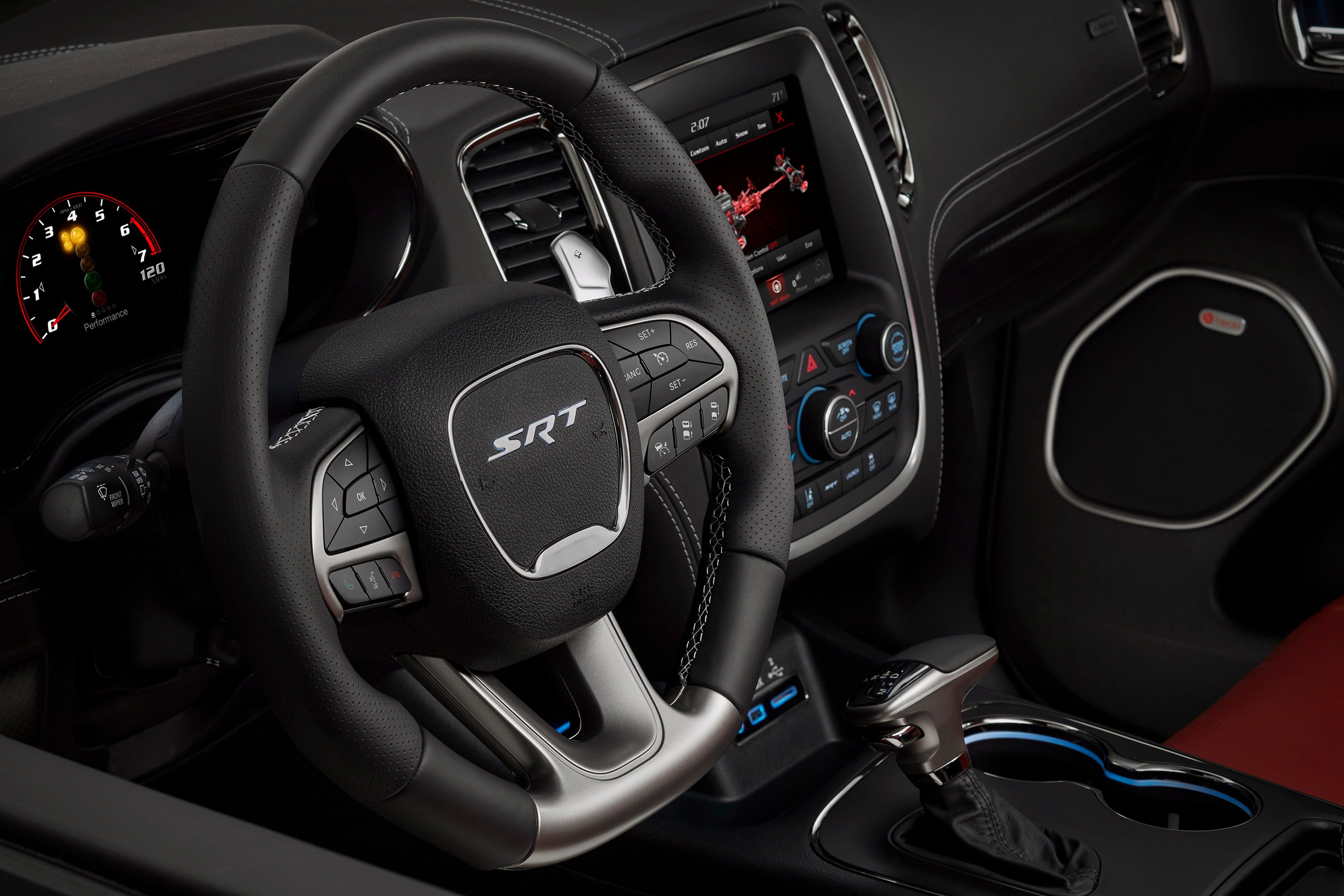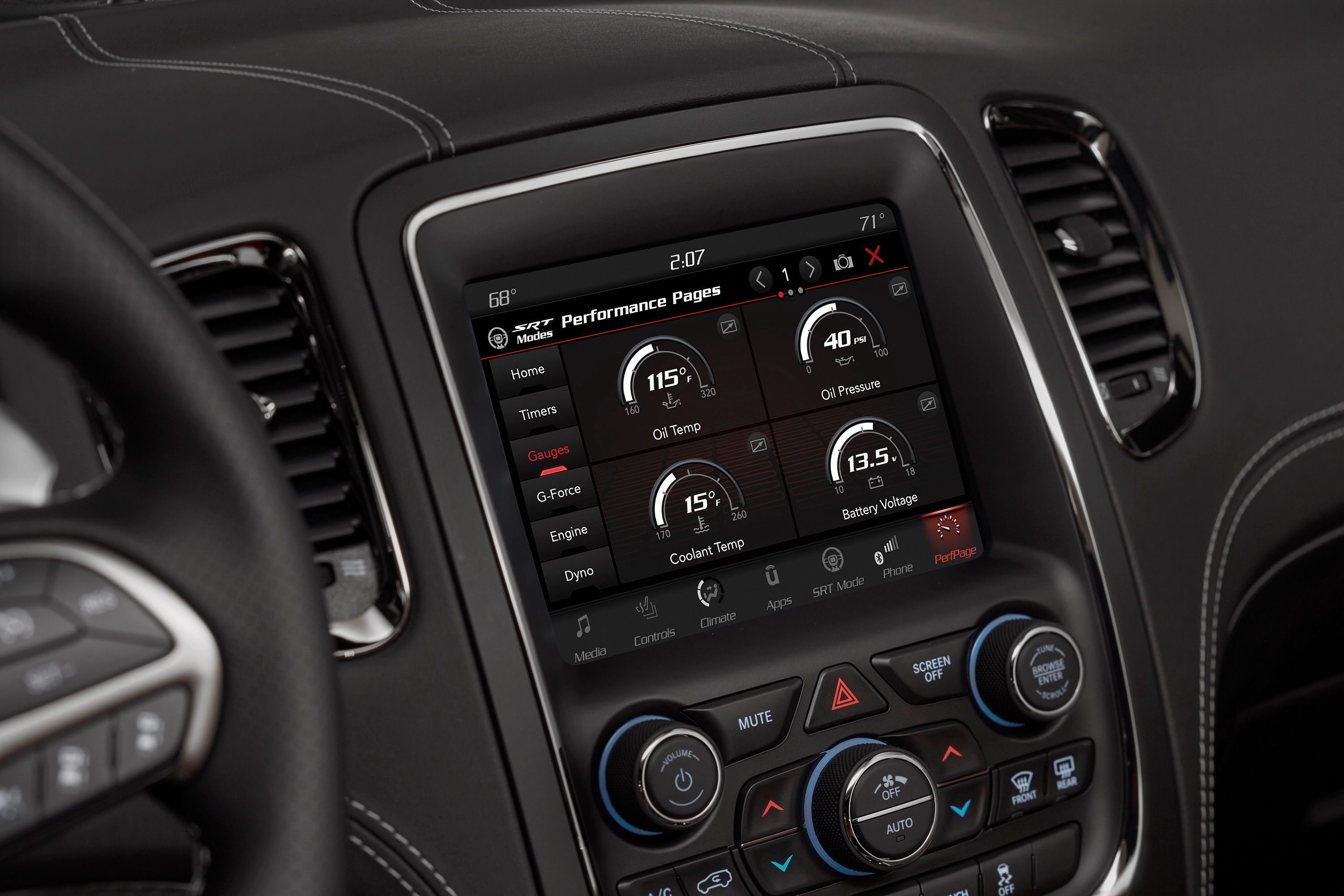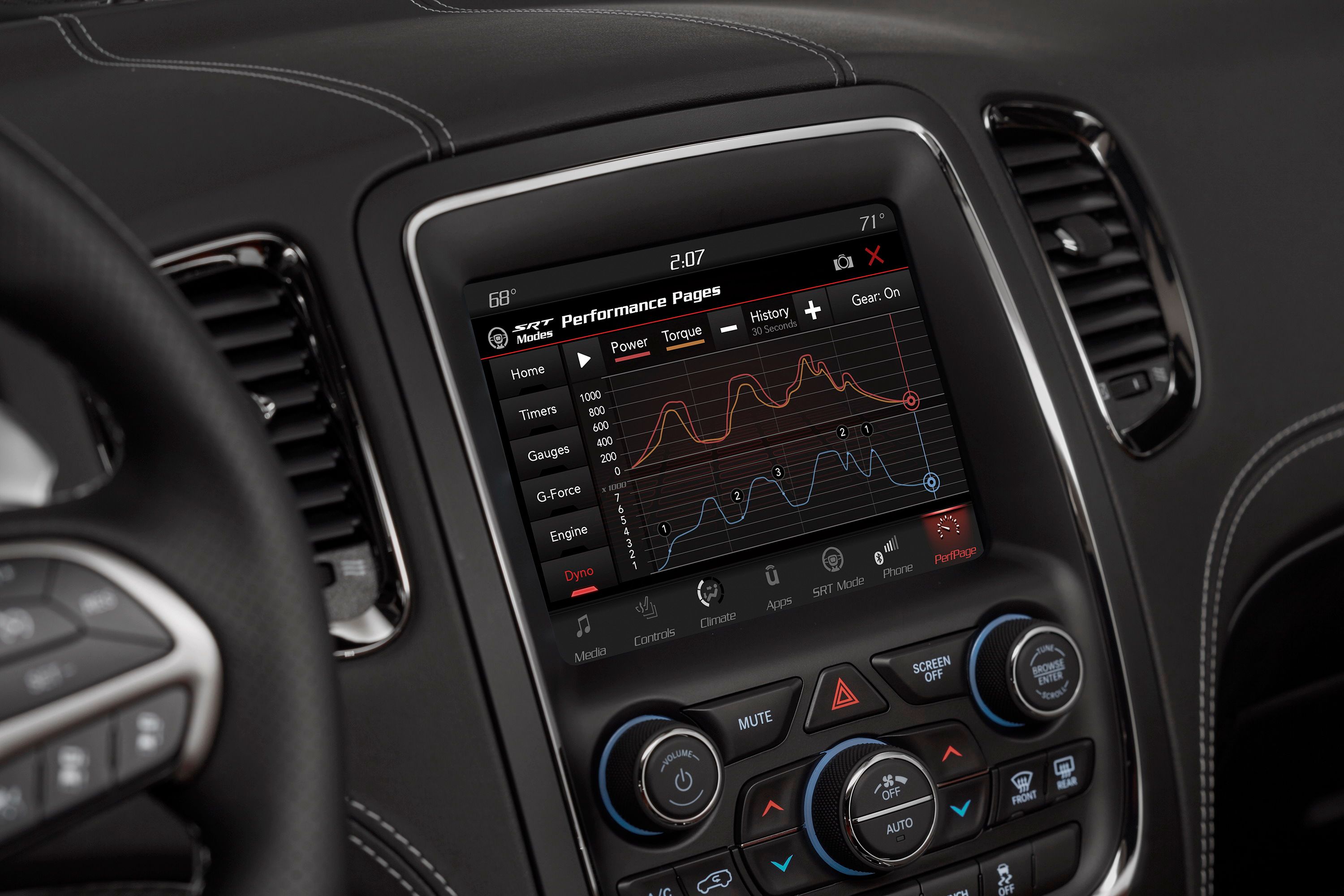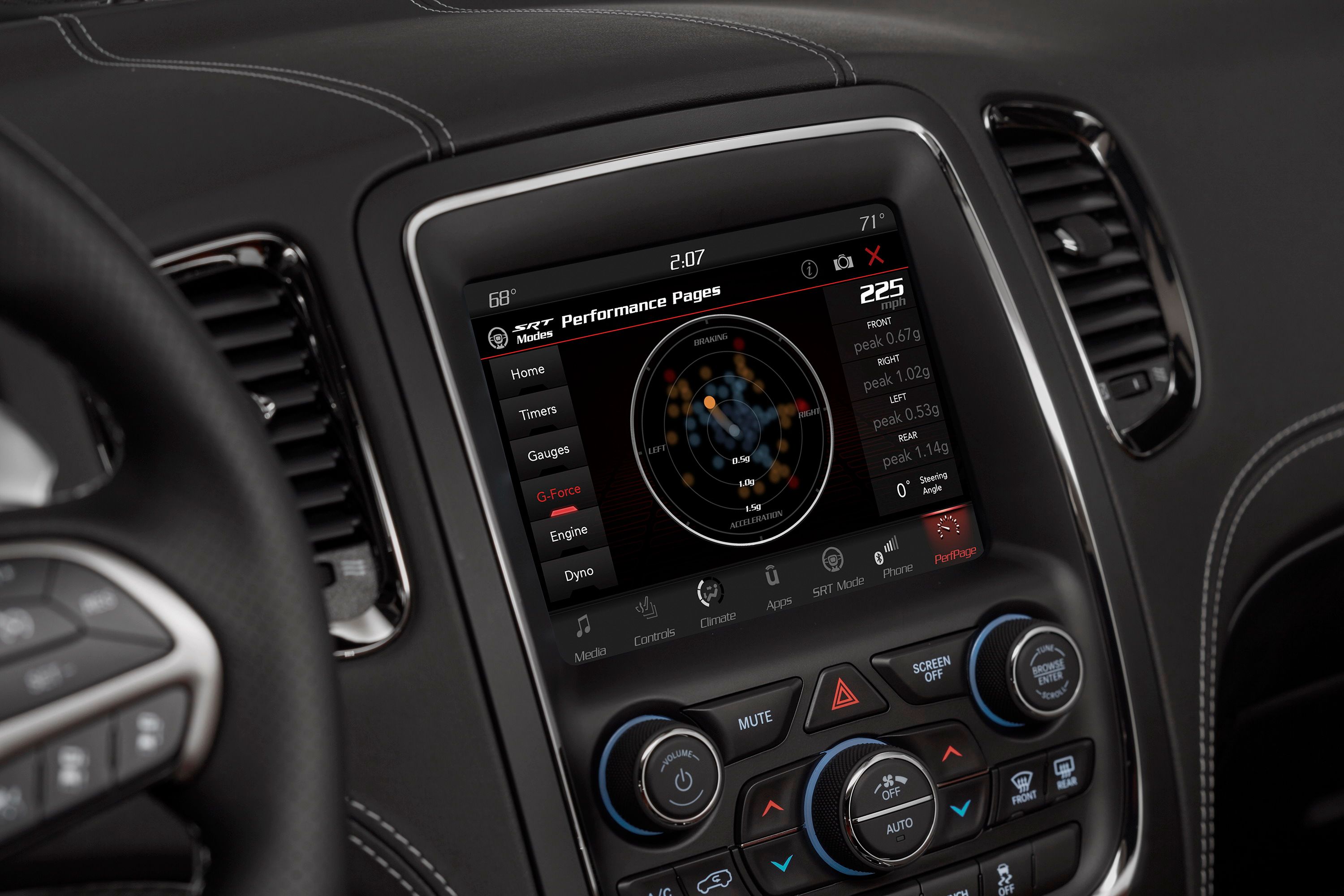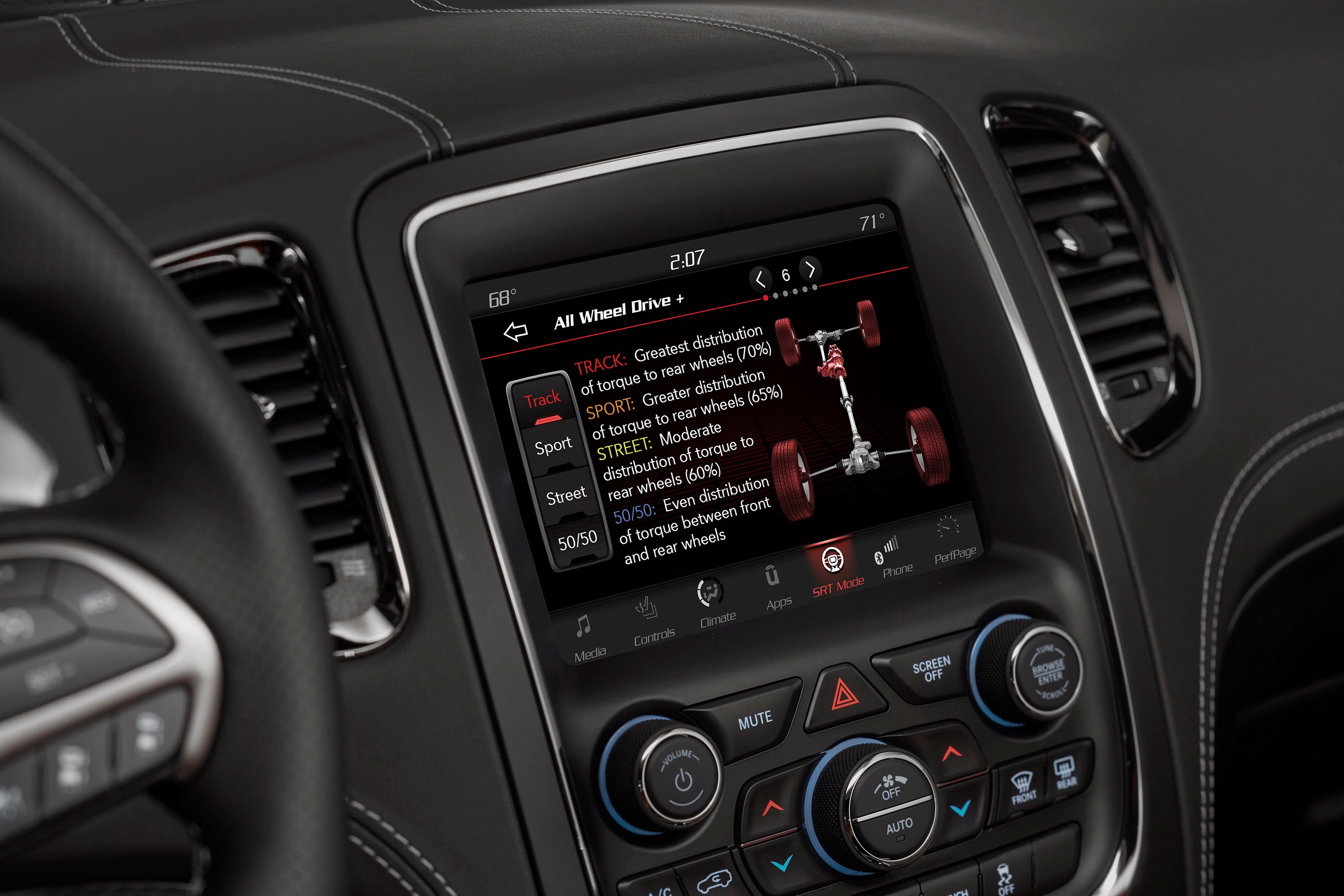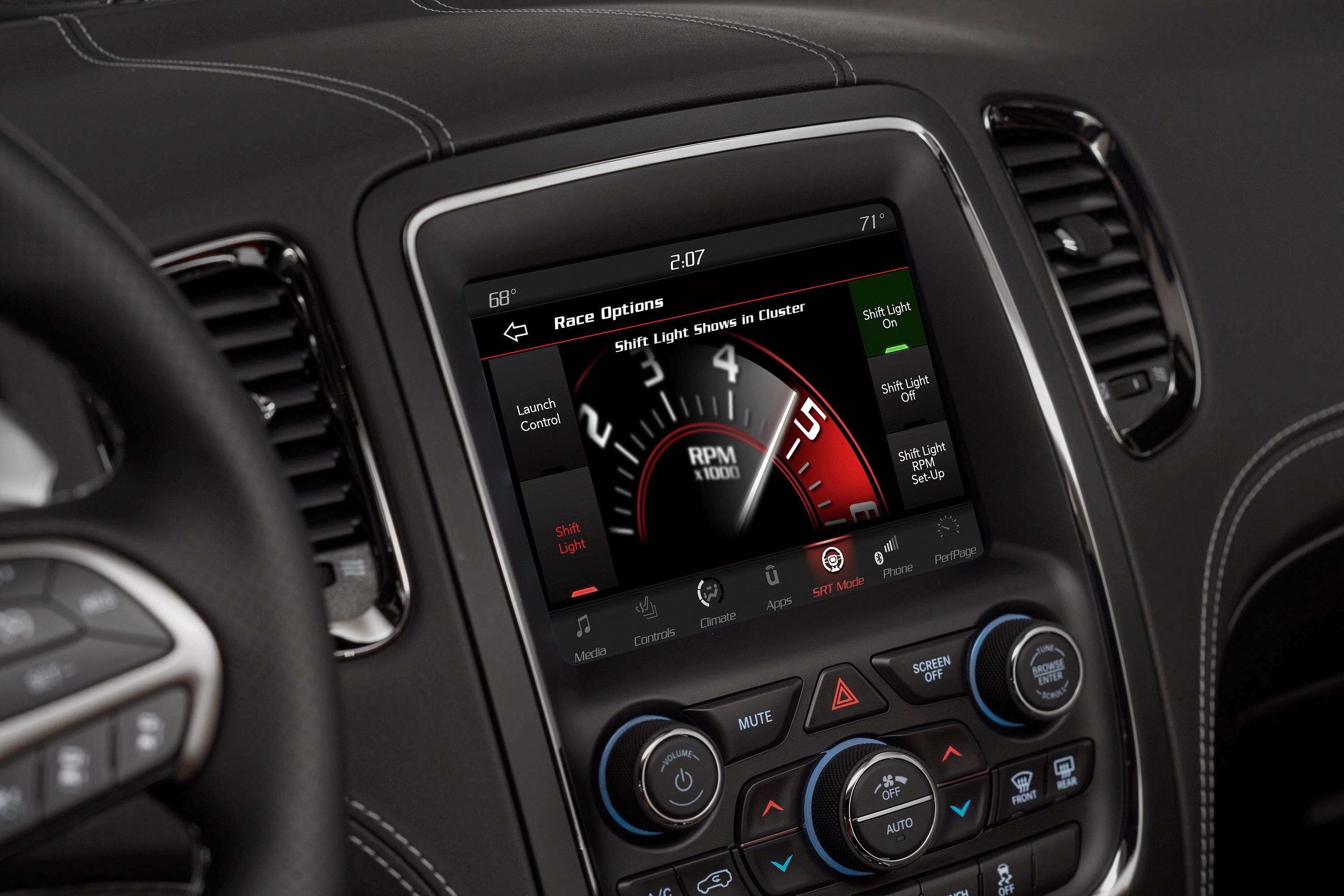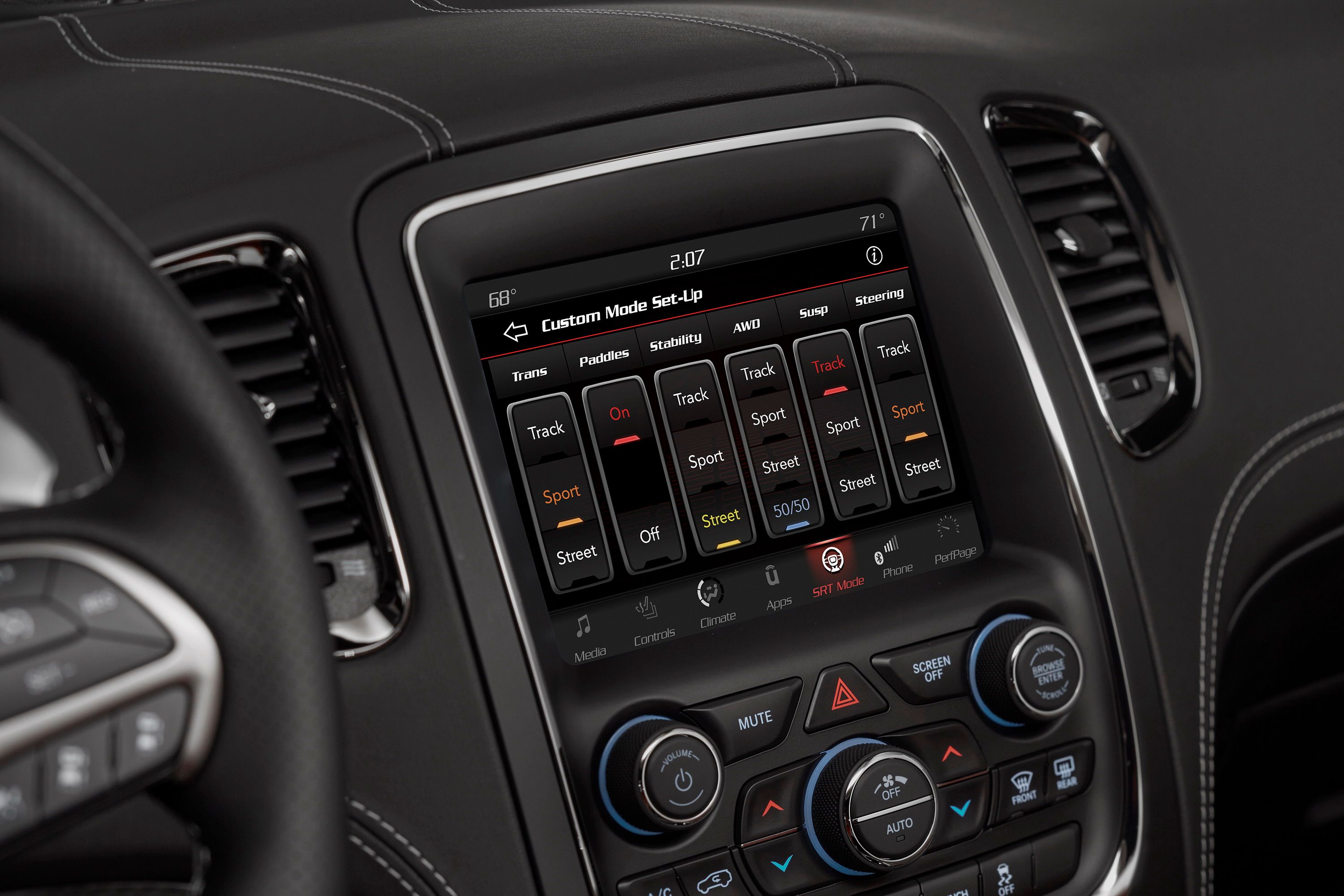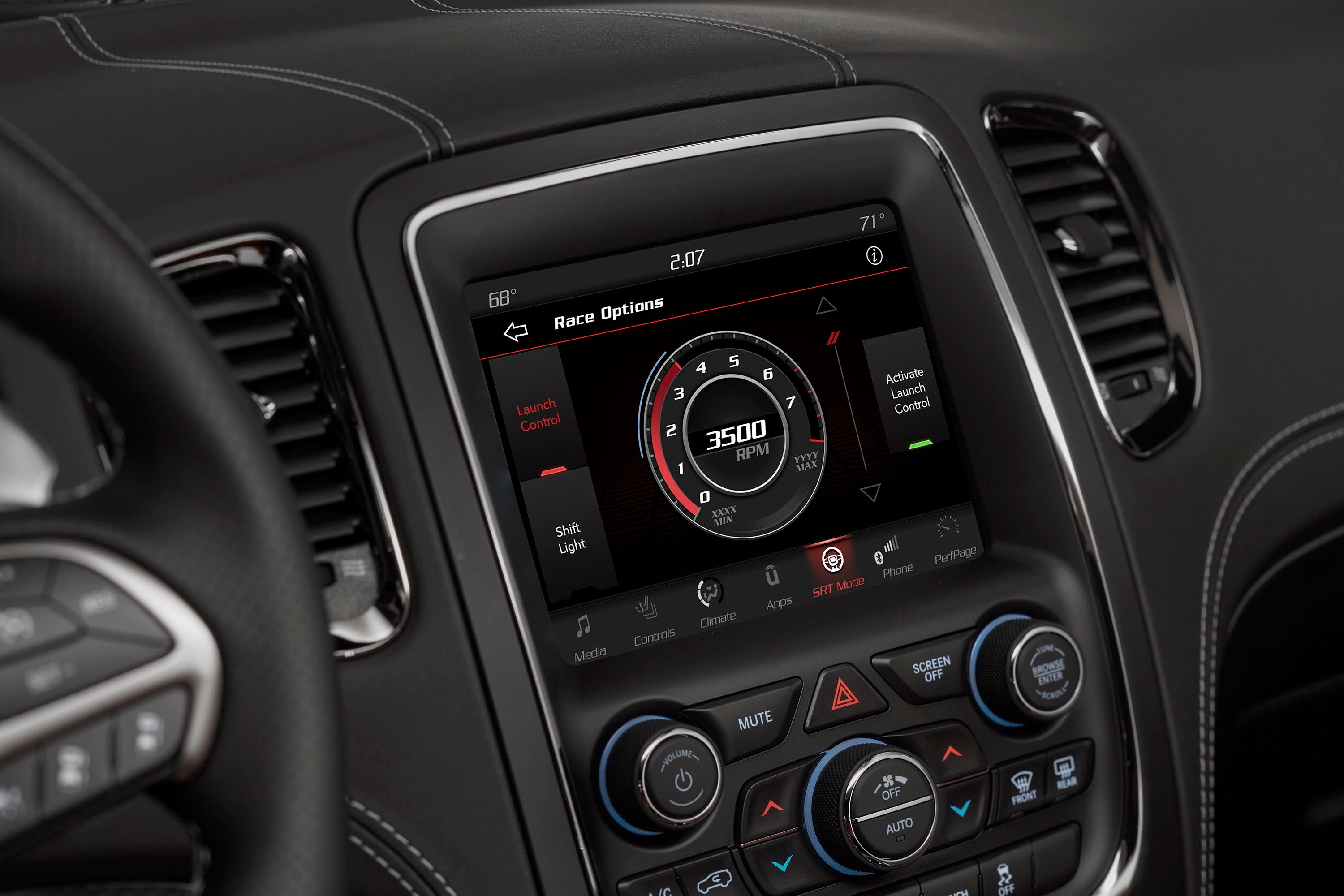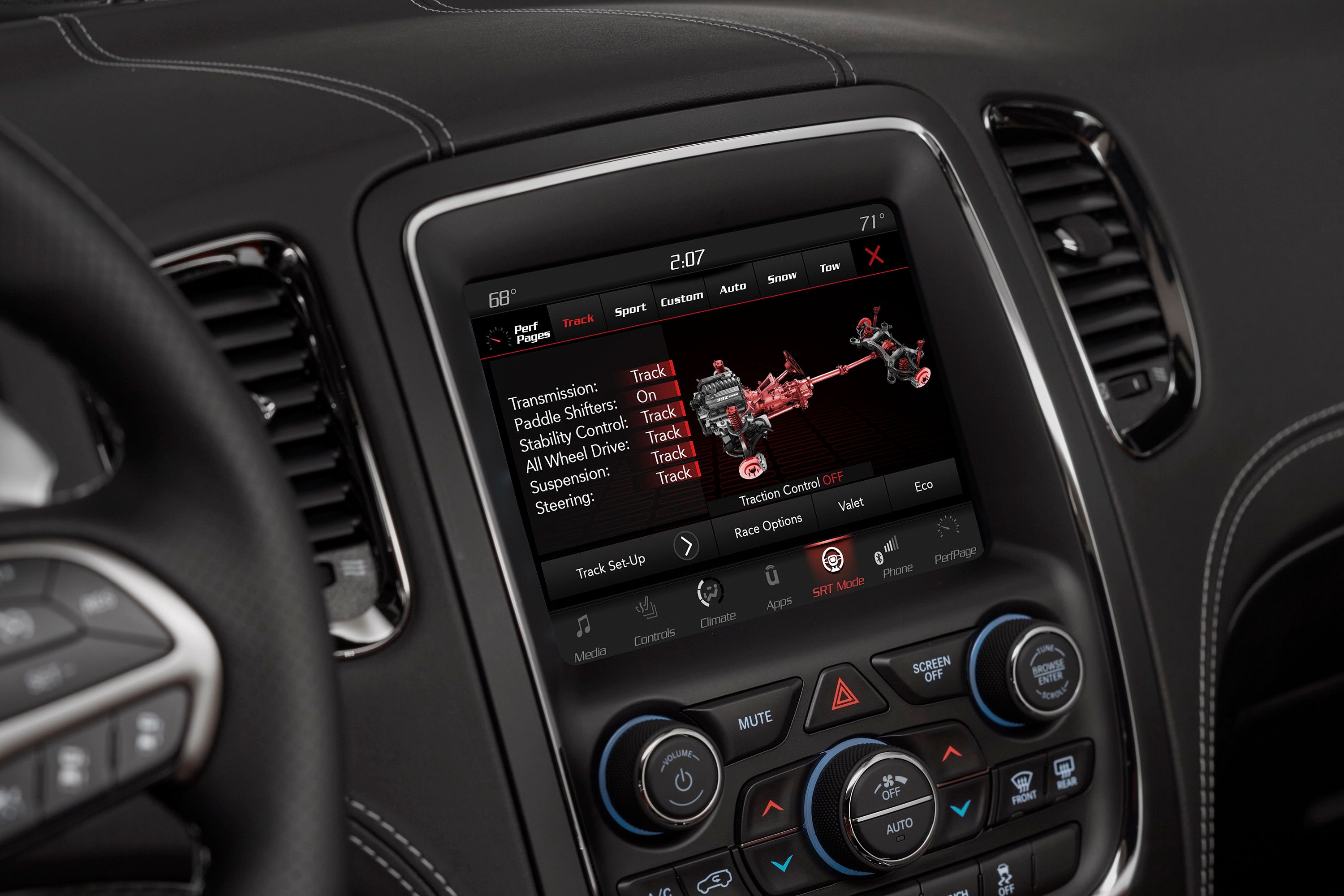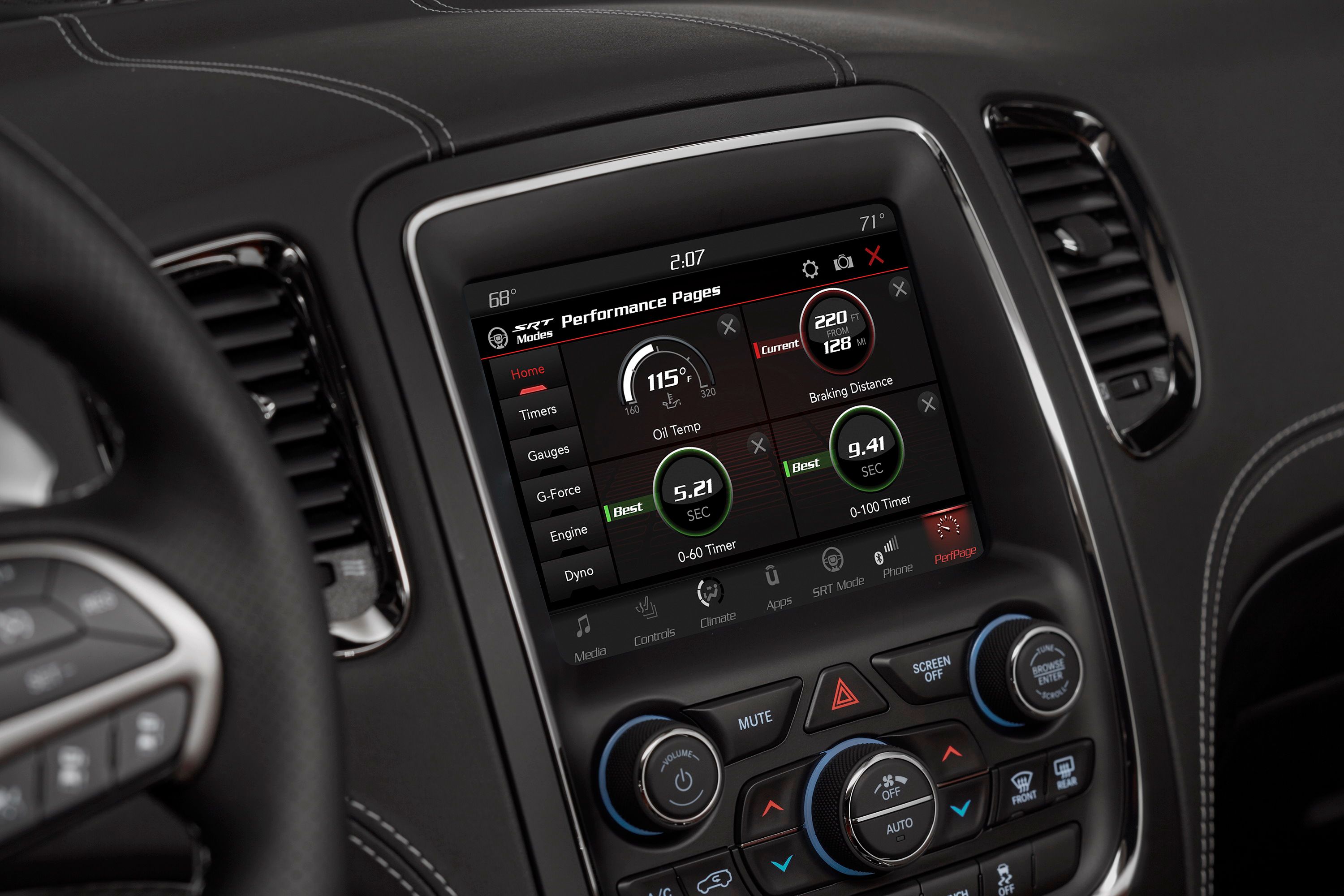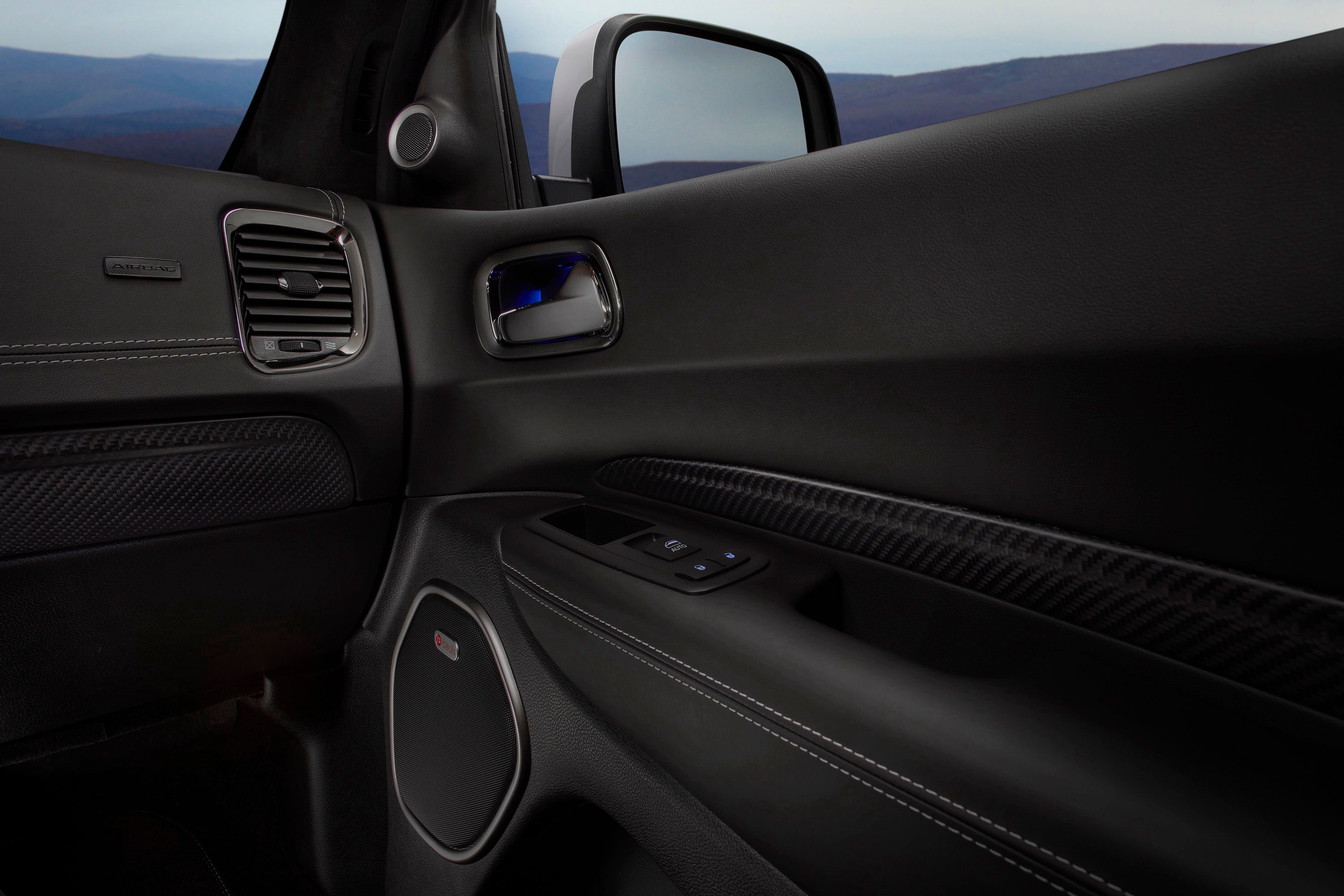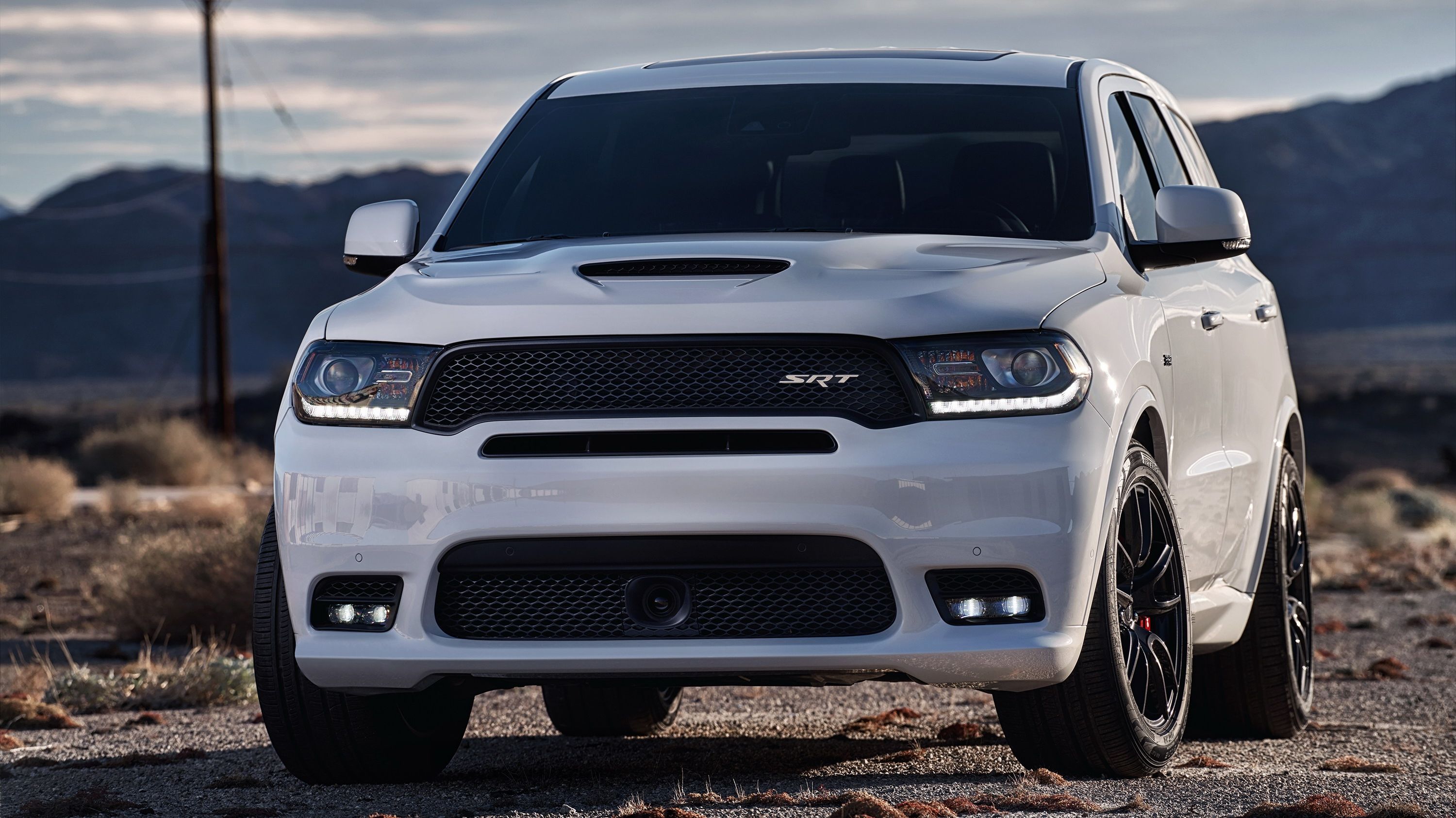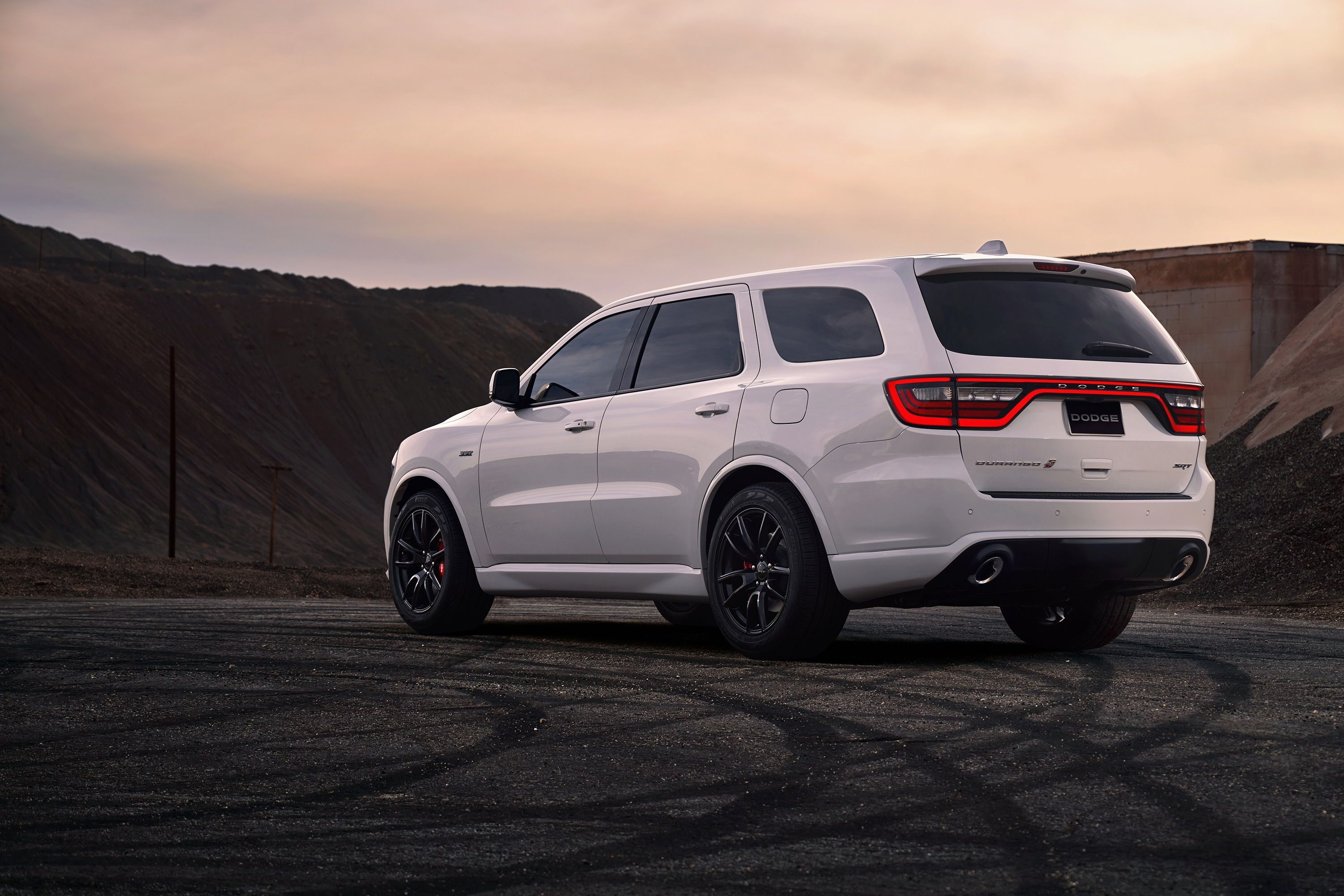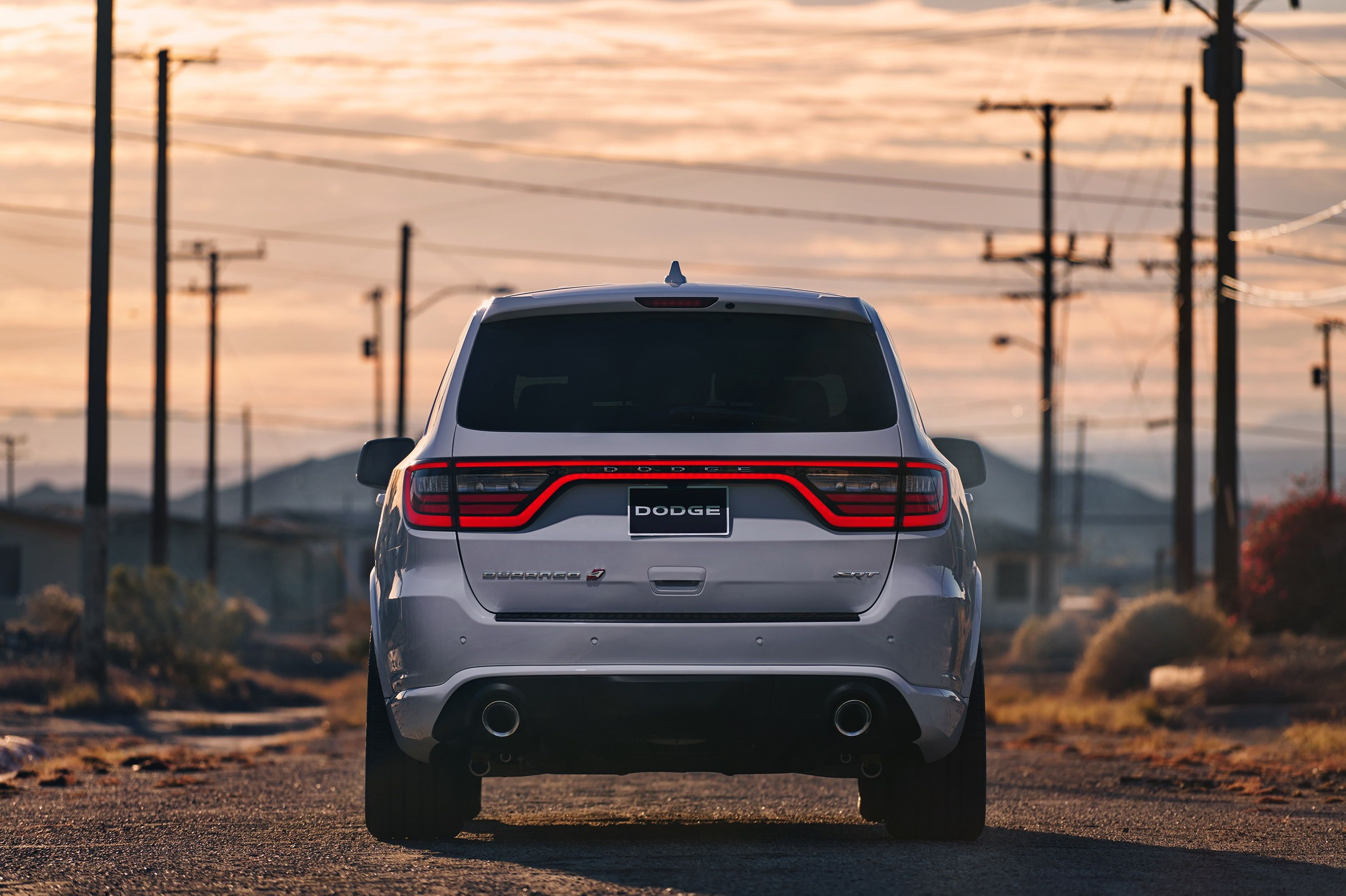The Dodge Durango started life as a midsize, body-on-frame SUV in 1998 and became a full-size SUV for its second generation, which ran from 2004 to 2009. That second-gen model saw declining sales year after year, going from 137,148 sales for the 2004 model year down to just 3,521 for the 2009 model year. The Durango then fell out of production for 2010 (only 572 examples were sold that year), and by the time the 2011 model year came around, Dodge had redesigned the Durango into a full-sized unibody that was sportier than ever with a more upscale interior. Engine options for the current generation have been limited to a 3.6-liter Pentastar and Dodge’s 5.7-liter Hemi, but that is about to change now that Dodge is introducing the Dodge Durango SRT, which includes an even sportier exterior and interior package to go with a 6.4-liter Hemi (392 cubic-inches,) something that makes the Durango the fastest SUV in its class with an output of 475 ponies and 470 pound-feet of torque – that’s one mean machine.
If it seems to you like the Durango was ready to see its fourth-generation before it got yet another trim level, then I would have to say I agree. The current generation has been on the market since 2011 and was updated for the 2014 model year. But, FCA is trying to hold off on pushing out so many new-gen models and is instead focusing on coming up with new ways to bring interest to the models that are actually due for an update. The most obvious car this is happening to is the Dodge Challenger with its new SRT Demon, but the Durango is another one of those models that will soldier on for another year or two. But, at least you can now get it with that 6.4-liter Hemi wrapped in a very sexy package with room for six. With that said, let’s check this baby out and see what all it’s working with!
Updated 07/06/2017:} Dodge has finally announced pricing for the Durango SRT. It starts out at $62,995 before options, taxes, and delivery. Check out the “Prices” section below to learn more about it, how it compares to other time levels, and the competition.
Continue reading to learn more about the Dodge Durango SRT.
2018 Dodge Durango SRT
- Make: Array
- Model: 2018 Dodge Durango SRT
- [do not use] Vehicle Model: Array
Exterior
The Durango SRT features a balanced package that includes updates inside and out, as well as under the metal. On the outside, the first thing you’ll notice is that the SRT now has a new face that includes a sportier but smaller grille that rocks an SRT badge to go with a larger and wider air dam and dual LED fog lights in each corner. The other major thing here is that the front fascia itself doesn’t have that ledge below the grille, but instead a thin air intake that is almost as wide as the grille itself. To the naked eye, the headlights appear the same, however, the inner area of the lens has been modified a bit and the turn indicator is now clear with an orange light. Rounding out the front end is a new hood that aggressive and features a functional cold air intake and heat extractors – something few probably thought they would ever see on the current-gen Durango.
Meanwhile, the side profile doesn’t see too much in terms of SRT-specific design cues outside of a set of wheels that look similar to those on the R/T, but are finished black, and the Hemi badge on the fenders. The brake system has been upgraded to include bright red, Brembo calipers that look quite nice behind those black wheels. Around back, it’s the same story, with the only noticeable difference being the fascia insert down below that now fully encases the exhaust outlets. Those outlets, by the way, are also chrome. Otherwise, the only thing that makes the rear end stand out is the SRT badge on the rear hatch.
The following exterior colors are available on the Durango SRT:
- Billet Clear Coat
- Blu by Yu Pearl Coat
- Bruiser Grey Clear Coat
- Dark Black Clear Coat
- Granite Clear Coat
- Ocean Blue Pearl Coat
- Octane Red Pearl Coat
- Redline Pearl Coat
- Sangria Metallica Clear Coat
- White Knuckle Clear Coat
- Vice White
Exterior Dimensions
|
Wheelbase (Inches) |
119.8 |
|
Length (Inches) |
201.2 |
|
Width (Inches) |
77.1 |
|
Height (Inches) |
71.9 |
|
Track, Front/rear (Inches) |
64.4/64.7 |
Competing Designs
When it comes to the Durango SRT, it’s kind of like a wild car among American SUVs. You can compare it to models like the GMC Yukon, Ford Expedition, and even the Chevy Tahoe, but none of them have the sheer power that makes the Durango SRT what it is. Sure, they all have three rows of seats when properly equipped, but you won’t be pulling 4.4-second sprints to 60 mph. You could say that the SRT is a bit unconventional, so we also have to go unconventional when looking to the competition as well. Fair warning: you’ll initially want to burn me at the stake for what comes beyond this paragraph, but if you want something that really competes, you have to talk to our German neighbors.
The first model that comes to mind as a decent competitor is the Mercedes-AMG GLS63. It seems like a pretty wild comparison I know, but it has comparable looks, power, and performance, so it’s not quite as wild as you might think. In the front, you’ll find that the GLS63 has a bit more aggression to it, and it’s really hard to beat the AMG grille. The air dam takes up most of the lower fascia and opens up a little more in each corner to create the corner vents. An elevated lip of sorts lifts up in the middle to give the front end a bit of a snarling took. The side profile is just as tame as that of the Durango SRT, but you’ll notice it has a similar, boxy design. The big difference here, and arguably what makes the GLS63 look better, that the rear quarter glass of the GLS63 blends almost seamlessly with the rear door glass as to where the SRT’s is clearly separated by a pillar. It’s a much sportier and elegant look for the AMG, so it wins with a technicality in overall profile. Around back, both models are rather uneventful and sport a mild rear overhang. The Durango is more refined while the AMG’s is tilted upward just the slightest bit. The Durango wins when it comes to rear design just because of the rear lights that wrap around the rear quarters and cross the entire width of the rear hatch. It brings just the right amount of color into play and tops the boring look of the GLS63’s rear hatch. Down below, the AMG gets a more prominent diffuser, while the SRT’s is smooth as a baby’s bottom. Both feature exhaust outlets that are integrated into the rear diffuser. Truth be told, you’ll be happy with the appearance of either model, but the GLS63 is the only model you need to consider.
Since we’ve already opened the can of worms that brought about the comparison of a Dodge to a Mercedes (how dare I?,) I might as well slide my head under the guillotine and bring the BMW X5 into the mix. In comparison, it’s a little more refined in comparison to the GLS63, but could be measured to have the same amount of aggression and style in comparison to the Durango SRT. Up front, you’ve got the kidney grilles, but down below, the X5 is more reserved with a short but wide air dam and a pair of fake vents that are accented by a trim insert to give it a bit of an edge. You’ll find that the X5’s design actually looks bit smaller thanks to the long stretched out headlights and smaller grille elements, but don’t let that fool you. Like the SRT and GLS63, the side profile isn’t anything to write home about. And, if you're sitting in that third row, you’re going to find yourself with a much smaller piece of glass to look through. The X5 does have a much sharper body line below the waistline compared to the others, so if you’re someone who likes to stick out with a sharp look, the X5 may be for you. Around back, the X5 is quite similar to the GLS63 in the effect that the taillights don’t extend across the rear hatch. However, the X5 also has the extensions on the sides of the rear overhang which gives it more of a sportier appearance. The exhaust outlets are integrated into the rear fascia while there is skid plate in place of the diffuser-like elements found on the Merc and the Dodge.
As far as appearances go, it really boils down to taste, but neither are a bad choice. I personally prefer the Durango SRT, just because it’s the most aggressive American SUV you can get, and there’s just something about a Hemi that even a hand-built AMG engine can’t compare to. But, we’ll talk more about that later. Let’s see what the interior has in store for us!
Exterior Dimensions
|
Mercedes-AMG GLS63 |
BMW X5 |
Dodge Durango SRT |
|
|
Wheelbase (Inches) |
121.1 |
115.5 |
119.8 |
|
Overall length (Inches) |
203.2 |
193.3 |
201.2 |
|
Overall height (Inches) |
72.8 |
69.4 |
71.9 |
|
Overall width (Inches) |
84.3 |
76.3 |
77.1 |
|
Track front/rear (Inches) |
66.0/66.8 |
64.7/65 |
64.4/64.7 |
Interior
Inside, the Durango got quite a bit of attention, but it is now the range-topping model, so that’s to be expected. Most notably is the hand-wrapped and stitched dashboard that is now soft to the touch and features white contrast stitching like the rest of the upholstery. The shift control knob has been replaced by a T-handle shifter, and the center console is now accented by glossy black chrome. At a glance, the steering wheel may look the same, but it’s also wrapped and stitched, but not features a flat bottom with the silver coloration extended from the bottom spoke. The hub of the steering wheel also features an SRT logo. Ahead of the steering wheel sits a familiar instrument cluster, however, it has been updated to include SRT graphics and a 180-mph speedometer.
Like the center console, the trim around the HVAC vents and door handles are also glossy black chrome. While the pedals down below get the aluminum treatment. First and second rows now how captain's chairs that are heated and ventilated, and included embossed SRT logos. The seats come standard with Nappa leather and suede inserts with silver-stitched SRT logos while Demon Red Laguna leather with embossed SRT logos is an option. Sometime after the SRT’s official release, a carbon-fiber instrument panel and door bezels will be offered as an option as well. Finally, a set of velour-bound floor mats with SRT logos come as standard equipment and help increase the uniqueness of this range-topping model.
As far as technology goes, the same infotainment system carries over. However, it has been updated to include new SRT performance pages to go with phone connective via Android Auto and Apple CarPlay. HD Radio is also a standard feature as is the ability to download apps and a five-year SiriusXM Travel Link and Traffic subscription. The audio system is enhanced by a BeatsAudio setup with nine speakers and a 506-Watt amplifier.
Comfort of the Competition
The inside of the Durango SRT is straight up American design but, it still manages to compete with the German’s pretty well. The GLS63, for example, is pretty well equipped, but it does have some outdated styling. Take the weird, early-2000s era keypad that resides in the center stack – it’s just out of place in a modern Mercedes and is one place where the Dodge definitely shines brighter. The flat-bottom steering wheel, semi-digital instrument cluster, and even the glossy trim inserts all give enough modern ambiance to get over the little things like that keypad. There’s also an updated infotainment display that looks like it’s a cousin of the iPad, heated and cooled front seats with a massage function, and let’s not forget about the optional heated and cooled cup holders – now that’s luxury right there. All of the seats are comfortable, and there is seating for seven. More importantly, however, is that there’s enough room in the third row for larger adults. That third row also folds down electronically for extended cargo room if needed.
The current X5 is set for a facelift for the 2018 model year, so the current model is actually a few years old. It’s still fairly modern in its own respect, though. The seats aren’t quite as supportive as those in the Merc or the Dodge, but the dash isn’t anywhere near as gaudy and features precise and clear-cut character lines. The infotainment display is a 10.2-inch unit but is wide and short in nature. Poplar Wood trim comes standard throughout while the seats are wrapped in Dakota and Nappa leather. Like the other models we’ve discussed here, the X5 does offer seating for seven, but it’s not quite as spacious in that third row as the GLS63. The rear seat does come with a 40-20-40 split that increases the cargo room from 23 cubic-feet up to 66 cubic-feet. Some models get a rear camera with Top View, but it’s not quite as good as Mercs 360-degree camera, either. As far as interior options go, you can go with the Luxury Line which will give you a sport leather steering wheel, or you can go with the M Sport package that includes Sport seats, your choice of aluminum, Fineline Oakwood, or Poplar wood trim to go with an M steering wheel and Anthracite headliner. Obviously, if you know Bimmer, you want to go for the M Sport package, but it will up the price a bit and possibly push it farther out of range with the Durango SRT.
All three interiors are desirable in one way or another, but if you’re really looking for interior space, you may find that the GLS63 is more in line with what you want. But, the X5 and Durango SRT don’t exactly disappoint in that department either, so it really comes down to whether or not you prefer a German take on things or you’re willing to go an American design. If you’re considering the BMW, however, you’ll probably want to wait until later in 2017 as the 2018 model should be hitting dealers something in the fourth quarter.
Interior Dimensions
|
Mercedes-AMG GLS63 |
BMW X5 |
Dodge Durango SRT |
|
|
Headroom front/middle/rear (Inches) |
41.2/40.0/38.9 |
40.5/38.8 |
39.9/39.8/37.8 |
|
Legroom front/middle/rear (Inches) |
40.3/38.5/35.0 |
40.4/36.6 |
40.3/38.6/31.5 |
|
Shoulder room front/middle/rear (Inches) |
58.5/58.3/50.5 |
60.5/58.3 |
58.5/50.4/50.4 |
|
Cargo Capacity seats up-folded (cu ft) |
16.0-93.8 |
22.9-66.0 |
17.2-84.5 |
Drivetrain
All of the updates to the exterior and interior really help make the SRT standout in the Durango lineup, but what’s lurking under the hood and how power is delivered to the ground is what really sets this baby apart from the pack. To start off, the SRT gets a 392 cubic-inch, 6.4-liter Hemi V-8 that pumps out a total of 475 horsepower at 6,000 rpm and 470 pound-feet of torque 4.300 rpm. That engine is paired to a TorqueFlight Eight-speed automatic that has SRT calibration and a pair of paddle shifters for those who want to stay in control. Power is routed to all four wheels vehicle via a performance-tuned all-wheel-drive system which is able to distribute torque based on the various SRT drive modes. And, remember that function air duct on the hood I mentioned earlier? Well, according to Dodge, it helps to drop intake air temperature by as much as 18 degrees under optimal conditions. Not bad. On a side note, the exhaust system has been tuned to deliver the perfect sound, which is also assisted by the 2.75-inch exhaust pipe from the headers back.
The automatic transmission and AWD system sends power to the four, 20-inch Goliath wheels that are wrapped in Pirelli 295/45-series, ZR-rated, all-season tires. As an option, Pirelli P Zero three-season tires can be had, as can 20-inch forged aluminum wheels with a new five-spoke design and “Black Noise” finish. The transmission itself takes information like acceleration, grade changes, tire shift, gear demands, and the like to determine the best automatic shifting map, while the rev-match function will control the throttle between shifts for better performance and smooth shifting when you’re in the zone. Launch control also comes as standard equipment and is said to “mimic a professional driver’s inputs” which allows for consistent straight-line acceleration. With that said, Dodge has yet to mention what kind of top speed figures you can expect, but has said that the SRT can hit the 60-mph sprint in 4.4 seconds and can run a quarter-mile in just 12 seconds!
As far as suspension goes, the SRT gets a short- and long-arm independent front system with coil springs. There are specially tuned Bilstein dampers that are adaptive based on drive modes selected and current road conditions. In the rear, you’ll find a multi-link suspension with coil springs, Bilstein ADS, and independent upper links. Compared to other Durango models, the springs in the front end are three-percent stiffer while the rears are 16-percent stiffer. The rear sway bar is also 18-percent stiffer which means significantly less body roll and better high-speed cornering ability. All that power has to be kept under control, so the brake system has been updated with Brembo six-piston calipers in the front and four-piston units in the rear. 15-inch slotted and vented rotors can be found up front while the rear makes due with 13.8-inch rotors.
The Durango SRT comes with a total of seven drive modes, which sounds like a lot, but Dodge pretty much thought of everything. They are setup as follows:
|
Auto |
Suited for cruising and relaxing with longer shift times, relaxed steering, and relaxed suspension for a smoother ride. |
|
Sport |
Sport mode brings about tightened suspension and increased steering gradient. Shift speeds are increased by 23 percent between first and fourth gear while the stability control system is more relaxed to allow more spirited driving. |
|
Track |
Track mode is designed for smooth, dry surfaces and increases suspension stiffness to the maximum setting while the steering is tightened up for maximum response. Shift speeds between first and fourth gears are increased by 50 percent. |
|
Snow |
This mode defaults to second gear on take off to provide better traction. The AWD system is set to distribute torque evenly between the front and rear while the stability is set to full-on. |
|
Tow |
The AWD system distributes torque evenly between the front and rear while the ESC system enables trailer sway control. An active noise cancellation system is also activated to cut down on engine noise during high engine loads. |
|
Valet |
This mode is designed to keep others who are driving your AWD beats from playing too much. The ECU is mapped to mimic that of a Charger V-6, including horsepower and torque delivery. It also locks out access to first gear (no burnouts of the valet guy) and upshifts happen much earlier. Steering and suspension automatically adjust as needed. The paddle shifters and launch control system are disabled, while stability control is set to maximum. |
|
Eco |
This mode provides second-gear starts and a revised shift schedule to provide better fuel economy. Dodge’s “Fuel Saver Technology” is said to provide extended range in this mode. |
|
Drift |
Bet you didn’t count how many modes we’ve covered! There’s no drift mode. We just wanted to see if you’re paying attention. How cool would that be, though? |
Drivetrain Specifications
|
Engine |
6.4-liter Hemi V-8 |
|
Horsepower |
475 HP @ 6,000 RPM |
|
Torque |
470 LB-FT @ 4,300 RPM |
|
Transmission |
TorqueFlight Eight-speed automatic |
|
0-60 mph |
4.4 seconds |
|
Quarter-mile |
12 seconds |
|
Curb Weight |
5,510 Lbs |
|
Payload |
1,350 Lbs |
Competing Performance
With the Durango SRT having 475 horsepower and 470 pound-feet of torque on tap, it should be no surprise that we’ve had to look to Germany to find an SUV that could actually compete with it performance-wise. And, if you know the GLS you’re probably already arguing that it is much more powerful with 577 horsepower and 561 pound-feet of torque from a 5.5-liter, handcrafted, V-8. And, you’re right, but the big difference here is weight and general aerodynamics. Dodge hasn’t released the SRT’s drag coefficient, but it is 244 pounds lighter, as the GLS63 tips the scale at almost three ton (5,754 pounds, to be exact.) The SRT will get to 60 mph in 4.4 seconds, and that’s 0.1 seconds fast than what the GLS63 can do. That’s right; the GLS makes that sprint in 4.5 seconds using a seven-speed AMG SpeedShift transmission. Mercedes hasn’t published quarter-mile and top speed figures, but outside sources point to its top speed coming in at 174 mph and a sprint down the quarter-mile taking 12.8 seconds. Dodge has yet to tell us the SRT’s top speed, but we know it does the quarter mile sprint in 12 seconds flat. So, the GLS63 might be able to take it in the long haul, but in a run to 60 or a pass down the track, the SRT will kick the GLS63’s ass. As far as suspension goes, the GLS63 runs a fully independent AIRMATIC system with air springs and automatic 4-wheel level control that compensates for cargo, passengers, or body roll during spirited driving. It also allows for the suspension to be raised if you’re going off the beaten path and will automatically lower at higher speeds for better aerodynamic stability. Four-wheel traction control, 4Matic all-wheel drive, and ESP are all standard equipment.
Moving over to the BMW X5, you’ll need to go with the range-topping xDrive50i if you want to even try to compete on the performance front. And, even then, you’re going to pay out at least $72,000 for the same kind of power output found in the Durango but higher performance times. The 4.4-liter, turbocharged, V-8 delivers 445 horsepower and 480 pound-feet of torque. That’s 30 horsepower less and 10 pound-foot more than what the SRT brings to the table. But, that also means that the X5 does the 60 mph sprint in 4.7 seconds (0.3 seconds slower than the SRT) and tops out at an electronically limited 155 mph. There’s no official word on quarter-mile times, but the 2014 X5 could reportedly hit the quarter mile in 13.1 seconds so, like the GLS63, the X5 falls just a little short in the performance department. Not that the figures are bad for an SUV, the SRT is just a bit quicker. The range -topping X5 comes complete with BMW’s xDRive system that is integrated into the stability control, brake fade compensation, traction control and dynamic brake control systems for optimal control and. Up front, you’ll find double wishbone suspension while there’s a multi-link setup out back.
Even in this department, all three perform admirably for their sheer size and boxy nature. But, if you’re someone who wants the absolute best performance, you’ll have no choice but to steer clear of the German dealerships and find yourself talking to a Dodge salesman. I know, it’s pretty wild to say, but the proof is in the pudding, right?
|
Mercedes-AMG GLS63 |
BMW X5 |
Dodge Durango SRT |
|
|
Engine |
5.5-liter AMG V8 biturbo |
4.4-liter TwinPower Turbo V-8 |
6.4-liter Hemi V-8 |
|
Horsepower |
577 HP @ 5,500 RPM |
445 HP @ 5,500–6,000 RPM |
475 HP @ 6,000 RPM |
|
Torque |
561 LB-FT @ 1,750-5,250 RPM |
480 LB-FT @ 2,000–4,500 RPM |
470 LB-FT @ 4,300 RPM |
|
Transmission |
AMG SPEEDSHIFT® PLUS 7G-TRONIC |
8-speed STEPTRONIC Automatic |
Eight-speed automatic |
|
0-60 mph |
4.5 seconds |
4.7 seconds |
4.4 seconds |
|
Curb Weight |
5,754 Lbs |
5,095 Lbs |
5,510 Lbs |
Price
The Durango SRT is a menacing machine – much more so than the R/t or the Citadel Anodized Platinum. Those happen to carry a sticker price of $42,095 and $45,090, respectively. So, what will the Durango SRT set you back? Well assuming you can avoid the dealer markup trim, you’re looking at a minimum of $62,995 plus a $1,095 destination fee. When you take the competition into consideration, that price isn’t too bad at all, now is it? On a side note, considering the long list of standard features appointed to this monster of an SUV, I wouldn’t expect to see too many options listed on the order from either. What do you think of the pricing point? Let’s talk about it in the comments section below.
Non-Competitive Pricing
So, right now, we’re not sure what kind of sticker price the Durango SRT will sport, but with the GLS63 starting out at a staggering $124,100 and the BMW X5 xDrive50i starting out at $72,300, you might find that the Durango SRT offers exceptional performance and luxury for the price. That’s a pretty hard pill to swallow, but the SRT might top $80,000 at most, and even that seems a little high, so it’s kind of hard to turn your nose up at the SRT given the price point of it and the models it competes with performance-wise. Then again, that’s only entry-level price, and both the GLS63 and X5 have a number of optional packages that can significantly increase the amount you actually sign for. Of course, there’s also the $98,800 X5 M that will topple the Durango SRT if you’re really a Bimmer fanboy, but that’s on you.
|
BMW X5 xDrive50i |
$72,300 |
|
Cold Weather Package |
$550 |
|
Dynamic Handling Package |
$4,500 |
|
Ivory White Interior Design Package |
$1,950 |
|
Lighting Package |
$1,900 |
|
Mocha Interior Design Package |
$1,950 |
|
M Sport Package |
$3,000 |
|
Driving Assistance Plus Package |
$1,700 |
|
Executive Package |
$3,250 |
|
Mercedes-AMG GLS63 |
$124,100 |
|
Night Package |
$300 |
|
Accessory Chrome Package |
$260 |
|
Bang & Olufsen® BeoSound™ AMG Sound System |
$5,400 |
|
Rear Seat Entertainment system |
$1,950 |
Other, Less-Powerful Options
GMC Yukon Denali
The Yukon Denali technically sits in the semi-luxury category, but considering the Durango SRT comes with some pretty fine appointments inside and out, one could argue that the two reside in the category. As far as performance figures go, the Yukon Denali falls a little short, pumping out only 420 horsepower at 5,600 rpm and 460 pound-feet of torque at 4,100 rpm. Like the Durango SRT, it gets an eight-speed automatic with all-wheel drive. It doesn’t exactly have all of the fancy drive modes, paddle shifters, or performance-oriented goodies, but it’s pretty damn luxurious for a model that doesn’t come from our German neighbors. Unfortunately, that lack of power means you’ll lose a race against the new SRT any day, as the Denali with the 6.2-liter can hit 60 mph in about 6.8 seconds, at least 2.4 seconds slower than the new SRT. Top Speed is estimated around 108 mph, but this thing wasn’t designed for the same type of performance, so that’s to be expected. Pricing for the Yukon Denali starts out at $68,965 and can increase to well over $70,000 if you start selecting options.
Read our full review on the GMC Yukon Denali here.
Ford Expedition
Since we compared the Durango SRT to the Yukon Denali, it’s only fair that we compare it to the all-new 2018 Ford Expedition as well. It offers up an equal number of seats for passengers and offers a folding third row, large moon roof, and even wood trim. Of course, it comes with Ford’s Sync3 infotainment system and even has some wood trim throughout when properly equipped. On the performance front, however, it’s on the low side of the spectrum. It’s powered by a 3.5-liter EcoBoost V-6 with 375 horsepower and 470 pound-feet of torque on tap. It just made its debut at the Chicago Auto Show, so performance figures are a complete mystery, but don’t expect it to compete in any way, performance-wise, with any of the models we’ve discussed here today. Expect the Expedition to start out somewhere below $50,000 and climb to as much as $75,000 when fully equipped.
Read our full review on the Ford Expedition here.
Conclusion
I have to say; I think Dodge would be better off creating models like the Durango SRT and Challenger SRT Demon models later on after the new-gen models come out, but I can’t say that I’m disappointed with what Dodge has done here. I mean, after all, who would have thought that we would ever be able to compare any version of a Durango to something that wears and AMG badge and is motivated by a hand-crafted and very precise engine? I know I sure didn’t, but the proof is in the pudding. Sure, the Durango SRT might not be quite as nice on the inside, but it’s not all that far off – you have to give Dodge that. And, it’s a significantly cheaper proposition to the German models that I’ve discussed. It wasn’t that long ago that SUVs were facing a possible extinction as small, fuel-efficient cars took a strong hold on the market. But now, here we are with 12-second Durangos that compete against German vehicles that at one time had almost no worry when it came their American Equivalent. Oh, how times change.


